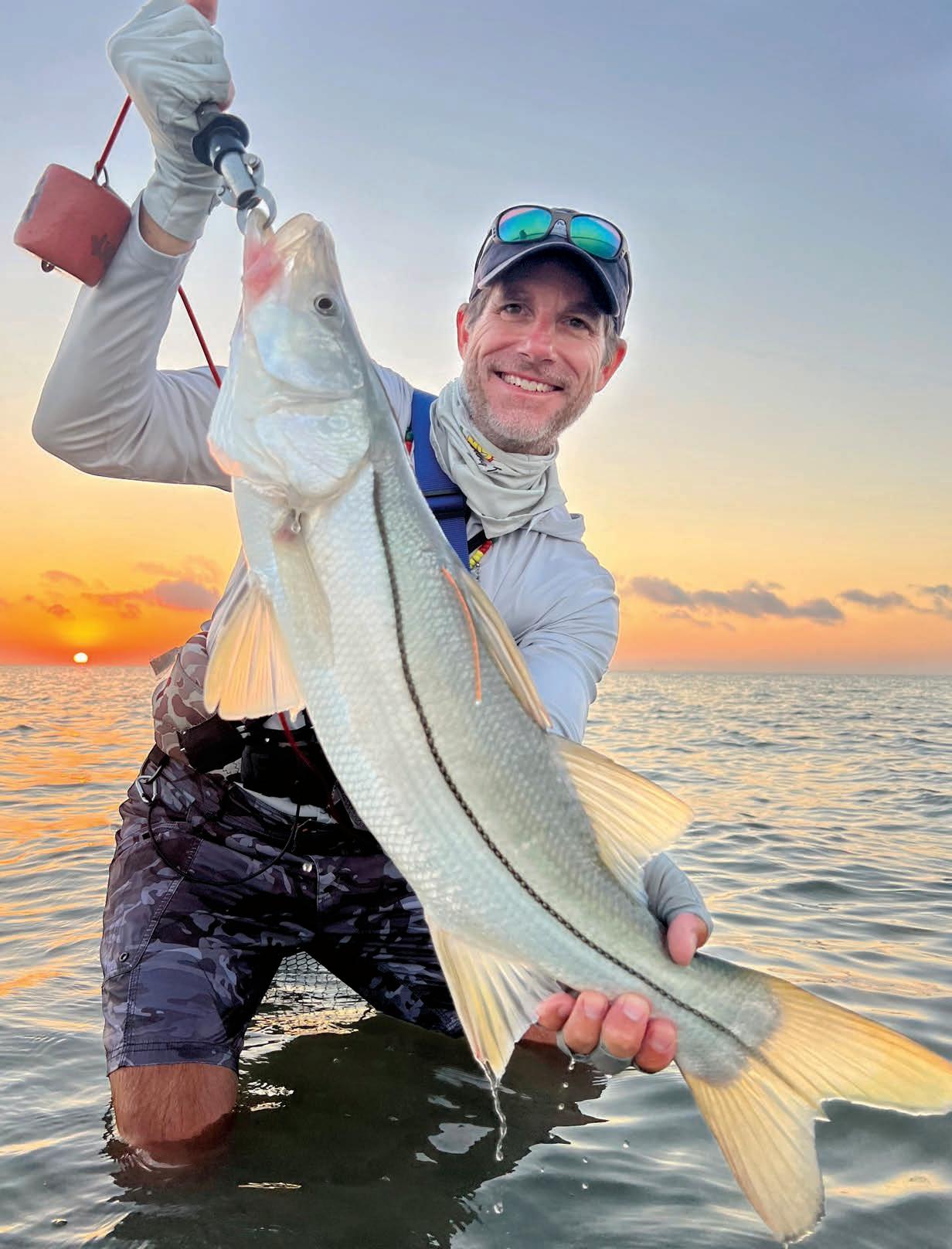

TIDE PREDICTIONS & SOLUNAR FEED TIMES INSIDE! Only $4.95 May 2024 TSFMAG.COM
System
TPWD Implements Trophy Trout Tag
Rising Tides Trigger TROUT BITE STEADY REDFISH ACTION on Grassy Flats





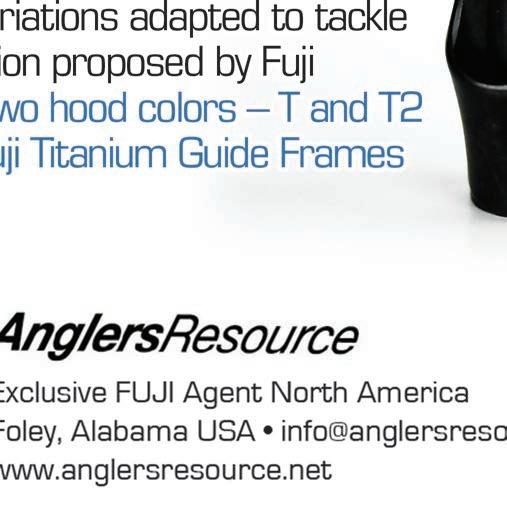



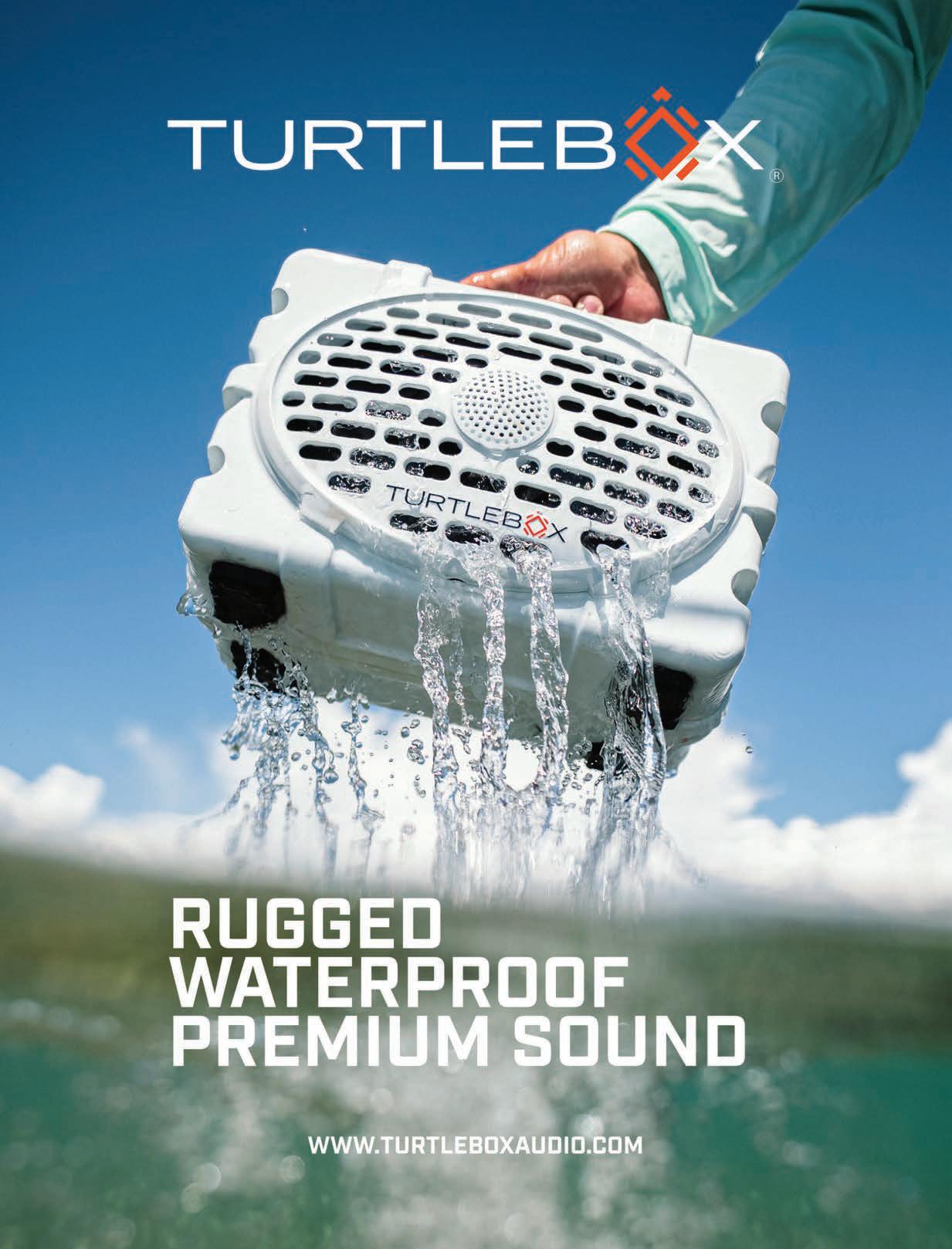

Capt. Wayne Davis is this month’s cover angler, showing off a beautiful 10-pound Lower Laguna snook. Wayne was wading a shoreline cove at sunrise and noticed bait fish behaving nervously. The fish slammed his Mansfield Knocker in Zombie Mullet color and the fight was on! Tagged for Harte Institute and released for another angler to enjoy!

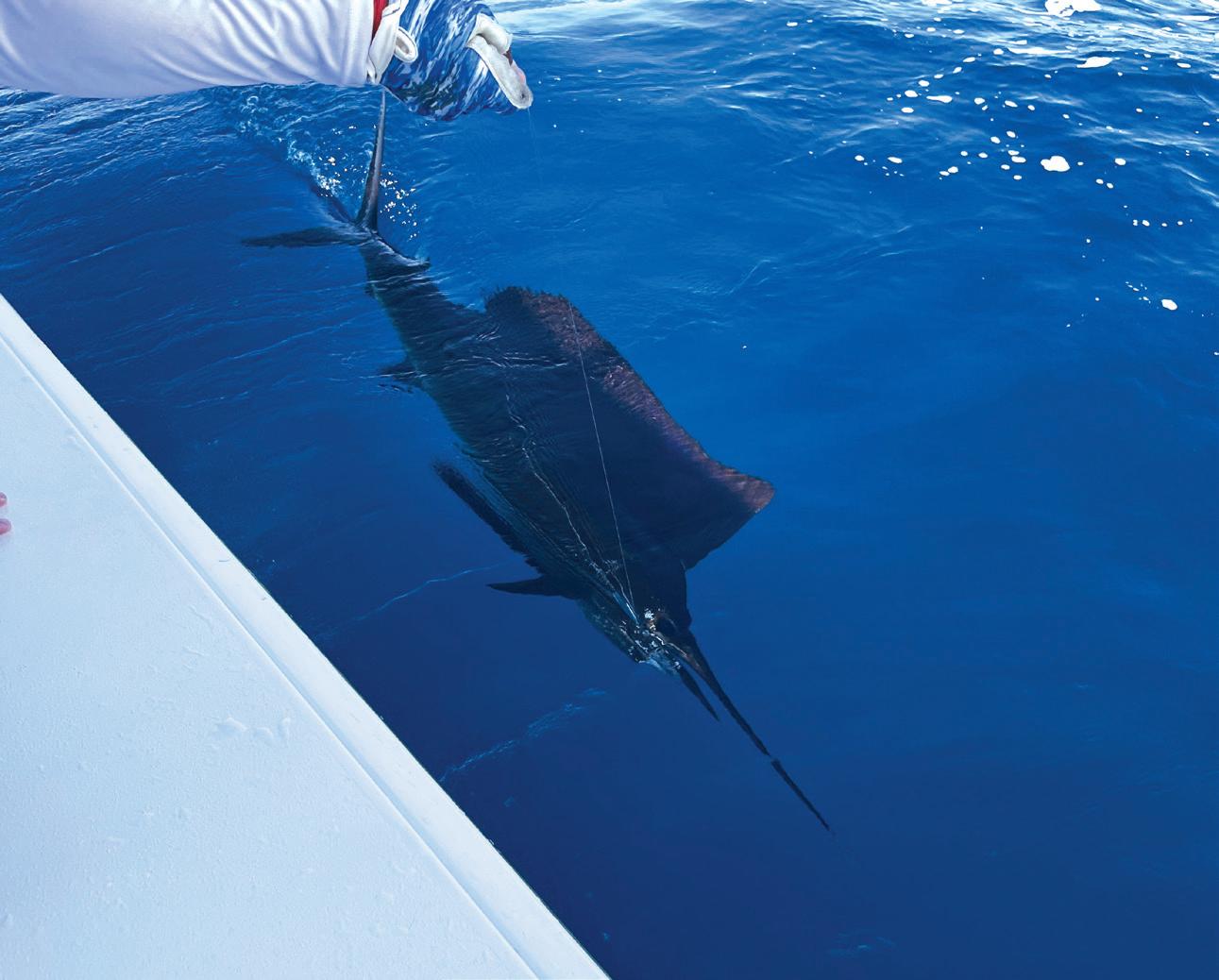

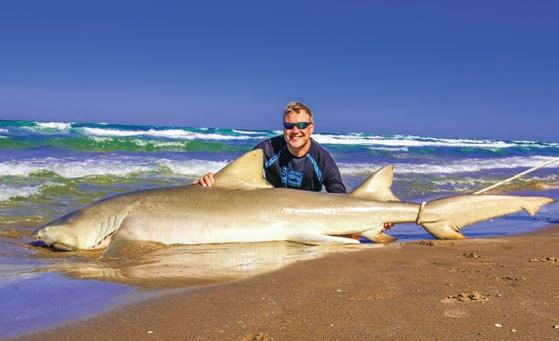


68 South Padre Fishing Scene Ernest Cisneros REGULARS 6 Editorial 58 New Tackle & Gear 70 Fishing Reports and Forecasts 74 Catch of the Month 78 Gulf Coast Kitchen DEPARTMENTS 32 Let’s Ask The Pro Jay Watkins Shallow Water Fishing Dave Roberts TSFMag Conservation News CCA Texas TPWD Field Notes Jason Ferguson 50 Extreme Kayak Fishing & Sharks... Eric Ozolins 54 Mostly Sight-Fishing Jake Haddock 79 Science & the Sea UT Marine Science Institute 8 50 78 66 MAY 2024 VOL 34 NO 1 CONTENTS ABOUT THE COVER
4 | May 2024
Professional results without the price.

Finally, an SiO 2 ceramic-infused polish that is EASY and FORGIVING to apply.
Get the protection and shine you want and deserve. Any time. Every time.
Extra Long-Lasting
Ultimate UV Protection
Extreme, Glossy Shine
Scan to check out the entire line of Star brite Ceramics
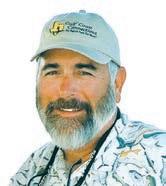

THE BEGINNING OF THE BUSIEST SEASON
The old saying that time flies when you’re having fun would certainly apply to the approach of May. Lots of things going on this month, not the least of which is the beginning of the busiest fishing season of the year.
The school year is winding down and you can bet kiddos will be anxious to join every fishing trip, which brings up the summerlong CCA Texas STAR Tournament that kicks off Memorial Weekend. If you haven’t already registered the whole family you need to get on it today. The prizes for adults and scholarship opportunities for youth anglers are bigger and better than ever.
If by chance you haven’t been following the newsfeed relative to speckled trout regulations, I would suggest that you check the TPWD website for the latest revisions before hitting the water. In a nutshell; the daily bag limit has been reduced from 5 fish to 3 fish that measure between 15 and 20 inches. Additionally, anglers may retain one fish of 30-inches or greater length as part of the daily limit…not a bonus fourth fish. Speaking of the new trout limits, Chuck Uzzle discusses this in his
May
article in this issue. Chuck lives in Orange, TX and fishes Sabine Lake. Interestingly, while the new 3 fish limit has been heralded widely as great move toward boosting trout populations in Texas bays, Chuck has reservations. It’s called the Louisiana Loophole. Texas anglers buy Louisiana fishing licenses and launch from the Louisiana side of Sabine, all for the purpose of retaining Louisiana’s more generous limits. Chuck fears the new Texas limit will encourage more East Texas fishermen than ever to work the Loophole. Time will tell. This comes at a time when Sabine’s trout fishery has only began to recover from a series of unfortunate natural events. A compromise between Texas and Louisiana regulations might provide a solution...if Louisiana would listen.
With the busiest fishing season upon us I think it appropriate to have a short discussion about boating etiquette and sportsmanship in general. This begins at the boat launch. Finding yourself at the end of a long line waiting to launch can be frustrating, even more so when somebody ahead of you backs down without switching off their headlights. Even worse are the folks who take forever transferring gear from their vehicle to their boat. Do all your make-ready chores before backing down. Launch the boat and make a quick exit. Out on the water, show your fellow angler the respect you would hope to receive from them. Don’t blind them with your lightbar and give as wide a berth to waders and drifters as you possibly can.
Be safe; and take a kid fishing!







EDITORIAL
6 | May 2024
Issue Highlights View The Video Open Camera & hover over QR Code. When link appears, tap to open in YouTube.


I never got tired of watching these
beauties come to the boat.
(Photo by Peter Van Dingstee)
It’s Time to GEAR UP!
STORY BY STEVE HILLMAN
I’ve always mentioned select items when the opportunity presented itself within the context of my stories but I’ve never actually devoted an entire article to brands of gear, equipment, products, etc. This being said, I feel like with the warmer (and busier) months approaching this is a great time for anglers to get started on the right foot using the right stuff. After all, using inferior gear will usually give us inferior results. I will try to cover as many of the products as possible that help contribute to my success as a professional fishing guide on a daily basis. Whether I’m partnered with them or not, I use these products only because I believe they are the best of the best.
As I type this story we are in the midst of our winter-to-spring transition here on the Upper Texas Coast. With hordes of shad and glass minnows flooding our bays trout can be difficult to catch, especially on lures. We often downsize our baits but even then the bites can be very subtle. I am truly blessed to be able to use what I consider the best rod on the market enabling me to feel even the softest of bites. I’ve been using Waterloo Rods for about 15 years and couldn’t be happier. Their rods are not only ultra-sensitive and lightweight, they also possess a solid backbone when setting the hook and fighting a fish. It doesn’t matter if you’re chunking magnum-sized topwaters or Salt Water Assassins rigged on 1/16 ounce Pro Elite jig heads, Waterloo has a rod for every application. The top three on my boat every day are (in no particular order) the Carbon Mag, HP Lite and UltraMag, but there are many different styles and models that can be tailored to your needs and preferences, even freshwater rods! Give them a visit for all of your fishing gear needs including reels, lures, and everything in between. (www.waterloorods.com)
TSFMAG.com | 9
Just like putting new tires on a car further enhances our driving experience, we can maximize the performance of our rod by equipping it with a high-caliber reel, line and leader. I’ve recently started using the Hundo reel from Bates Fishing Co. and I must say I’m impressed. It’s silky-smooth operation enables long casts to reach spooky trout on bright, sunny days and whenever the water is clear. Longer casts also mean that my lure is staying in the water longer, which increases my odds of getting bit even more. I love the smooth drag system and the Hundo just has that strong and tight feel, if you know what I mean. The foundation of the reel is its one-piece frame that is uncommonly rigid, which incidentally is CNC machined entirely from a solid bar of 6061-T6 (excellent corrosion resistance) aluminum bar stock to create this sharp looking gunmetal grey reel. It casts quietly, is lightweight, and fits comfortably in my hand so I don’t get fatigued from casting all day. (batesfishingco.com)

My favorite braided line is Seaguar Smackdown Tournament Braid in 30 pound test (8 lb. diameter). I start out by putting 15 or so yards of 10 or 12 pound monofilament backing on my reel and then filling the rest of the spool with braid before finishing it off with 5 or 6 feet of 20 pound test Seaguar Gold Label fluorocarbon. The smaller diameter of the Gold Label gives me an added edge when it comes to tricking finicky fish and the longer than usual leader gives me that little bit of stretch that I like, not to mention the extra sink rate and invisible properties fluorocarbon provides. I typically use a uni-to-uni knot to splice the backing to the braid and
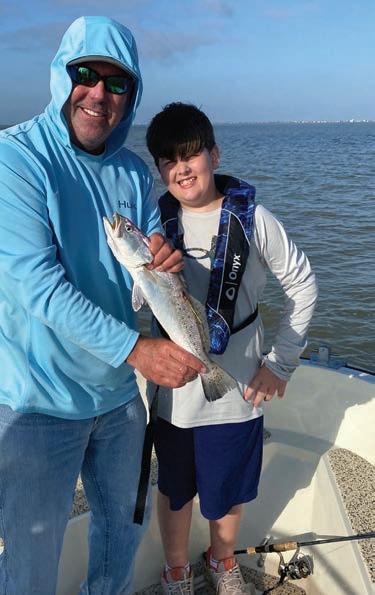
the braid to the leader. I use a loop knot most of the time when tying my lures because I like the added action it allows. (Seaguar.com)
I can’t talk about the rods, reels and line required to feel those subtle bites without discussing the baits we use to get those bites. Once again, I am very fortunate to have what I believe are the most effective saltwater lures in my daily arsenal. The baits we throw on my boat most often, year-round, are soft plastics comprised mainly of Bass Assassin and MirrOlure brands. The beauty of these baits is their versatility. Being able to change jig head styles and sizes for
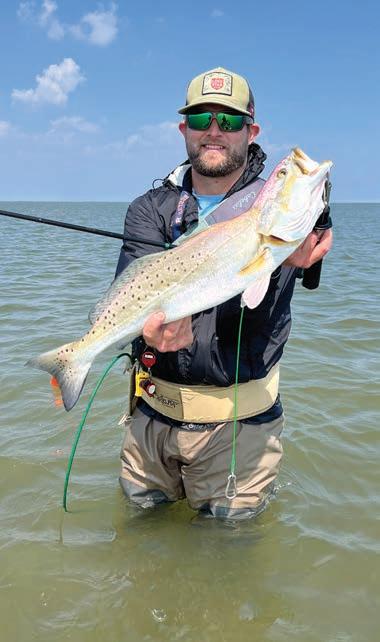
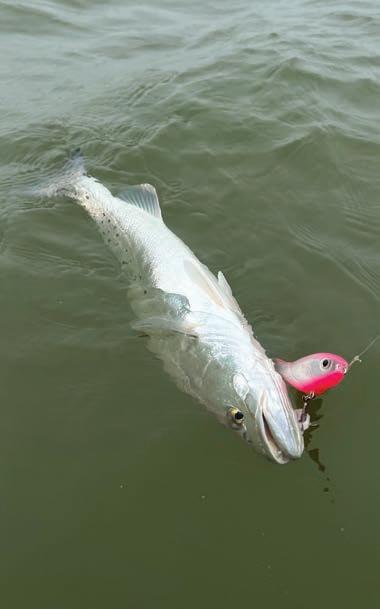
Some days you just gotta tick them off
eat!
Mario Rodriguez putting his Fish Monkey gloves to good use as he leaders a nice sailfish!
Brooks Hilton with his tagged trout we reported and released on a recent trip. The Slammin’ Chicken 4” Sea Shad Assassin was fire! Kudos to Trout Tagging Texas for what they do and huge thanks to the Hilton family for releasing ALL 16 of their legal trout and reds that day!
Chase Janecek with a solid one he tricked up shallow on a MirrOlure Soft-Dine!
10 | May 2024
with a loud topwater to make them

OUT HERE, AUTHORITY MUST BE EARNED. IT IS


Introducing Authority ™ , the spinning reel with a name that is set in steel. PENN ® ’s first IPX8 fully sealed body wrapped around a best-inclass stainless steel gear train and a 12-plus-one stainless steel ball bearing system. All eight sizes and select high speed models come with a Dura-Drag ™ system that can handle anything the ocean dishes out, making Authority the most durable reel ever seated. PENN. LET THE BATTLE BEGIN ™ .

NOT GIVEN OUT FREELY.
©2022 Pure Fishing, Inc.


different water depths, current velocities and feeding moods gives us a huge advantage, not to mention the wide selection of colors to suit virtually every scenario.
Twitchbaits are not to be overlooked, especially with the pattern we’re currently experiencing. The tiny suspended forage typically leads our trout to hover near the middle of the water column, sometimes putting them in a non-aggressive feeding mode. It’s almost like they’re in a trance. This is when twitchbaits such as Texas Custom Lures Double Ds, MirrOlure Paul Brown Corkys and the Isca Borboleta LeLe come into play. These baits hover in the strike zone longer and will typically draw strikes when other lures will not. Stubborn, suspended fish have also given in to topwater plugs for us lately. Sometimes you just have to tick them off! The constant rattle and commotion of a MirrOlure She Dog or Rapala Skitter Walk will eventually be more than a predatory fish like a speck can handle.
I recently traveled to Costa Rica where I was able to partake in some of the most phenomenal fishing I’ve ever experienced. I fished on some of the finest boats in the world and one thing I quickly noticed was that the captains and their crews used some of the same gear that we use here. My first day there we were aboard a 58 foot Viking named Maya. We were fortunate enough to be invited aboard as they prefished for an upcoming billfish tournament. On the ride out I noticed that Mile’s (the owner) right-hand man, Mario, was wearing Fish Monkey gloves while rigging teasers. In addition, he had a nice pair of Danco pliers in a sheath on his hip. The second day we fished with my good friend, Bubba Pyle, on his boat, The Charmer, and

I noticed the same thing as the day before. The captain and deckhand (Jose and Christian) were wearing Fish Monkey gloves. They especially came in handy when leadering our sailfish and other species we caught!
The older I get the more I realize that I need to do more to protect myself from the elements. If only I would have thought this way earlier in life. For years I never thought of wearing gloves while fishing but after seeing what the sun and just overall wear and tear does to our hands it’s been a game changer for me. They also provide warmth on chilly mornings while still maintaining the firm grip and functionality of your hands. Fish Monkey not only offers gloves of every variety from fishing to hunting but also masks for sun and wind protection, hoodies, caps and even socks! Do yourself a huge favor and check them out! (shop.fishmonkeygloves.com)
Last but most definitely not least I want to talk about my boat. While there are some unbelievable new bay boats being manufactured these days, I have chosen to stick with my old Boston Whaler Outrage through all these years. Those who have ever fished with me know that I tend to be a little excessive when it comes to entering and leaving fishing areas. Quiet and stealthy are two words that immediately come to mind. When we’re drift fishing I don’t like noise from slamming cooler lids or floor hatches and I’m not fond of clients barreling into the water off of my ladder when we’re wading. Lord knows our trout are spooky enough these days without us sending them Morse Code through the water column. One major move I made several months ago was to have Safefloor installed in my boat. My boat was already pretty quiet because of its design but it’s 10 times quieter than before. In addition, it’s extremely slip resistant and easier on my feet. My Safefloor is also a lot easier for me to clean, which means I now have more time to spend on other things. It also looks tidy and professional! (safe-floor.com)
There are other products that I wouldn’t want to do without, like all my Simms gear, or my Garmin GPS and my lithium ion trolling system from Breakwater Marine Electronics, but there’s only so much time and only so much paper. Hopefully my story gives someone enough product insight to where they too can gain that little extra edge toward becoming more successful on the water. Tight lines!
STEVE HILLMAN

Phone 4 09-256-7937 Email captsteve@hillmanguideservice.com Web w ww.hillmanguideservice.com Steve Hillman is a full-time fishing guide on his home waters of Galveston Bay. Steve fishes the entire Galveston Bay Complex, wading and drifting for trout, redfish, and flounder using artificial lures.
CONTACT
All the Right Tools View The Video Open Camera and hover over QR Code. When link appears at top of screen tap to open in YouTube.
An absolute dream set-up…Waterloo Ultra Mag rod, Bates Hundo reel and Saltwater Assassin rigged on a Pro Elite jig head!
12 | May 2024
Jose Aguerro preparing to release one of many sails on a phenomenal day of catching!

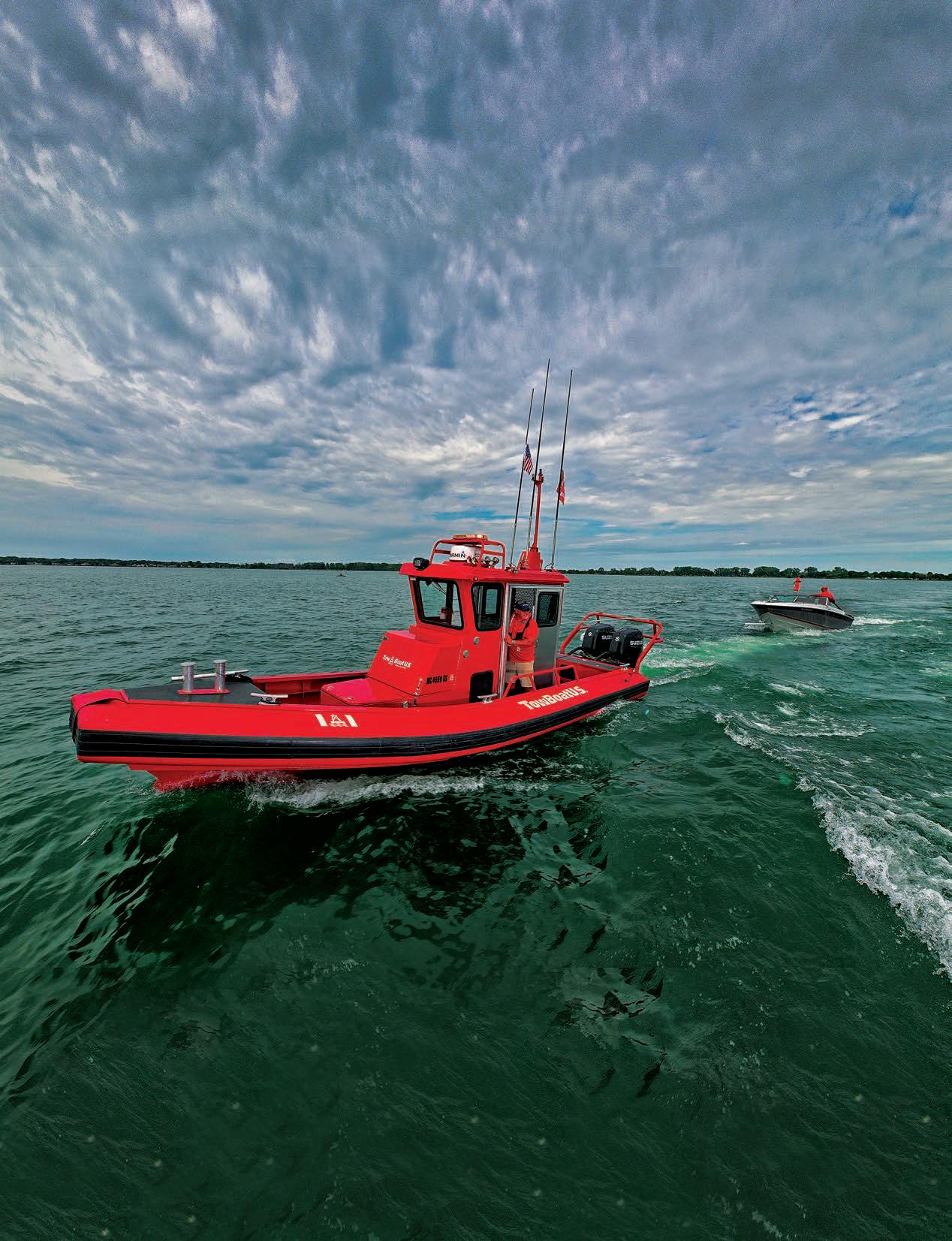

Boating is unpredictable but with a BoatU.S. Unlimited Towing Membership, it’s easy to keep your cool when something goes wrong. The last thing you want to worry about is “how are we getting home?” With TowBoatU.S. by your side, we’ve got your back and we’ll get you back.
FOR
Details of services provided can be found online at BoatUS.com/Agree. TowBoatU.S. is not a rescue service. In an emergency situation, you must contact the Coast Guard or a government agency immediately. & Keep Calm Boat On UNLIMITED TOWING MEMBERSHIP CARD
WORRY-FREE BOATING Join Today! BoatUS.com/Towing
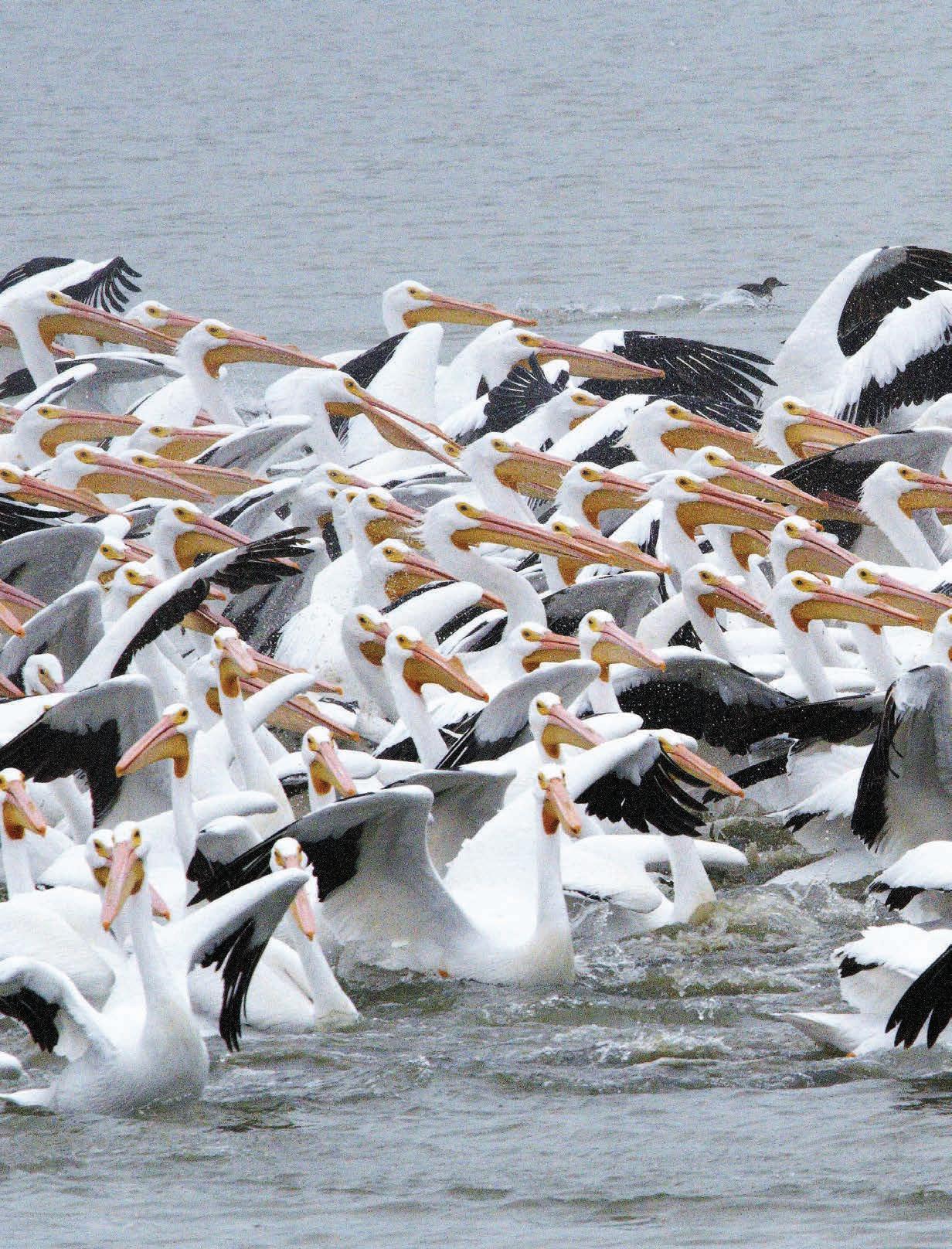
The Wings PART 3
STORY BY KEVIN COCHRAN
of Change

This is the last in a three-part series analyzing how the many changes in technologies, equipment, clothing, gear, tackle and lures have affected Texas’ saltwater anglers over the course of the last three decades.
Since the early 1990s, many aspects of our lives have changed, some more significantly and permanently than others. Certainly, the list of changes runs long for those of us who participate in the sport of saltwater fishing. Taking a metaphorical look back some thirty years at a typical day for an angler with their own boat reveals the scope and magnitude of this evolution. At the end of last month’s piece, our captain had arrived at his first chosen spot and readied himself to slip over the gunwale to start the morning’s initial wade.
Our fictitious angler’s potential for productivity depended primarily on the useful qualities of four things he carried into the brine–his reel, rod, line and lures. These tools potentially connect anglers directly with the fish they target, and by the end of the 20th Century, fishing tackle companies had made some strides in their quest to improve them. Going back in time those many days takes us to a world in which saltwater anglers’ reels did have some beneficial traits, but they also had awkward aspects, especially for anglers committed to fishing exclusively with artificial lures.
By the early-90s, dedicated lure-chunkers in Texas often felt hampered by the reels readily available to them. Abu-Garcia’s classic Ambassadeur 5500 reels had already proven themselves admirably capable of withstanding the coast’s corrosive effects; they functioned as designed over ample time, providing smooth casting performance and adequately strong and supple drag power. They also held plenty of 15 to 20-lb. test monofilament line, the type considered appropriate for fishing inshore waters at the time.
But our captain had likely already reached an important conclusion regarding reels like those–they weighed far too much to serve ideally in a lure-chunker’s world. Attempting to throw topwaters and soft plastics with them all day felt something like wearing heavy work boots when trying to run a marathon. Consequently, most dedicated artificial enthusiasts started experimenting with a relatively new breed of reels showing up on the shelves of tackle stores. Shimano, in particular, had begun making lighter level-wind reels with lower profiles, designing them so anglers could cradle them more comfortably into the palms of their hands and perform at higher levels for longer periods of time.
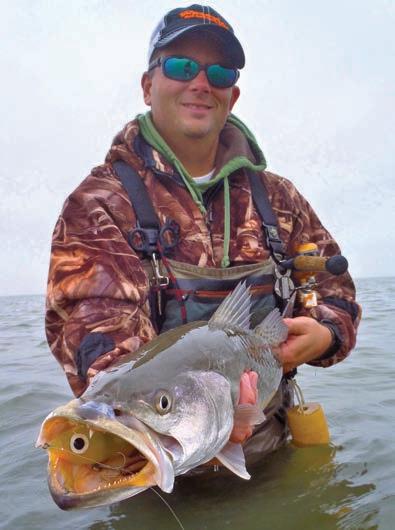
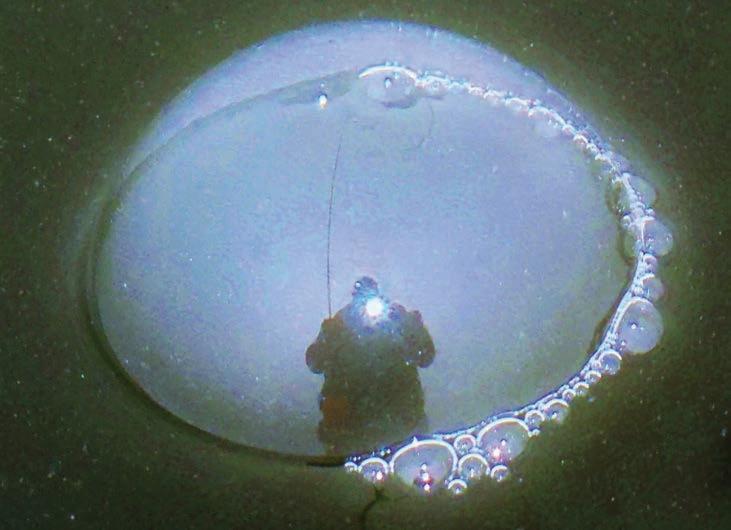
Certainly, reflecting back three decades gives one reason to pause and consider the vast improvements made to the tools and techniques we use to make photographs.
Eventually, several manufacturers released low-profile baitcasting reels weighing less than 8 ounces; some altered the materials and designs to reduce the weights of their reels even more. Today, anglers can purchase reels with gears and other internal components made of super-light materials, some of which weigh less than 6 ounces. Surely, these tools reduce fatigue dramatically over time, while still facilitating winning efforts in fights against most of the fish hooked in shallow water. The attempt to reduce reel weights has seemingly reached a zenith. Unfortunately, many modern reels with the highest price tags and lightest weights don’t perform well in one critical arena; the corrosive elements crunch them up like corn chips.
For this reason, many of the today’s top lure-chunking coastal captains don’t use the lightest, most expensive reels, opting instead for models in the mid-range, most of which still weigh around 7 ounces, while holding plenty of line and functioning smoothly over plenty of sessions in saltwater. Folks who prefer spinning over baitcasting reels have also benefited from the introduction of lighter reels better suited for use with lures for several hours at a time. These days, anglers using both spinning and baitcasting reels mostly fill them with a different kind of line than what our 1990s angler would have used.
Monofilament lines ruled the coastal fishing scene 30 years ago; those lines represented an improvement from the braided lines they replaced. But while the moons rose and sank, better braided lines evolved, largely replacing the wimpy, loopy monofilaments of yesteryear. These days, supremely sensitive braided lines provide anglers precise control over lures during presentations and superior ability to detect strikes. When paired with either monofilament or fluorocarbon leader material, braided lines improve modern anglers’ catch-rates.
In 2024, an angler who has embraced the benefits granted by the wings of change enters the water holding a lightweight, low-profile, level-wind reel spooled with hassle-free braided line, well-equipped
to execute the presentations needed to trick the predators he targets. More importantly, the rod holding the reel bears only slight resemblance to the tool our 90s angler would have used. Thirty years ago, most rods made and sold for use by lure-chunkers in Coastal Texas had actions better suited for whipping the mules pulling a buggy than controlling the movements of the head of a One Knocker.
During the middle of the 90s and slightly thereafter, a rod-building revolution gained serious momentum, partly among international companies, but mostly in Texas-based brands like Fishing Tackle Unlimited, Waterloo and Laguna, all of whom began working with the state’s best lure-chunkers to optimize rods to fit their needs, focusing mostly on casting models. They modified the components and methods they used to build lighter sticks, shortening their butt sections and searching far and wide for blanks with appropriate action, eventually inventing tools which feel more like magic wands than flimsy twigs.
The rods offered by these companies today often have skeleton grips, which leave the blanks exposed to anglers’ hands; they’re also shorter, on average, than popular rods built thirty years ago. Many have recoil guides, which have helped make some of them lighter than a standard hamburger patty. All these improvements have provided modern coastal anglers with tools which enhance the productivity of their efforts as much as any other innovation. Any serious, dedicated lure-chunker will attest to the significant impact of the weight, feel and flex of a rod on the quality of presentations made, and on the ability to effectively execute creative presentations over extended periods of time.
If a reel functions properly and weighs no more than about 8 ounces, it exerts a relatively small influence on the number of bites earned. The right type of line riding in the spool of the reel plays a slightly larger role in productivity, but a rod with attributes properly matched to the preferred methods and style of a proficient angler improves performance more than these other two things combined. I’d argue a
Big trout sometimes open their wide mouths and engulf lures like Paul Brown Fat Boys without anglers even realizing it has happened, especially when they’re using stretchy line like monofilment.
16 | May 2024


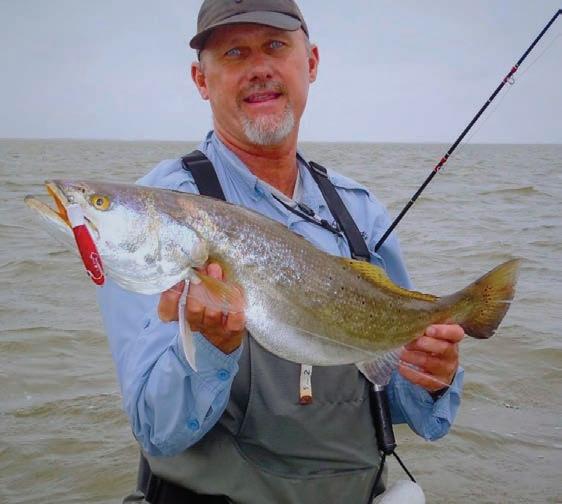
rod supremely well-suited to the angler plays a bigger role in the quest for consistent productivity than any other tool or piece of equipment, with the possible exception of the GPS and the data it contains.
Our 90s angler slipped into the water oblivious to the obstacles he faced, likely carrying a relatively heavy, sloppy feeling rod and reel with line which provided a fuzzy connection to his lures, one which hampered not only the detection of subtle strikes, but dulled the ability to master the art of precisely controlling the movement patterns of lures. This last piece of the puzzle in the attempt to earn strikes exerts profound influence on productivity. A modern angler, equipped with a superior rod, reel and line combination, has a much better chance of learning to control the depths and movements of the lures they deploy.
Back in the early-90s, most coastal lure-chunkers primarily used spoons and shrimp-tails. A few tossed topwaters and broken-backs; some included sinking hard baits like 51 and 52M MirrOlures in their arsenals. When Bass Assassin introduced worms with slender, straight tails, many coastal anglers used them to replace the soft plastics they’d threaded onto jigheads for years, quickly learning how many more strikes the random, erratic movement patterns of the rat-tailed worms earned, compared with the relatively clumsy patterns achieved with shrimp-tails.
Soon after Jim Wallace established the state-record for trout in Baffin Bay, many coastal pluggers in the Lone Star State caught the Corky wave; many of them continue to ride it to this day. Among the many changes which altered the landscape of coastal fishing over the last three decades, the addition of numerous new lures to the family of slow-sinking twitchbaits has been more significant than most. Astute anglers recognize how twitchbaits with slow sink-rates allow


It’s impossible to predict precisely which influential innovations are on the horizon; but we can certainly say the wings of change will not stop beating.
for making effective presentations at the right speeds and depths on shallow flats, where most anglers target trophy speckled trout successfully. Houston-based lure maker Paul Brown developed several versions of his famous Corky, and they’ve found homes in the wading boxes carried by many of the state’s best anglers.
After MirrOlure purchased rights to the Original, the Fat Boy and the Devil, they and others succeeded brilliantly in filling the slow-sinking twitchbait niche with other productive plugs. These days, anglers can choose both hard and soft-bodied twitch baits in a variety of sizes and shapes, also a dazzling array of brilliant, lifelike colors. Some of these lures sink slower than others; all allow for targeting trophy trout and redfish with sometimes stunning efficiency in waters ranging from shin to about waist-deep.
As was the case with innovations in boat, motor, navigation systems, gear and other equipment designs, these alterations to lures made the lives of coastal lure-chunkers easier and better. Many aspects of our sport have become safer and more productive over recent decades, thanks to the efforts of dedicated people in several related industries. Resistance to change is a powerful force in human culture; fighting against it and recognizing better ways to make and do things requires courage and grace. Those of us who love to fish owe a debt of gratitude to the creative entrepreneurs who rise to new heights on evolution’s ever-ready wings.
KEVIN COCHRAN

The Twitch Bait Revolution View The Video
Camera and hover over QR Code. When link appears at top of screen tap to open in YouTube. CONTACT
361-688-3714
kevincochran404@yahoo.com
www.captainkevblogs.com
ROUT TRACKER GUIDE SERVICE
Open
Phone
Email
Web
T
Kevin Cochran is a long-time fishing guide at Corpus Christi (Padre Island), TX. Kevin is a speckled trout fanatic and has created several books and dvds on the subject. Kevin’s home waters stretch from Corpus Christi Bay to the Land Cut.
Among the many tricks which enhance the productivity of lures like Paul Brown Lures, bending the tail of an Original sharply down when wind speeds crank up around 20 knots or more ranks near the top.
18 | May 2024


Concessions between Louisiana and Texas on other fish species, such as largemouth bass, have been made on specific bodies of water in the past.
Odd Man Out
Or So It Seems
STORY BY CHUCK UZZLE
Unpopular opinions are always difficult to articulate but I’m going to do my best to ruffle as few feathers as possible during the process. Last month the Texas Parks and Wildlife Department (TPWD) decided to make a change regarding the spotted seatrout regulations and reduced the statewide bag limit to 3 fish from the previous limit of 5 fish. Length restrictions were also amended from the prior 15 to 25-inch slot with 1 over 25-inches daily; to 3 fish of 15 to 20-inches, also allowing 1 fish per day of 30-inches or greater as part of the daily bag.
Now, to put this in perspective, we need to back up to 2007 when TPWD instituted the first modern-era reduction in trout limits from 10 fish to 5 in the Lower Laguna Madre. This was done in response to increased fishing pressure and declining numbers during population surveys over a number of years. Middle Coast limits were revised similarly from 10 fish to 5 fish in 2014, and eventually the 5 fish limit became law for the Upper Coast in 2019.
Then came Winter Storm Uri in February 2021 and emergency 3 fish limits were enacted in the Upper and Lower Laguna Madre in response to the fish kill. Rolling forward to the present, the trout limit on the Lower Coast has pretty much remained at 3 fish except for a few months when a series of emergency measures expired and regulations reverted to the prior bag limit of 5 fish. Now, in March 2024, TPWD rolled out the new coastwide management plan, and this is where my problem and the unpopular opinion begins.
TSFMAG.com | 21

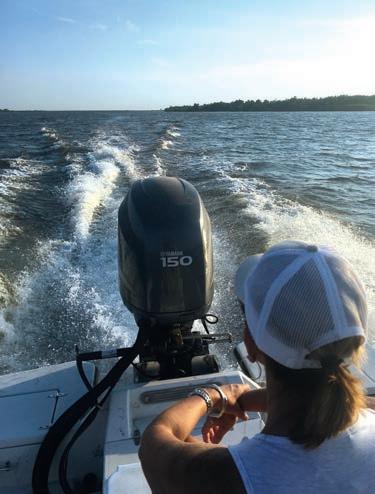
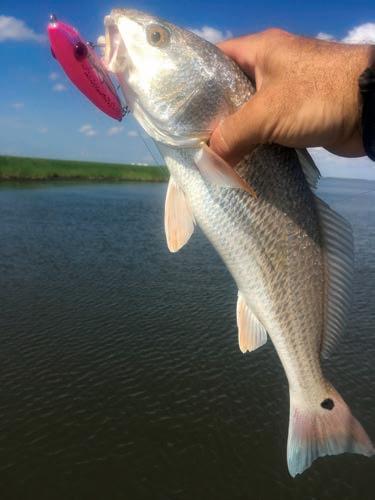
My home water of Sabine Lake is far from the glamorous big trout destinations far to the south, but for some reason TPWD has decided to manage it as if they are next door neighbors. “If it’s good for the Lower Coast then it must be good for everyone,” seems to be the prevailing sentiment, regardless of any other factors. For better or worse, that’s the way we see it up here on Sabine Lake and I will do my best to explain.
I mean absolutely no disrespect to my friends on the Lower Coast, and I want nothing but the absolute best for them and their respective fisheries. However, just because it works down there doesn’t mean it necessarily works up here. In fact, if you consider all the relevant factors, it has potential to make things exponentially worse.
I have spoken with TPWD Coastal Fisheries and they are aware of the concerns, but in the grand scheme of things Sabine is truly the odd man out, due to the fact that we sit on the border between Texas and Louisiana. My greatest fear, and one shared by many others, is that this new 3 fish limit will do nothing but encourage more anglers than ever to simply purchase a Louisiana license, drive across and launch on the Louisiana side of Sabine Lake, and avail themselves to the more liberal 15 fish Louisiana limit.
TPWD has a long history of setting water body rules and regulations, meaning separate limits for specifically defined areas. For example; there were several years where the speckled trout limits were different between Lower, Middle, and Upper Coast regions, so it can certainly be done. The twist on the
situation with Sabine obviously is very different, having another state involved, but there are examples of solving that problem as well.
Toledo Bend reservoir straddles the border between Texas and Louisiana, the same as Sabine Lake, but unlike Sabine there is a specific set of regulations for that body of water which makes it easier for everyone from anglers to law enforcement to fully understand the laws and protect the fishery.
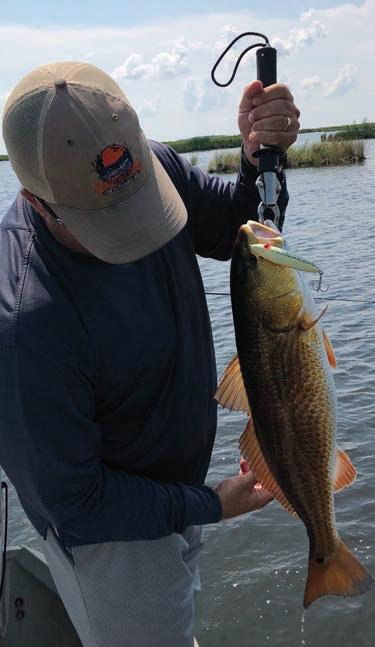
The general largemouth bass limit in Texas is 5 fish with a minimum length of 14-inches, unless otherwise noted. In Louisiana the general largemouth bass limit is 10 fish with no minimum size, unless otherwise noted. However, to solve the problem, Toledo Bend has its own specific water body limit of 8 bass with a 14-inch minimum length. A sensible compromise between Texas and Louisiana regulations.
If this compromise limit had not been reached, you can easily see how the more liberal limit would be exploited, and this is exactly what is happening on Sabine Lake. And, I predict it will only get worse under the new regulations. The last thing a small body of water like Sabine needs while recovering from past weather events like hurricanes, freezes and floods is increased pressure and more fish being removed.
Until TPWD and the Louisiana Department of Wildlife and Fisheries (LDWF) are able to reach some sort of compromise on Sabine Lake, many conservation-minded guides and anglers worry that our concerns will continue to be swept aside and dismissed as an isolated problem for someone else to fix.
The border between Texas and Louisiana runs right down the middle of Sabine Lake. One set of regulations governing the whole would greatly simplify management and enforcement issues.
Port side is the Louisiana shore, starboard is Texas. Straddling the border invites a unique set of management issues.
This little guy can either be too short or perfectly legal – it all depends which side of the lake you’re fishing.
22 | May 2024
Hopefully, with the recent changes in Louisiana’s redfish regulations, there’ll be more of these swimming in Sabine Lake.

Right now there is increased attention being paid to both speckled trout and redfish regulations in Louisiana. However, the outcome in terms of more conservative bag limits is less than many had hoped to see enacted recently.
This past December the LDWF commission, with encouragement from their fisheries biologists, published Notice of Intent (NOI) to revise redfish regulations to reflect a 3 fish creel, with 18-27 inch slot limit, no provision for retaining oversized fish, and no retention of guide limits on charters. This proposal was a vast departure from the historic regulation of a 5 fish limit with 16-27 inch slot that allowed 1 oversized fish daily, and also allowed guides to keep their limit while on charter. The NOI proposal was hailed as a big win for the fishery from groups such as the American Saltwater Guides Association and countless charter captains in Louisiana.
For some reason though, only a couple days before the NOI was to be enacted into law, the commission decided to backtrack and go with a 4 fish limit instead of the NOI’s 3 fish. The 4 fish version was quickly pushed through to a vote and passed, leaving many wondering exactly what had happened. Certainly the 4-fish limit is a step in the right direction, but the 3-fish limit would have provided a much quicker

View The Video
Open Camera and hover over QR Code. When link appears at top of screen tap to open in YouTube.
path for boosting spawning biomass – not to mention the benefit of Louisiana’s regulations becoming an almost mirror image of Texas.
Going forward there will hopefully be some sort of effort made to address these problems and protect Sabine as much as the other Texas bay systems. The problems specific to this particular body of water are complicated but are also fixable as long as someone is willing to take the lead and pursue a reasonable fix. In the meantime, all we can hope is that most anglers will lean towards conservation and keep the best interest of the fishery in mind when they head out on the water. Every angler can do their part for the fishery by being a good steward of the resource as well as being a good example to others.
We all share a common love for the sport and if it really means anything to you as an angler, you owe it to yourself to do your part. This spring, please remember to only keep what you plan to eat fresh…and take a kid fishing!
CHUCK UZZLE
CONTACT

Chuck fishes Sabine and Calcasieu Lakes from his home in Orange, TX. His specialties are light tackle and fly fishing for trout, reds, and flounder.
Phone 409-697-6111
Email wakesndrakes@yahoo.com
Website wakesndrakes.com

24 | May 2024

 Shannon Tompkin’s dad years ago, after a morning of catfishing. He knew where the big ones bite.
STORY BY JOE RICHARD
Shannon Tompkin’s dad years ago, after a morning of catfishing. He knew where the big ones bite.
STORY BY JOE RICHARD
Recent news about the detrimental effects of constant smartphone use by teenagers brought my own teen experiences to mind. Free of that technology, my buddies and I back then had only one goal when away from school, and that was fishing, hunting and camping.
Many of us were influenced by older fishing mentors, who got us hooked on fishing for life. They helped guide us in the right direction, “kept us out of the pool halls” as the old saying goes, while giving valuable advice that saved much trial and error. Pool halls are scarce and the equivalence today would be getting kids into the great outdoors and away from TikTok, Facebook, smart phones and the Internet in general, which has caused much unhappiness with the younger crowd. I’ve always wanted to run a rare summer camp for kids that teaches fishing and boating, with no electrical outlets, but the public today is risk-averse and prone to lawsuits.
I still have fishing buddies going back more than 50 years, and recently checked to see who inspired them at a youthful age. By coincidence, all five of us older guys today still fish from johnboats, except one guy who prefers a 13.5 foot kayak.
My own mentor was a great uncle named Wib who fished every Sunday when his grocery store was closed. He’d been a Navy Seabee in WWII in the Pacific. Back in the mid-1960s his boat, like most others, was small, but we even camped in it, anchored out beyond the mosquitoes where I could set out a big line for tarpon or sharks at night. In his boat I caught my first trout, redfish, snook, mangrove snapper, flounder, ladyfish and tarpon. It was a long week, waiting for each Sunday and another adventure with him.
TSFMAG.com | 27
Later in Port Arthur, ninth through 11th grades, I lived every weekend on Pleasure Island, where I had the run of the place while they slowly built the tall bridge there today. On weekends I lived in the marina and helped bail out sailboats, also fished and hunted the entire island. Kept a white Gibson jonboat there that in the picture, doesn’t look 12 feet long. Roamed half of Sabine Lake with it. An old Korean War Marine named Mike Kriener, nicknamed Seaweed, kept his Scottie Craft boat at the marina and we fished offshore starting in 1969. His offshore techniques were primitive by today’s standards but we caught fish and those were my first trips offshore in a small boat, without jumping aboard our local partyboat Bluewater , docked at Sabine Pass. It’s captain was Army veteran Leo Fairchild, nicknamed Champ, who was something of a mentor as well. He could find snapper rocks without Loran, much less GPS.
Those older guys got me hooked on fishing, all right. And it made me wonder about other people I know, so I checked around.
Shannon Tompkins in Houston couldn’t help but fish after his upbringing. “We were in hunting and fishing heaven, living on Avery Island, Louisiana. My paternal grandfather, Robert. E. Lee Harrell, born 1893, a WWI veteran, loved fishing above almost all things. He and my dad were fishing partners. Took me as a child to farm ponds, creeks, rivers and Caddo Lake, fishing with cane pole and worms. I learned much from them, mostly patience, fish behavior, how to read the water, and just enjoying being there. I vividly remember the first time he let me take out a boat, a cypress skiff with a 5.5 horse Johnson outboard. I was maybe 12. Even then, I realized it was one of the biggest, life-changing experiences of my life..“
It wasn’t only men who did the influencing. “Mom inherited her dad’s love of fishing. She took us fishing all the time when we were young. At 94, she still loves it. Until she had to quit driving, she’d drive back roads in Chambers and Liberty counties until she saw a pond. She’d park the car, crawl under the wire fence and poach them! I told her that was dangerous and she could get into trouble for trespassing, but she said, ‘nobody is going to bother or file trespassing charges on a 70 to 80 year old woman fishing by herself. They’d be ashamed of themselves!’”
Like many other youngsters, Bud Reynolds in Port Neches got his start fishing in freshwater. “My grandfather A.L. Reynolds on Toledo Bend inspired me. He really knew how to catch white perch. One day he pulled a couple of huge fish right out from under our family jonboat. The biggest white perch I’ve ever seen to this day, more than 50 years later.”
In his early high school years, Bud gained lots more experience by fishing offshore with Port

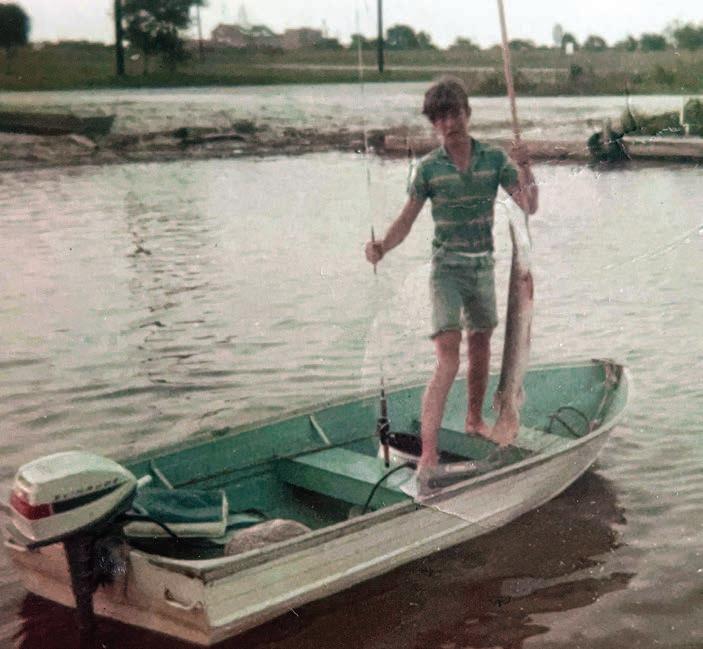 Uncle Wib in 1965 at the boat ramp after a long day, with his huge 40-horse Johnson outboard.
Uncle Wib in 1965 at the boat ramp after a long day, with his huge 40-horse Johnson outboard.
28 | May 2024
Author with his first boat, an aluminum Gibson with five-horse outboard, at Pleasure Island marina in Port Arthur. Behind him is his school, Woodrow Wilson Junior High. It was hard to sit in school, with fish and ducks only a few hundred yards away.
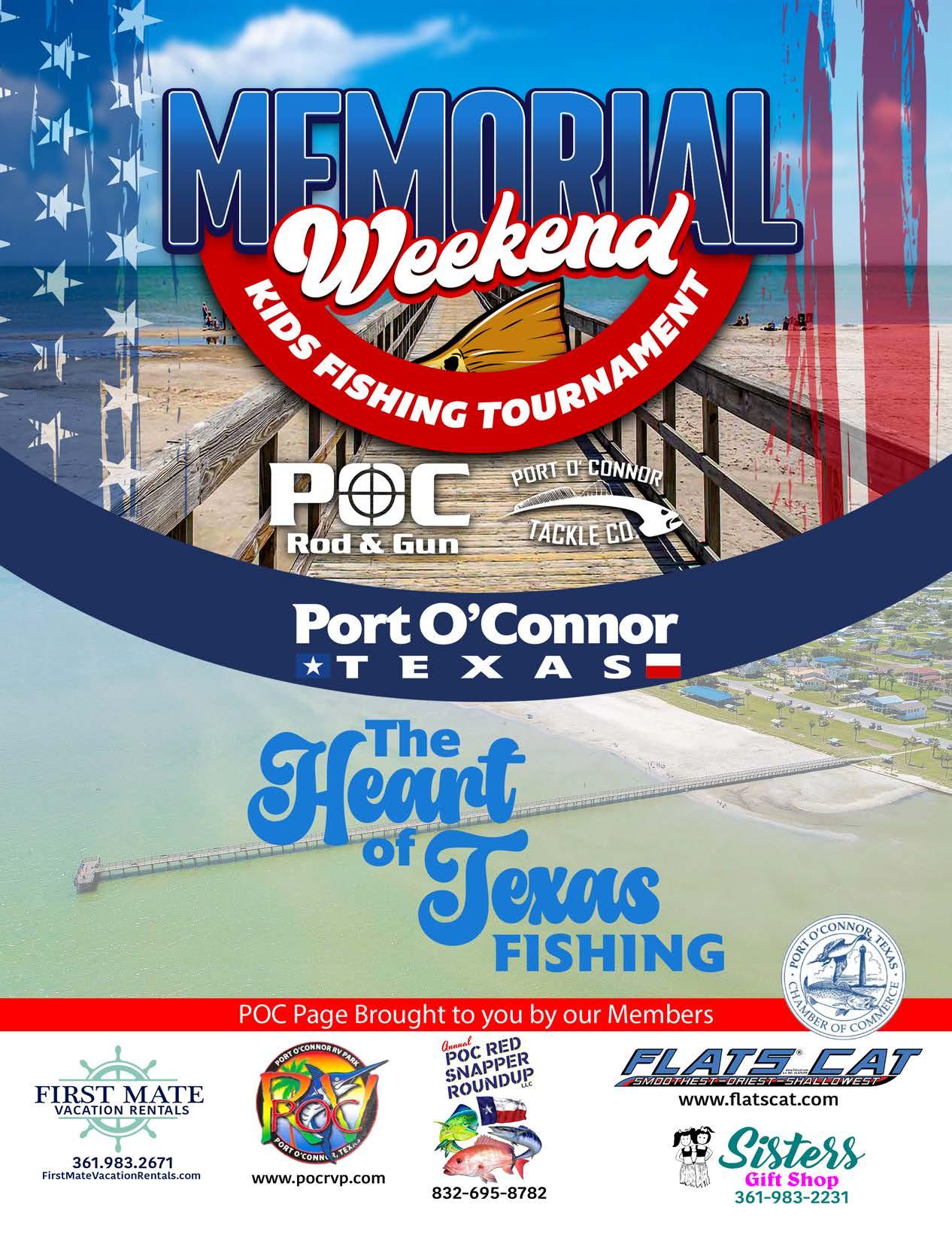

Arthur’s leading angler Dr. Ray Couch, who had the town’s most enviable boat, a 23-foot Formula. They’d launch out of Cameron, Louisiana and hardly see another boat offshore, out just beyond Oil City, which had about 90 offshore rigs in three clusters. During summer when the Gulf finally slicked out, they’d leave home at 3 a.m. and return at last light. The boat carried an olive barrel and they’d fill it with fish. On one trip 20 kingfish, all in the 30- to 40-pound range, caught with frozen, 10-inch speckled trout. Big ling were common in those days, and seen almost every trip.
“Those Louisiana kings were fatter and stockier than those I’ve caught off Texas. We’d get three hours sleep back home, and then head offshore again. It was exhausting. Dr. Couch probably sold his fish, but I was too tired to ask,” said Reynolds.
Some mentors have left a lasting influence on certain methods of fishing.
Mike Spencer of Port Neches had several older guys offer good advice that stuck with him. “Charles Stutzenbaker ran Murphree Wildlife Refuge nearby and was always stressing safety, because we all had 14-foot johnboats. An elderly beach fisherman and friend at Crystal River taught me that saltwater fishing is all about persistence and perseverance. The fish are not everywhere. But
they are out there eating somewhere. Keep looking, trying and searching. Saltwater fishing is 60% hunting and 40% fishing. With saltwater fishing, it’s seldom the same thing at the same spot when you come back tomorrow. Conditions are always changing; it’s not like lake fishing.”
“And then in my early 30’s I asked an older, local dentist how he caught so many big fish while offshore. He said to chum, said he wouldn’t go offshore without it. It changes everything. Buy it or catch your own. He said he didn›t always have chum but most of the time he did. This one tip changed my saltwater fishing for the better, like nothing else. Chumming pushed us into the world of great saltwater fishing.”
Al Clements is an expert angler, who at 77 years old, explores coastal waters today with a tricked-out kayak that even carries sidescan sonar. (He’s actually my fishing club president.) He grew up on Caddo Lake and stealth was drille d into him at an early age by his grandparents, who were masters at pulling out big white perch. He wasn’t even allowed in their boat until 12 years old, when he could sit still. “That lake was a wild place in those days. I fished it all day long.”
“You didn’t make a sound in their boat,” says Al. Even today, he won’t even use his kayak paddle near the fish. He uses a 3-horse electric motor to cover miles to the honeyhole, then poles the last hundred yards. He won’t approach and cast from upwind towards the fish, because his kayak disturbs the ripples or waves and also causes a break in tidal current. He says fish notice these things and they sense a predator is close by. And they’re right. Al catches a phenomenal number of redfish and trout in shallow water, using artificials.
If done well, fishing can be contagious. Some catch it overnight while others take longer. It requires patience taking younger people fishing, coaching them and keeping their attention, while leaving their smart phones at home. It’s certainly different than just riding along with beer buddies. However, showing kids the wonders of fishing can make a huge impression on young minds, something that could last a lifetime. Just remember to start off easy on them, with plenty of bait and calm water.
JOE RICHARD
CONTACT
Joe Richard has fished the Gulf since 1967, starting out of Port Arthur, but his adventures have taken him up and down the entire coast. He was the editor of Tide magazine for eight years, and later Florida Sportsman’s book and assistant magazine editor. He began guiding out of Port O’Connor in 1994. His specialty is big kingfish, and his latest book is The Kingfish Bible, New Revelations. Available at Seafavorites.com
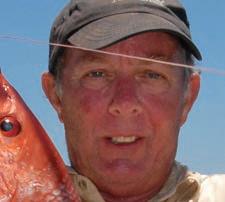
30 | May 2024
Mrs. Tompkins is now pushing 94 and still fishes with her son.

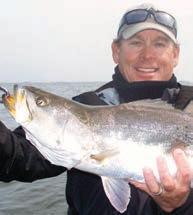
SPRINGTIME SUCCESS: BAIT MIGRATIONS & PRECISE LURE PLACEMENT
With the arrival of spring comes new seasonal patterns and a change in guiding locations for Jay Ray and I. Port Mansfield was terrific this year but I am ready to be back to a more relaxed way of fishing and a bay system that seldom throws a pitch I cannot at least swing at. I believe the new trout regulations that became effective on March 26 will have a very positive impact on our fisheries. After 45 years of guiding it is nice to have the confidence that you can, on most days, have your clients standing in the best place they can be for that day.
In the Rockport area this time of year, I focus heavily on moving water that pulls and pushes across submerged grass and shallow sand bars. Bait concentrations are always at the top of the list when trying to locate areas holding decent numbers of fish. I will continue to try and pound into your fishing brains that numbers of fish will not be found where there is not an ample food source or bottom structure that provides plenty of ambush points. This is elementary to many but still a couple of factors that you must have if you are hoping to put yourself in the proper position for success.
In my latter years of guiding I find myself focusing on being able to put my groups in areas where they can observe both the bait and bottom structure. You need to be able to see the structure in order to place the lure where bites are possible. I also need my clients to get bites for confirmation that fish are not only present but catchable. It’s the days when I am not able to put them in such areas that frustrate me the most.
I honestly have tremendous confidence in areas that are showing me the right stuff, even if I am not getting bit. Over the years I have learned that it is so much
easier to teach and coach when your clients are getting bites and can recognize what is needed to get those bites. Many times it is simply lure placement. This is especially true when we are fishing in areas where water movement is creating a stacking effect for the fish. When this happens one must be able to make accurate casts to those exact areas.
I remember a day years back; I was fishing with some fairly skilled guys and we were working a small diagonal cut in one of our major reef structures. The trout were stacked in a small but deep bend in the cut. With the amount of water movement we had, you had to cast accurately up-current of the bend and just on the far edge of the cut. Specific lure placement and the ability to allow the lure to drift naturally into the bend was met with an immediate take from 3- to 4-pound trout. It was literally every cast IF one could make that cast. If not, you were either hung up on oyster clumps and likely to lose a lure, or the lure drifted off the proper line.
Despite the guys’ experience, they were not great at precision casting, and in this instance it was hurting them. I stood next to them with the same lure they were using and made a cast to demonstrate the necessity of landing it precisely in order that it would drift on the proper line. I then demonstrated the sequence of twitches that would draw a strike as it drifted into the zone where the fish were staged. Cast after cast was met with sharp thumps and white water on the hooksets from solid trout. My point here is that there is way more than just being in the right area when it comes to getting the most out of being in that area.

Bait migrating from the gulf into the bays plays a huge role during springtime. Feeding activities of pelicans and gulls, slicks appearing on the surface, and actual sightings of bait are evidence that a migration is occurring. I always tell my guys that if we can find the menhaden along shallow shorelines or in backwater areas, there will likely be solid trout and reds with them.
Menhaden are very oily and trout and redfish alike will “slick” big time when feeding on them. However, platter-size slicks popping in shallow water doesn’t always mean we can catch them. When this happens, I often make careful mental notes of the area, ease out, and then return a few hours later. I did this
JAY WATKINS ASK THE PRO
32 | May 2024
Yours truly got lucky; this one fell for a Plum Nasty floater.
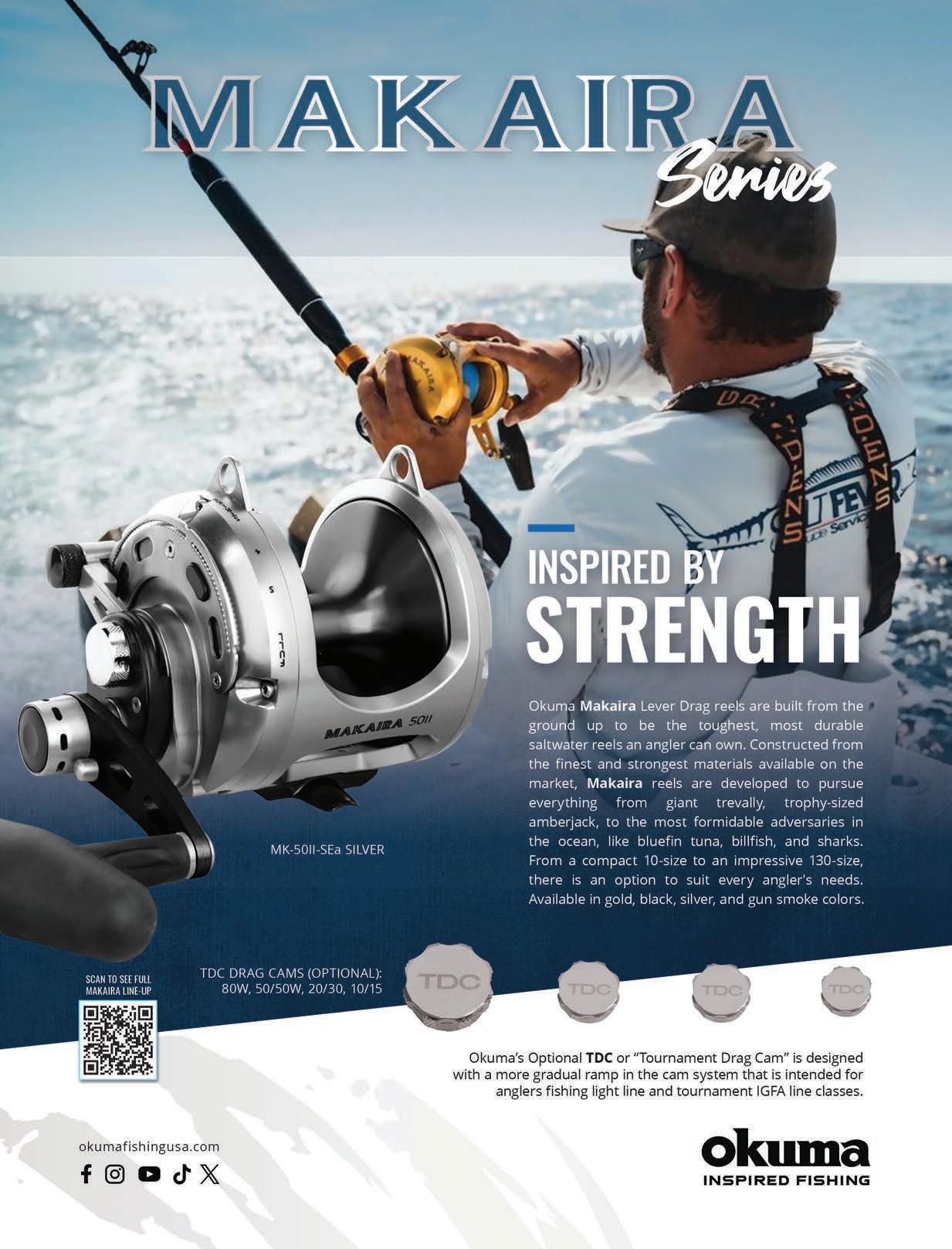
multiple times in 2023 and had very little success early on the slicks, but caught decent to good trout in the same areas later in the day.
I believe that trout are being conditioned to stay shallower longer than ever before. I further believe this might be due to a steadily increasing dolphin population in middle coast bays. Dolphins are known to be highly intelligent with great ability to learn, which begs the question whether they also have ability to reason. I put this question to Dr. Greg Stunz and here is what he had to say: “Only a few animals on the planet possess the dolphin’s level of intelligence. Dolphins can reason, have great memories, and can solve problems. They are also self-aware, which is something only the most intelligent animals have. They are known to hunt cooperatively with artisanal fishermen in other areas.”
So, there you have it. There is no doubt that dolphins can be a problem for us while fishing for trout from Port O’Connor to the Corpus Christi Bay area. I have seen them in the Nighthawk Bay area and the shoreline south of Bird Island, but they did not seem nearly as aggressive on the days I encountered them. Middle coast dolphin, it seems, follow us and almost stalk us, waiting until trout are hooked and released, and then crash the party. I try to just leave the area when I see this pattern developing, but one thing is certain, where you find dolphin there are also trout and bait fish present. I know I sort of got off track on trout staging longer nowadays in shallow water, but it definitely reinforces the tenet that it is easier for them to catch their prey in shallow areas versus deeper water.


Spring is windy all along the gulf coast. Wind creates lots of color changes in the water that will stack both bait and game fish, so I will stick with my theory that wind is our friend. Here in Rockport we are fortunate to have lots of boat launches in all the area bays. We also have a lot of water that can be protected in just about any wind. Many times I wait until the morning

of the trip to decide which boat launch I will use. Being able to fish in conditions that guides in other systems cannot even think about fishing in is a luxury. The more days we can spend on the water in a variety of conditions the better anglers we will become.
I have a number of “clear water” baits at the top of my go-to list this time of year. Despite the winds, the abundance of bottom grasses in our area bays contributes to the water holding decent clarity a surprising number of days. It’s another luxury we have that allows for more opportunities on the water.
I had tremendous success last spring with the MirrOlure Lil John XL and 5-inch MirrOlure Provoker in the Opening Night color when fishing heavily grassed flats. Both trout and reds were eager to take the lure when some of my other favorites were turned down time and time again. A few years back we had an abundance of needlefish and even some ballyhoo in our bays. On a hunch, I began dipping my Opening Night baits in chartreuse dye to create a clear chartreuse lure. Not sure what it was but the trout and the reds in our back lakes could not resist them.
I also throw a ton of the Texas Customs Double D baits this time of year. I simply love their suspending and floating characteristics and have great success with them when I find large pods of baitfish, and also when I see lines of bait strung out along a shoreline. They are also very effective in areas of scattered shell where bait is stacked along a line where the shell meets with larger areas of sand bottom. The ability of the lure to be worked at multiple depths and with multiple actions is a real plus to anglers.
Closing thoughts on the new trout regulations: How could keeping fewer ever equate to having fewer? Keep what you need for a meal and release the rest.
May your fishing always be catching!
-Guide, Jay Watkins
View The Video Open Camera and hover over QR Code. When link appears at top of screen tap to open in YouTube.
years.
wading
and redfish with artificial lures.
San Antonio
Corpus Christi
361-729-9596
Jay@jaywatkins.com
www.jaywatkins.com
CONTACT Jay Watkins has been a full-time fishing guide at Rockport, TX, for more than 45
Jay specializes in
yearround for trout
Jay covers the Texas coast from
Bay to
Bay. Telephone
Email
Website
Eric stuck another nice one.
34 | May 2024
Andrew Rafferty… being Andrew.



















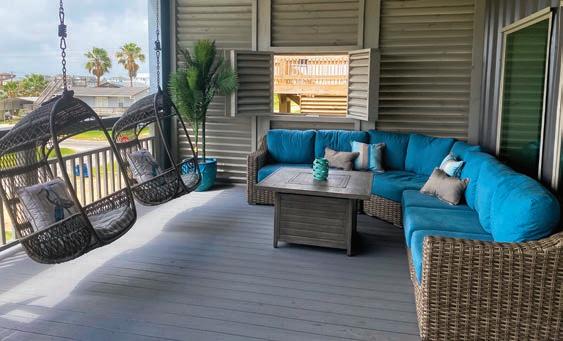

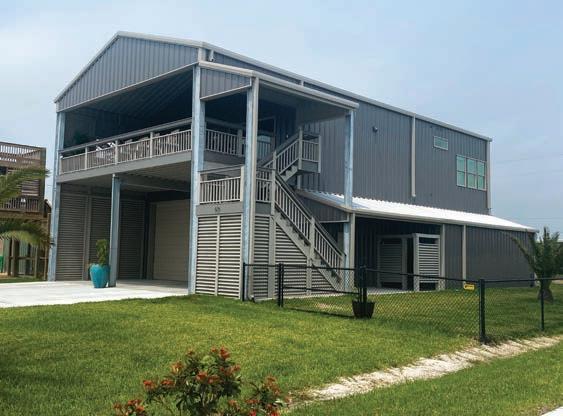
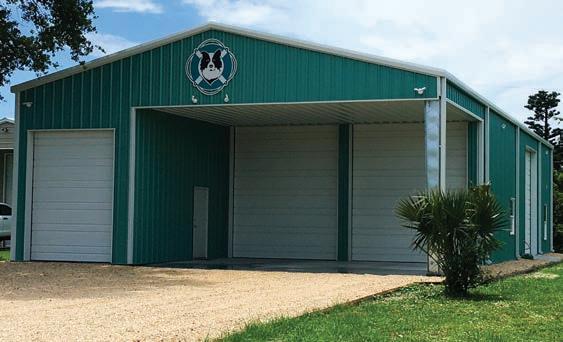


Call us for custom buildings and homes on your own property! 361-576-3825 Office | 361-576-3828 Fax 36 Hunters Circle, Victoria, TX 77905 www.RafterJConstruction.com Barndominiums • Metal Buildings • Boat and Mini Storage • Metal Frame Homes • Commercial Buildings “We contracted the construction of the TSFMag office building with Farrell Jackson. Jackson also built my son’s bay house here in Seadrift. We were completely satisfied with both projects…a professional and trustworthy contractor.” ~ Everett Johnson | Editor/Publisher, TSF Mag TSFMAG.com | 35

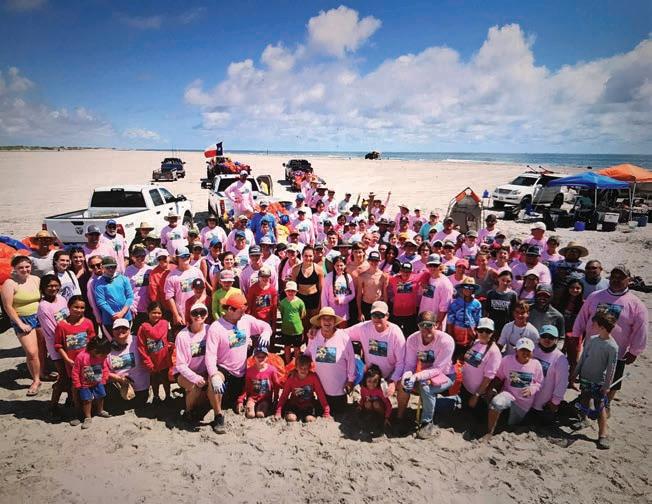



Port Mansfield East Cut & Beach Cleanup
A CALL FOR VOLUNTEERS: Join us in Port Mansfield, June 8, 2024, for the 15th running of the great Port Mansfield East Cut and PINS Beach Cleanup. We need you, boat captains and also workers without boats. We will arrange boat transportation to the work area for volunteers without boats. This is a great opportunity for all who love the ecosystem of the Lower Laguna Madre and PINS beach near the Port Mansfield East Cut to join in restoring these beautiful waters and shorelines to pristine condition. Please contact Kathie or Miller Bassler to learn more about this wonderful event.
Kathie Bassler: 979-204-5185 or email: kathieb@basslerenergyserviocces. com) relative to volunteering for this event and to secure lodging.
The event kicks off with a full breakfast at 7:00 AM, launching from the Port Mansfield Chamber of Commerce Event Center. Lunch and drinking water will be provided for all volunteers while on the beach.
Remember, we provide two nights free lodging, plus a hearty breakfast, lunch back at the Port Mansfield Chamber of Commerce Pavilion, and a fantastic Taco party at Blues Chill N Grill the evening of the event. Many families turn this into an extended stay and stay a few days after to fish and enjoy our beautiful waters.
All volunteers are also invited to join us for more fun at a post-event celebration to be held at Poco Loco Marina’s Blues Bar on the Harbor for great food, karaoke, and cold drinks. Three meals and free lodging for all volunteers is a deal that’s hard to beat!
Come join us for a full day of hands-on conservation effort and a fantastic feel-good event to help keep the PINS beaches and Mansfield Channel cleaner than it was the day before. Anyone wishing to sponsor via financial contributions are encouraged to email Miller Bassler: (miller@ basslerenergyservices.com)
For a detailed look at the work we will be doing, check out the drone video from last year’s event at: https://youtu.be/HagMRe0Y1h8 View

The Video
Camera and hover over QR Code. When link appears at top of screen tap to open in YouTube. 36 | May 2024
Open


100% Fluorocarbon Leader

100% custom formula fluorocarbon made in Japan for optimum leader performance. Features a supple yet hard finish that provides supreme abrasion resistance—up to 20% stronger after abrasion than leading competitors.


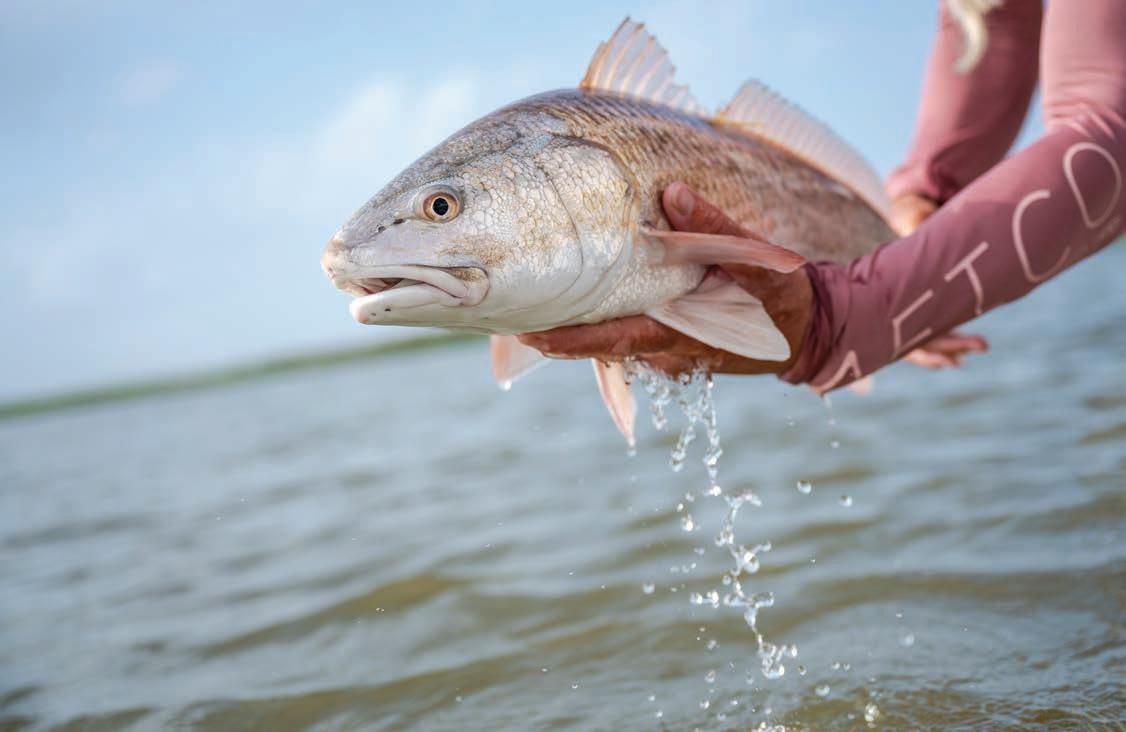

TSFMAG.com | 37
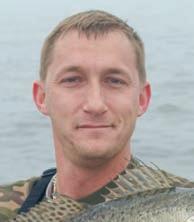

DAVE
ROBERTS
SHALLOW WATER FISHING REACTING TO THEIR REACTIONS
When it comes to spending time in the marsh, if I could somehow put all those hours together they would likely be too many to count. The majority of the time, those hours were spent trying to catch redfish. Every now and again though, I would put my rod down and just observe redfish with hopes to try and put a pattern together. If there is one thing that I have learned it would be that redfish are hunters and can be quite predictable at times. However, there are also times when aspects of catching these fish becomes really tough, and that’s when paying attention to how they are reacting to our efforts can make for a successful day.
I believe it is fair to say that when it comes to catching redfish there really is no right or wrong way to accomplish it. When I say that, what I mean is that in general you can catch them on practically anything. You can catch them on live bait, dead bait, topwaters, Spro frogs, crankbaits; you name it. I have even caught redfish in the Neches River throwing a Whacky Worm while fishing for bass. Needless to say, redfish are “generally” not picky eaters. However, I have witnessed certain days when the fish are actively feeding but they
will not commit to the lure you’re throwing. By paying attention to them and their actions, making a few small changes in your presentation can make all the difference in the world.
A few years ago I paddled out to a large flat that was scattered with patches of grass and typically almost always held a few fish. On this day specifically, I was greeted with a number of redfish that were steadily blowing up bait on the surface. I just knew that I was going to have a fun day as I began to throw a She Dog across the pond. I began walking the dog and it didn’t take long for a redfish to come cruising up to it, nudge it with its nose, and then quickly turn away. Not thinking much about it, I continued on in hope to locate another fish. Sure enough, within only a few casts I had another redfish nose up to my She Dog and quickly turn away. At that point I begin to wonder what might be going on and decided to alter my retrieve; speeding up, slowing down, adding pauses, and so forth. Several fish later, with the exact same results, is when the thought occurred that perhaps while the loud knocking of the She Dog was gaining their initial attention, it might
38 | May 2024


PROVEN PERFORMANCE ALWAYS ON THE LINE
Put the power of advanced Seaguar technology and performance on every reel. As the inventor and #1 brand of fluorocarbon lines and leaders, we’re committed to help you catch more fish.
SEAGUAR.COM
©2023 Kureha America,
Inc
TSFMAG.com | 39

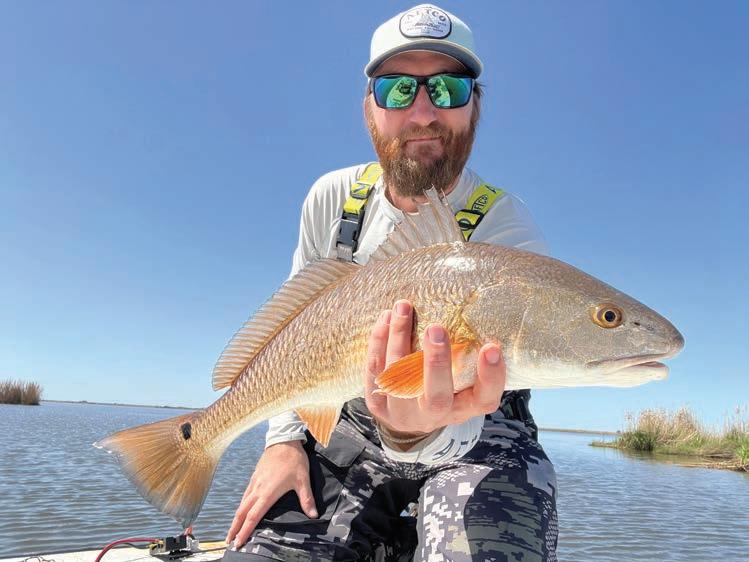
be a bit too much for them to fully commit to taking it. So I tried something that I have never done before, I changed my presentation to just slowly reeling the lure straight in. No walking the dog, no pops, just straight reeling with no noise. The very next fish’s attention I got did not hesitate a bit when it came to eating my She Dog. I sat there for another hour landing over a dozen solid redfish with nothing but a slow-rolled straight-line presentation. That small change that day made a world of difference.
Last winter, my buddy Chad and I headed out on a cold morning. I think it was the first good cold front of the year and the morning air temperature was near freezing. We knew the water level was going to drop significantly with the north wind and hoped it would make for a decent day of fishing. We get onto our first pond and were seeing fish in every direction. Chad had a shallow diving wakebait tied on and I had a swimbait. We began casting to redfish and we could see them turning and chasing both lures, but consistently refusing to take them. You could even slow it down and it was as if they were losing sight of it. Now, I cannot prove this from a biological standpoint but it almost seemed there was something wrong with their vision. Every fish was acting the same way; it was like they wanted to eat but every swipe they made at our lures was a clean miss.
After discussing how and what we might try differently, we switched to gold spoons and that made all the difference. When they began following, we found that if you slowed almost to a stop when they came into what looked like striking distance and began jigging the rod to make the spoon sort of flutter in place…WHAM! It was definitely

one of the most peculiar behaviors I have ever witnessed from redfish. Here on my most recent trip, I headed out to check on a place that I haven’t been to since last summer. Fortunately there were a few fish there, but then came the part of catching them. I started off throwing a Keitech swimbait which is one of my longtime go-to lures. I spotted a fish, made a great cast, and she just kept right on swimming. No worries, I’ll move on and find another. Or so I thought.
After about a half dozen fish giving me the same cold shoulder, I knew I had to offer something different. I stuck the Power Pole and began studying the water, looking and hoping to learn what they might be eating. I never saw a single crab and there were only a very few mullet scattered around the pond. What I did see in abundance, however, was wads of very tiny shad. Knowing from past experience that redfish can be hard to catch when they get fixated on baby shad, I decided my best chance to mimic them would be something rather small and highly reflective. At that point the best I could come up was a gold spoon. The next fish I was able to spot did not hesitate, not even a little bit. In fact, all my fish that day came on that same gold spoon.
Like it or not, there are times when the fish that’s famous for accepting just about anything you offer becomes almost impossible to catch. You can throw everything in your arsenal at them and continue to come up empty handed. However, there are also times of when making even a very small change in presentation can make a world of difference. We just have slow down some times and consider their reactions, and then react to them. And that my friends is what keeps drawing us back.
CONTACT
Dave Roberts is an avid kayak-fishing enthusiast fishing primarily the inshore Upper Coast region with occasional adventures to surf and nearshore Gulf of Mexico.
Email: TexasKayakChronicles@yahoo.com
Website: www.TexasKayakChronicles.com
View The Video
40 | May 2024
Open Camera and hover over QR Code. When link appears at top of screen tap to open in YouTube. Finding Success On Windy Days


TSFMAG.com | 41
 By Shane Bonnot
By Shane Bonnot
TAGS FOR TROUT – TEXAS LEADS THE WAY FOR SPOTTED SEATROUT MANAGEMENT
In the March 2024 issue of Texas Saltwater Fishing Magazine, we detailed recent alterations in bag and slot limits for Spotted Seatrout, a beloved icon of Texas’s coastal fishing scene. Since the late 1970s, this majestic species has evoked passionate support for conservation efforts, a movement that has only gained momentum over the past two decades, marked by intensified fingerling stockings, habitat restoration, and a series of regulatory adjustments.
In a decisive move in late January, the Texas Parks and Wildlife Commission (TPWC) approved the proposal to lower the daily bag limit to three fish, coupled with a slot limit spanning 15 to 20 inches, and allowance of one fish 30-inches or greater as part of the 3-fish bag. This revision superseded previous regulations, where anglers could retain a fish exceeding 25 inches per day, with a bag limit of five fish and a slot range of 15 to 25 inches. These regulatory modifications, effective since March 26th, are forecasted by the Texas Parks and Wildlife Department (TPWD) to bolster spawning stock biomass by a substantial 27% over a single generation of trout.
Following swiftly on the heels of these changes, on March 28th, the TPWC endorsed a tagging system tailored for oversized Spotted Seatrout. This innovative measure, slated for implementation in the upcoming license year, will exclude oversized Spotted Seatrout from the daily bag limit. Beginning September 1, 2024, anglers will be required to utilize a tag, included with their fishing
license, to retain a single fish 28 inches or greater on an annual basis. Additionally, anglers will have the option to procure a bonus tag for a nominal fee of $3, facilitating the retention of a second oversized fish per annum. This tagging protocol mirrors the existing framework governing red drum, underscoring its significance for the recreational fishing landscape along the Texas coast.
Throughout the regulatory deliberations spanning from late 2023 to March 2024, CCA Texas steadfastly advocated for the implementation of a tagging system targeting Spotted Seatrout measuring 25 inches or greater—an earnest endeavor to strike a harmonious balance between conservation imperatives and angling opportunities. It is no secret that many anglers want to see more trophy fish in their bays, and some feared a regression in Spotted Seatrout populations once temporary regulations, enacted in the aftermath of the February 2021 freeze, were rescinded. This sentiment was overwhelmingly expressed during the TPWD annual public hearing held in August 2023 and at subsequent public comment opportunities. While signs of regional recovery (lower coast) have surfaced post-freeze, recent TPWD spring gill net surveys reveal diminished catch rates compared to pre-freeze levels, both in terms of coastwide averages and within specific bay systems (e.g., Matagorda Bay and San Antonio Bay).
In an effort to balance conservation and opportunity, the TPWC judiciously refined the proposal, lowering
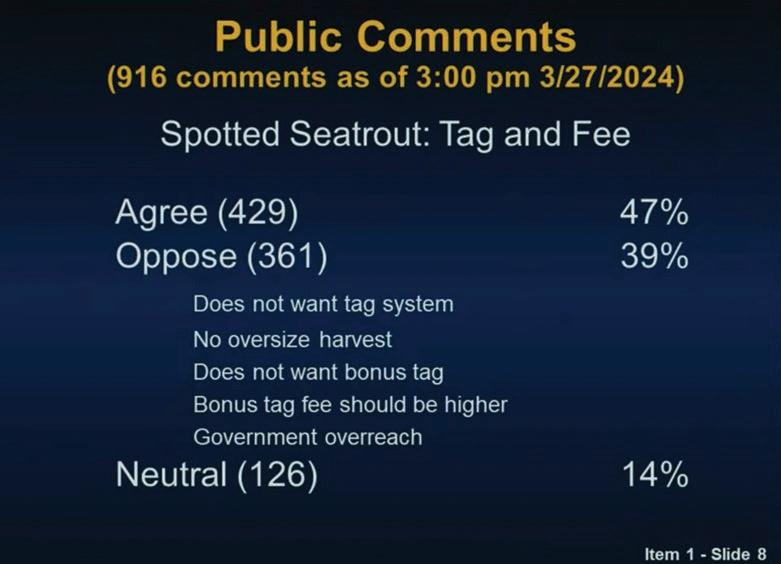
| CCA Texas Advocacy Director TSFMAG CONSERVATION NEWS
42 | May 2024
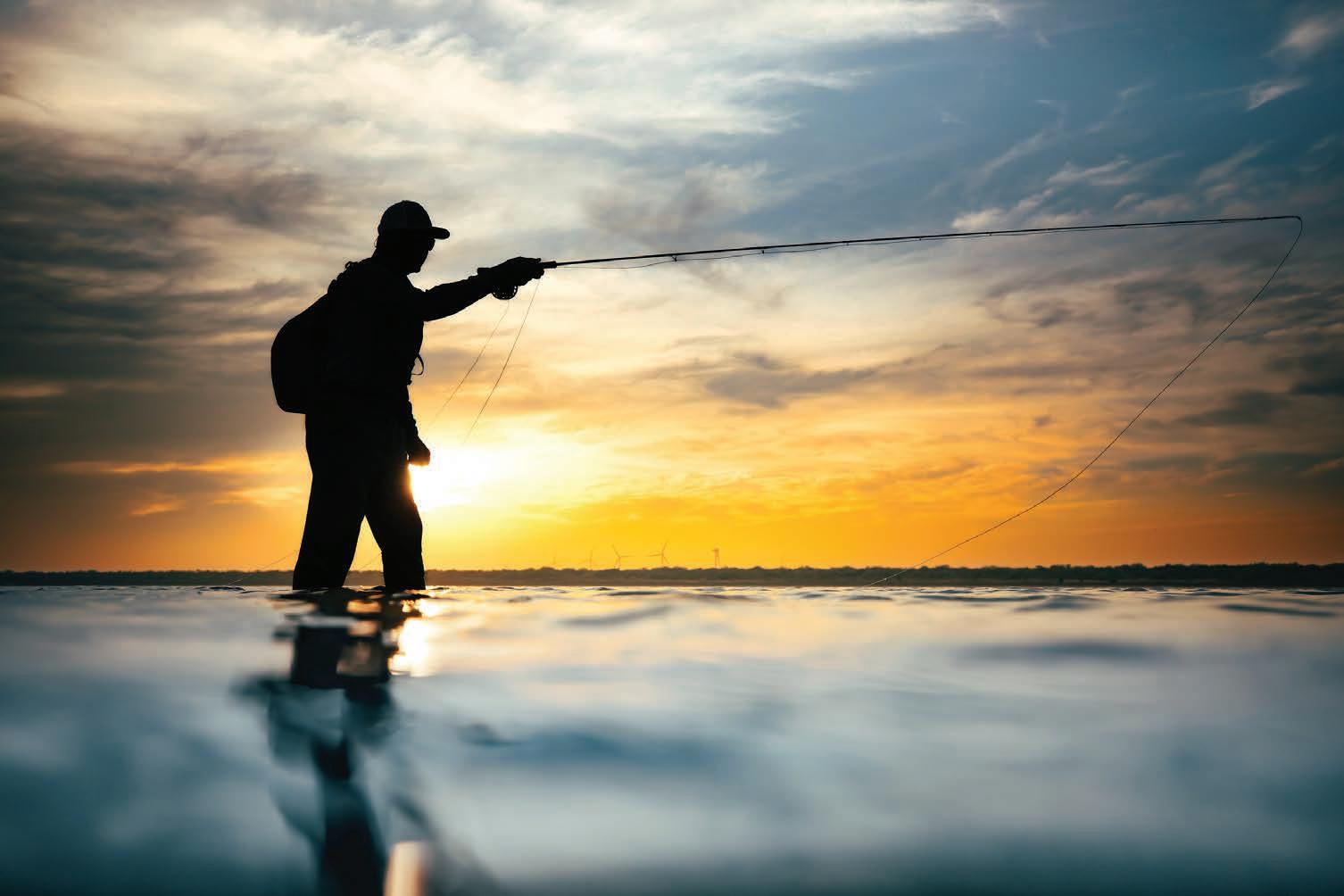












TSFMAG.com | 43 May 25-Sept 2 Two Ta ed Redfish Divisions, Inshore Division, O shore Division, Guides Division and Youth Scholarship Divisions Winner Spotted $ 1, 9 , 0 In Prizes and Scholarships OVER May 25-Sept 2 Two Ta ed Redfish Divisions, Inshore Division, O shore Division, Guides Division and Youth Scholarship Divisions PHOTO COURTESY OF MAC ELLIOTT · PHOTOS ARE FOR REPRESENTATIONAL PURPOSES ONLY startournament.org ccatexas.org YOUR CHANCE TO WIN UP TO 18 BOATS · 5 TRUCKS · 5 UTVS and $325, 0 IN SCHOLARSHIPS A MEMBERS AGES 6-17 FISH STAR FR ! BY ENTERING THE CCA TEXAS STAR YOU HAVE A CHANCE TO WIN A 2024 FORD F-150 XLT SUPERCAB, BOATS, PRIZES, SCHOLARSHIPS AND MORE!

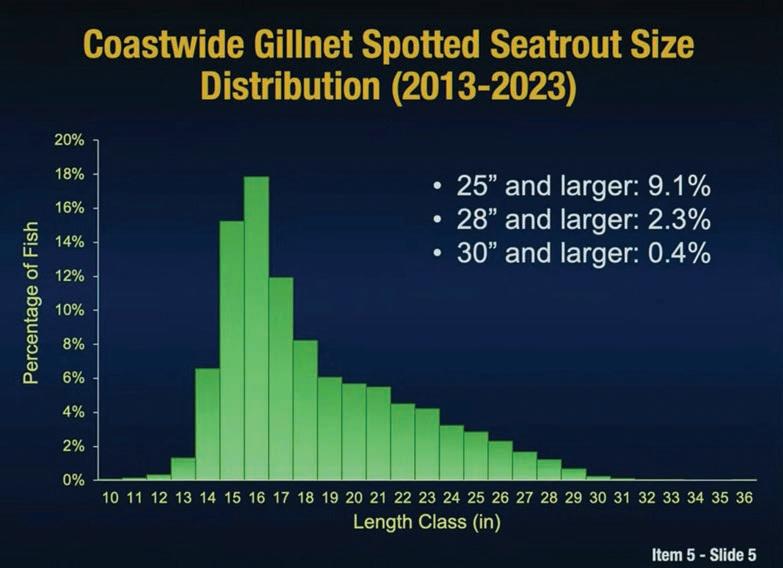
the threshold for oversized tagging from 30 inches to 28 inches, a decision underpinned by considerations of biological impact and pragmatic simplicity. “Biologically, the impact is de minimis— we’re talking 2 inches,” asserted Dakus Geeslin, deputy director of the TPWD coastal fisheries division, during a pivotal commission session.
Initially, the proposed regulations would have imposed a moratorium on the harvest of oversized Spotted Seatrout during the interim period between rule adoption and implementation on September 1, effectively prohibiting their capture until the tagging system was operationalized. However, the commission opted for a modified simplistic approach, preserving the extant daily bag limit (including the provision for one fish over 30 inches) until the issuance of tags. Geeslin articulated the rationale behind this decision, suggesting that maintaining the status quo until September 1 would have negligible repercussions on the Spotted Seatrout population.
Statistical insights gleaned from TPWD’s creel surveys provide further context, revealing that while larger trout constitute a minority within the Spotted Seatrout population, they hold immense value for us saltwater anglers. By safeguarding these prized specimens and preserving their presence in our coastal waters, we extend invaluable opportunities for anglers to hook their dream catch. Geeslin underscored this sentiment during a public hearing, expressing optimism that sustained protection of larger trout would not only fortify their numbers but also enhance the likelihood of anglers encountering a trophy-worthy specimen—a testament to the enduring allure of Texas’s vibrant fishing heritage.

44 | May 2024
SPOTTED SEATROUT
(Cynoscion nebulosus)
Spotted seatrout (Cynoscion nebulosus), known as speckled trout, is a popular game fish targeted by anglers along the Texas coast. This species is a member of the drum family (Sciaenidae) and is closely related to red drum, black drum, sand seatrout, and Atlantic croaker. Distinguishing characteristics include a dark gray or green back and silvery-white below, with distinct black spots on its back, fins, and tail. The inside of their mouth is yellow; typically, they have one or two prominent canine teeth at the tip of their upper jaw.
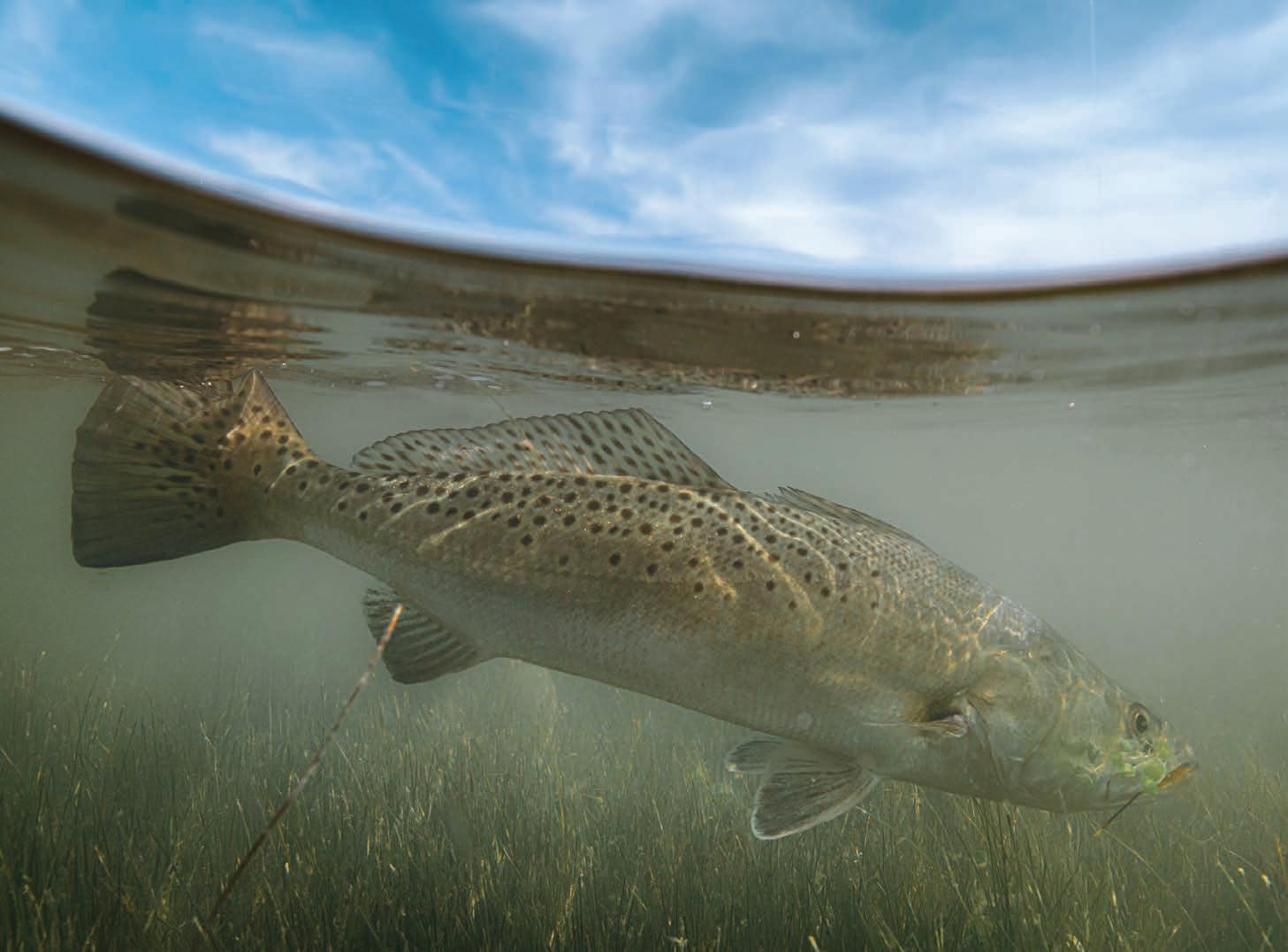
Habitat: Spotted seatrout reside in shallow bays and estuaries near marsh edge, seagrass beds, oyster reefs, or rock formations that attract prey items.
Salinity: Spotted seatrout are euryhaline, meaning they can tolerate a wide range of salinity, and have been found in salinities ranging from 0.2 ppt – 75 ppt.
Temperature: Spotted seatrout can live in a broad range of temperatures. They can tolerate water temperatures from 39 – 91° F if they are acclimated gradually to the extreme of these ranges. Along the Texas Gulf Coast, sudden and extreme temperature decreases accompanying cold fronts often result in mass mortalities of spotted seatrout. The rate of temperature change and acclimation period may be more important than how low the temperature drops. Thermal stress mortality occurs when they are exposed to water temperatures lower than 45° F for over 24 hours. However, fish exposed to temperatures between 45 – 50° F for short periods can recover and survive.
Growth: Spotted seatrout growth rates are different for males and females. Females grow faster and larger versus males in the same age class. Studies also reveal there is a high degree of variability that exists in spotted seatrout growth rates in bays along the Texas Coast. They can live to be 9 to 10 years of age and can reach lengths of more than 30 inches. Although rare, the oldest documented spotted seatrout in Texas was a 12-year-old, 25 inch male.
Reproduction: Spotted seatrout reach sexual maturity as early as age one. Spawning takes place from April through September when water temperatures range from 70°– 90° F. Females can spawn multiple batches per season (9 batches per season assumed in the table below), and the number of eggs produced is dependent upon their size. Small fish are capable of releasing over 100,000 eggs, and larger females can release over 1 million eggs, per spawning event. Two-, three-, and four-year-old fish make up the bulk of the spawning population. When spawning commences, males will surround females, bumping or nudging the stomachs of females to induce them to release eggs. Once eggs are released, males will release their milt (sperm) which fertilizes the eggs. Fertilized eggs hatch in 20 to 24 hours. Research indicates that spotted seatrout spawn between dusk and dawn and broadcast spawn within coastal bays, estuaries, and lagoons. Peak spawning takes place around new and full moon periods when large tidal swings carry their buoyant eggs and larvae into shallow seagrass beds, which provide critical nursery habitat offering cover from predators and abundant food resources.
TSFMAG.com | 45
CENTER FOR SPORTFISH SCIENCE & CONSERVATION SPORTFISH CENTER
SPECIES PROFILES
AGE (YRS) FEMALE TOTAL LENGTH (IN) EGGS PER BATCH EGGS PER SEASON 1 2 3 4 5 6 7 8 9 10 12 in 16 in 19 in 21 in 23 in 25 in 26 in 27 in 28 in 29 in 304,495 736,001 1,249,726 1,699,232 2,242,589 2,899, 561 3,270,027 3,670,137 4,104,822 4,569,150 2,740,458 6,624,006 11,247,530 15,293,088 20,183,297 26,096,045 29,430,247 33,031,232 36,943,399 41,122,350 MALE TOTAL LENGTH (IN) FEMALE TOTAL LENGTH (IN) 12345678910 AGE (YRS) 121619212325 2627 2829 12141516171819 2020 21 PHOTO COURTESY OF MAC ELLIOT For more information scan code or email: sportfish@tamucc.edu
By Jason Ferguson | Ecosystem Leader , Lower Laguna Madre Field Station
FIELD NOTES
PUBLIC ENEMY #1: HARDHEAD CATFISH
You would be hard pressed to come up with a fish species more reviled by recreational anglers on the Texas coast than the hardhead catfish. I would be willing to bet that anglers from other Gulf states feel the same way since these fish are common throughout the Gulf of Mexico and its tributaries. Why are these fish so despised? For starters, they have sharp bony spines that can lock in place, capable of inflicting deep and painful wounds. The objects folks have reported catfish spines being able to puncture is the stuff of legend. Most anglers, as well as Texas Parks and Wildlife (TPWD) Coastal Fisheries staff, have felt the sting of their spines at one point or another. Anglers also complain about how abundant hardhead catfish are and how they cannot get away from them

when trying to catch their targeted species. Typically, an abundant, easy to catch fish is a good thing. However, there is a perception that these catfish do not make good table fare and are therefore not worth keeping. This view has been disputed by a November 2009TSFM article, wherein a blind taste test revealed that hardhead catfish could not be distinguished from other more commonly consumed catfish species. Despite this, their difficulty in handling and low meat yield serve as deterrents for anglers from keeping them. Due to this lack of interest from commercial and recreational anglers, few fisheries managers have taken a close look at their population trends to examine just how abundant they are compared to other species in our coastal waters. Therefore, I thought it might be interesting to take a dive into our TPWD database to shed some light on hardhead catfish populations along the Texas coast.
TPWD’s gill net sampling program targets sub-adult and adult fish and provides a good indication of what is currently in the fishery. Catch rates are calculated by dividing the number of fish by the amount of time the gill net was in the water, resulting in a catch rate of number of fish caught per hour. This is commonly referred to as a catch per unit effort (CPUE). Generally, higher catch rates are indicative of higher abundances. Based on the mean catch rates from our annual coastwide gill net data from 1983 - 2022, you can see that hardhead catfish are indeed the most encountered fish species on the coast (Table1).
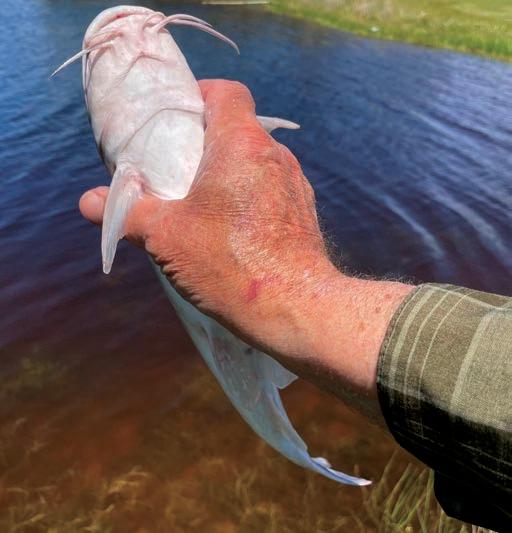
 Table 1. Top ten fish species caught in TPWD gillnets from 1983-2022. Number in parentheses represent the mean number of fish caught per hour.
Photo 1– Gripping a hardhead in the manner shown reduces the likelihood of being poked by a spine.
Table 1. Top ten fish species caught in TPWD gillnets from 1983-2022. Number in parentheses represent the mean number of fish caught per hour.
Photo 1– Gripping a hardhead in the manner shown reduces the likelihood of being poked by a spine.
46 | May 2024
Photo 2 – Same grip as in Photo 1; note that the thumb is well clear of the dorsal spine.


TSFMAG.com | 47
However, the gap between hardhead catfish and other commonly caught fish species has narrowed over time, with black drum surpassing hardhead catfish in 2022. Looking at the catch rate trend for hardhead catfish, notice how the numbers have been cyclical over the years (Fig. 1). After a peak in the late 1980s to early 1990s their numbers dropped rather dramatically, gradually increased until 2013, and then dropped again. Interestingly, hardhead catfish catch rates have been trending down, indicating there are fewer now than in prior decades. Whether this trend is something that will continue or eventually increase as it has in the past, remains to be seen.

As many of you are aware, TPWD also conducts coastwide creel surveys to collect data from anglers on fish they are harvesting. Anglers are asked a series of questions, and all retained fish are counted and measured, even hardhead catfish. Catch rates (number of fish per angler hour) are calculated by dividing the number of fish landed by the product of the number of anglers times the number of hours fished. The long-term trend for hardhead catfish harvested by anglers is, not surprisingly, very low (Fig. 2). However, it does appear there was some interest by anglers in retaining hardheads back in the 1980s and early 1990s, followed by a decline, and remaining relatively stable since. This is perhaps due to anglers transitioning from a generalist approach in fishing effort to targeting specific species.

Should anglers be rejoicing or concerned that hardhead catch rates are in a state of decline? The truth is that hardheads are an important part of the ecosystem. They are opportunistic consumers and help keep Texas bays clean. At many fish cleaning stations along the coast, hardhead catfish can be seen devouring discarded fish carcasses like a school of piranhas. Additionally, many anglers can probably recall taking young kids fishing for the first time and keeping them engaged by catching hardheads when nothing else would bite. I have witnessed, on more than one occasion, young anglers having an absolute blast catching one hardhead after the other off a public dock. Perhaps many people would not be the avid anglers they are today if it were not for hardhead catfish getting
them hooked on fishing in the first place. So, the next time you catch one, maybe take a second to admire them for what they do before tossing them back. Just be careful not to get poked because they certainly will not be admiring you (see photos of proper handling technique). If you still despise catching them, make sure to fish as often as you can to take advantage of their current relatively low numbers, because it may not remain that way for long. Check
the TPWD Outdoor Annual, your local TPWD Law Enforcement office, or tpwd.texas.gov for more info.
Figure 1. Coastwide gillnet catch rates for hardhead catfish, 1983 – 2022.
48 | May 2024
Figure 2. Coastwide angler harvest catch rates for hardhead catfish, 1983 – 2022.
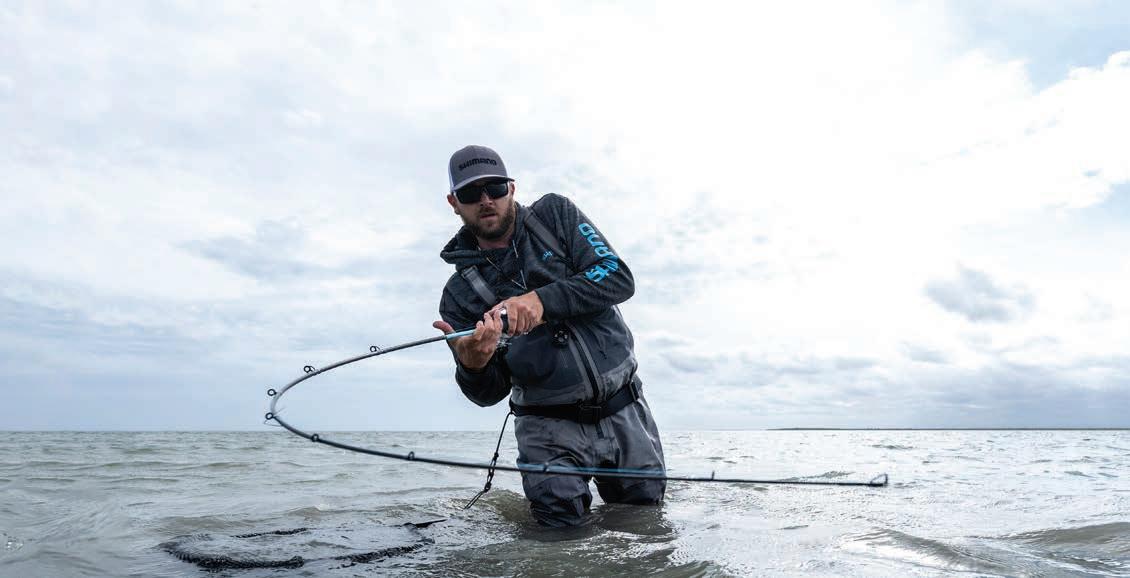
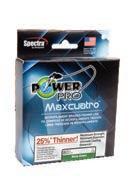



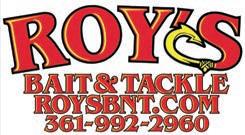

TSFMAG.com | 49


ERIC OZOLINS
EXTREME KAYAK FISHING & SHARKS FROM THE SAND
LEMONS & A WAY OF LIFE
Despite the fact we don’t have crystal clear waters yearround like some famous places in the Caribbean, the strip of sand fringing the Gulf of Mexico and forming the Texas coast captivates anglers with its raw, natural beauty. Our often-murky nearshore waters rank high on the list of the shallowest in North America, due to an extremely gradual decline in depths out to the continental shelf. In addition, our weather patterns don’t provide as many calm days and slick seas as those prevailing in Florida, our primary rival for best coastal fishing in the United States.
So far in 2024, the weather and water conditions on the beachfronts of Texas have been about as good as they get. While most places in the Atlantic Basin have experienced abnormally warm water temperatures, ours have been about normal, or a bit below average. As I type, the calendar lies smack in the middle of the peak windy season. If historical trends hold, these winds will blow with seemingly relentless strength until sometime around the middle of summer. The effects of steady winds create issues for both the fish and for the anglers who target them. Rest assured, despite the sometimes-marginal conditions, the fish are out there, hungry and hunting.
Hostile weather and water conditions do one supremely beneficial thing for the fishery, and those of us who love it–they protect the fish from people. This truth had even greater significance in the past, before innovations in gear and technologies began helping anglers cope better. During the golden age of Texas shark fishing, our waters teemed with a multitude of toothy critters, some of them truly gigantic. From about the 1950s to the late 1970s, the numbers of sharks and the quality of the fishery remained much the same. More recently, the effects of recreational and commercial fishing (and of course some poaching) have taken a toll.
During the 1990s, our numbers of sharks and other prized predators like tarpon plummeted to all-time lows. Many of us who love surf fishing felt the stinging effects of this, and the general attitudes of coastal anglers in the state began to change. To maximize the effects of this new mindset, we needed an explosive spark to help convey the critical messages related to the need for conservation. Luckily, forums on the internet came along at the precisely right time, giving the voice of conservation multiple platforms in which to express
50 | May 2024
Caribbean lemon shark landed by the author early in his sharking career.

Meet Real Fishing Demands With Marfix Reels
Precision Manufacturing for Renowned Durability
Marfix is renowned worldwide for its durability. All Marfix models use a onepiece aluminum body with as few seams as possible. The high-strength stainless steel gear reduces strain on anglers while jigging and while fighting big fish.
Smooth Lever Drag for Dynamic Control
Marfix reels are equipped with a large-diameter drag washer that remains smooth even when generating heavy drag force.
Consistent Winding for Maximum Efficiency
Marfix sets the maximum line retrieve per crank for all of their reels to 100cm (~39in), providing a consistent standard that enhances fishing outcomes.
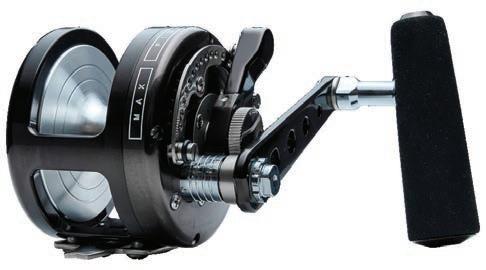
The “Marfix style,” characterized by its commitment to durability, versatile drag performance, and carefully crafted gear ratios, continues to deliver memorable fishing experiences in a compact and efficient package.

Made in Japan
Distributed by SPRO USA

e Mainland ESCAPE
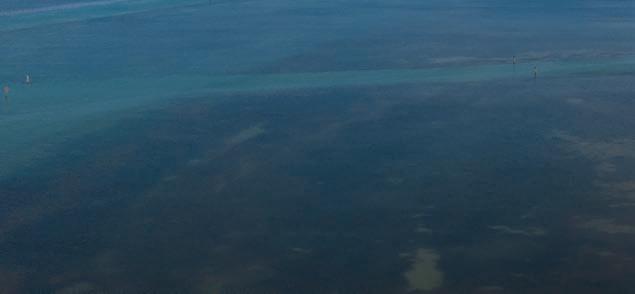
On Texas’ only tropical island, anglers can catch their limit from the jetties, in the bay or out in the Gulf. Scan and plan your escape today.









TSFMAG.com | 51



itself. Online forums spawned my original shark fishing desires and eventually I created one of my own. These interactive chat boards began to accelerate the pace of positive change.
Decades later, well into 2024, we can readily observe how conservation has enhanced our coastal fishery. Tarpon numbers are currently rated among the best we’ve seen in our lifetimes. Offshore, red snapper have become concentrated at some locations at levels not seen in many years. But while slowly rebounding, sharks currently lag other species, mostly because of senseless and illegal finning efforts carried out by foreign interests in our waters. If this practice isn’t eliminated, we may never see shark populations return to what they were in the heyday of the sport.
Florida has fared better than us in this area, despite the presence of bad actors in their waters. Their shallows teem with massive bulls, hammerheads of nearly mythical proportions and periodically, hordes of lemon sharks. Here in the Lone Star State, we don’t see too many lemons in the waters south of Port Aransas, but the numbers are better around Matagorda and on our northernmost beaches. These days, Texas anglers generally consider any lemon shark they catch to be a trophy. However, along the Upper Coast, a respectable fishery for lemons has developed over recent years. On our southern beaches, for the past decade or so, anglers normally report catching just two or three lemons per year on average, though numbers can run up to around ten, or drop to zero. The low catch-rate for lemons on Padre Island is a fairly new phenomenon.
Back in the 60s and 70s this species was abundant seasonally in the waters close to our southern beaches. During this time a large specimen was caught by Dale Whitehead at Indian Point Pier, well away from the Gulf in Corpus Christi Bay. Down in Port Isabel, people once encountered lemons regularly in the Intracoastal Waterway. While not ferocious or physically menacing, lemon sharks are a remarkable species. They’re not as fast and aggressive as some of their cousins, but they’re determined, persistent, successful predators. Visually, two dorsal fins of equal size and a pale, yellow/greenish color make them readily identifiable.
The month of May has traditionally been the most active one for encounters with these sharks. Anglers often report catching them on baits deployed for blacktips. Sharkers like me appreciate our abundant blacktips, but lemons strike a stronger chord. Lemons reach larger maximum sizes than blacktips; they can attain 10 feet in length and weigh over 500 pounds. The largest lemon I’ve personally caught taped out at 10’ 1”, and it had impressive girth and mass. While the shark was a solid contender to become the new state record, we tagged and released it unharmed. All lemons, like many other species of sharks, should be released if they’re caught, due to their diminishing numbers. For many anglers, the thrill of seeing their first live lemon on a Texas beach rivals the excitement generated by a tiger or hammerhead.
Because of their scarcity, lemons prove difficult to target successfully, especially in South Texas. While seeking to tangle with other species, I’ve caught lemons on both large and small baits, some deployed amazingly close and others
Lemons can appear in unlikely places; this one came from the Port Mansfield Channel.
This massive lemon exhibited an uncommon girth.
52 | May 2024
Nighttime lemon, tagged and released by Oz on the PINS beach.
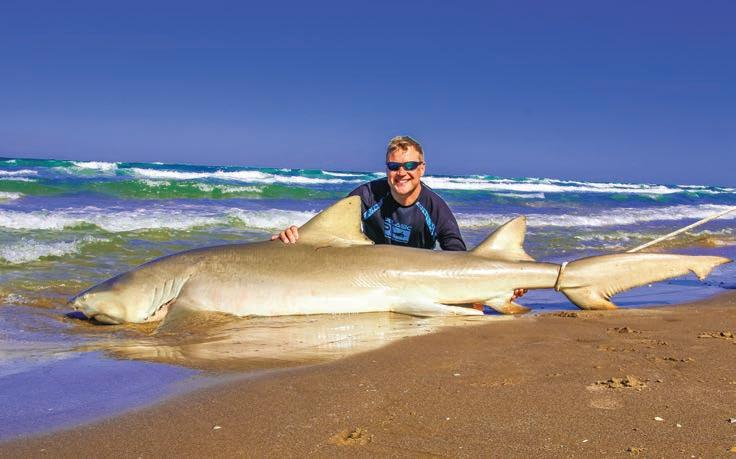
well away from the beach. I’ve also caught some in Florida and in the Caribbean. In those places, lemons almost always show up in the shallows, either along the beachfront, or in inshore lagoons. I’ve tagged some of these sharks in shallow water in Texas, but to date, we haven’t learned much by recapturing lemons tagged in our state. So, we really don’t understand all the details related to their life-habits and patterns, though we do know Louisiana’s Chandeleur Islands serve as a breeding ground for these attractive sharks.
CONTACT
Like other species, lemon sharks need our respect and support to ensure their future survival. Anglers who care about the resource must do everything we can to help these species overcome the barriers they face.
Sharkers have been labeled with stereotypes like ruthless, uncivilized, about as crusty as anglers come. Shark anglers are however also passionate, the acknowledged stewards of a controversial sport. At our best, we look after our targets and do what we can to protect the fishery, so future generations can experience the same kinds of joys as we have. With persistence and the right mindset, today’s recreational shark fishermen can play a vital role in preserving not only these splendid species, but also a cherished way of life.
For the past decade Eric ‘Oz’ Ozolins has been promoting shark catch and release and assisting various shark research programs. Eric offers guided shark fishing on Padre Island National Seashore. Also renowned for extreme kayak big game fishing, Eric is the owner of Catch Sharks Tackle Company.
Email oz@oceanepics.com Websites oceanepics.com | catchsharks.com
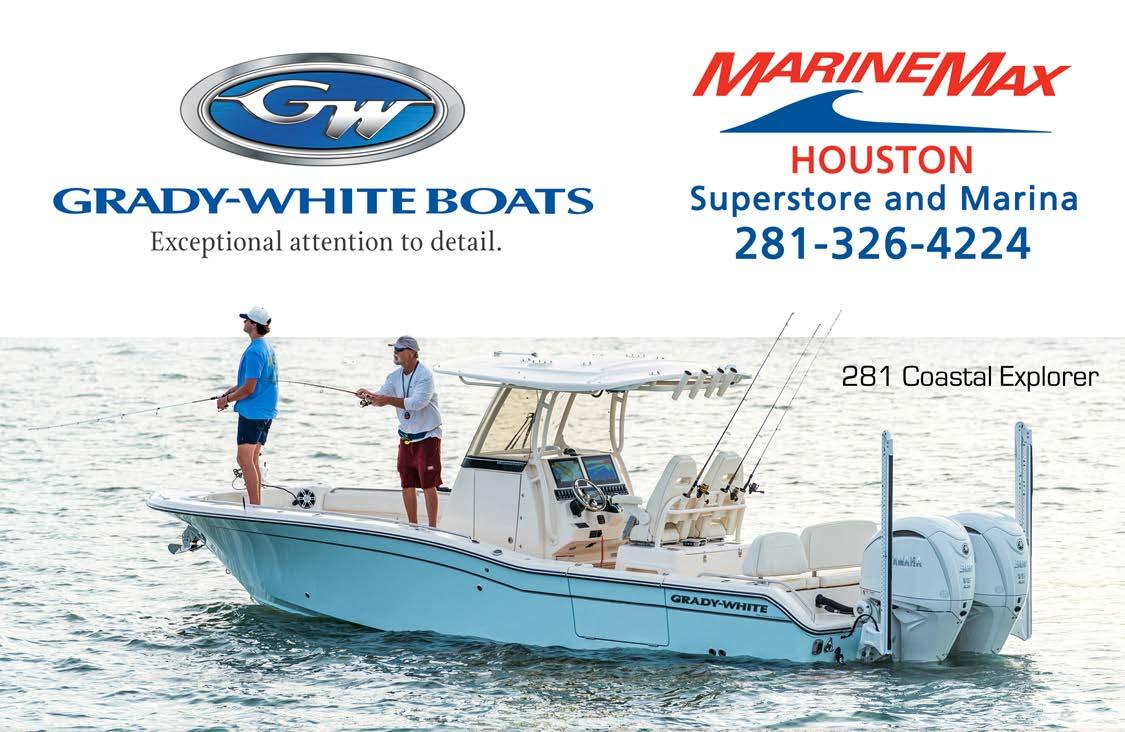
TSFMAG.com | 53
Oz posing with a very nice lemon on a South Texas beach.


JAKE HADDOCK
MOSTLY SIGHT-FISHING
HERDING SHEEP
They are fish of many aliases. You may know them as prison fish, bay snapper, convict fish, or my personal favorite – Texas permit (Archosargus probatocephalus). They are formally known as sheepshead, and they are likely the most frustrating species you’ll ever cast a fly to on the Texas coast. If you ask any fly angler if they’ve ever been successful in landing one, you’ll likely hear some mumblings, along with a four-letter word or two. Those who have landed one will typically be ecstatic to tell you the story, and maybe even think they’ve cracked the code with a super-secret fly that’s G14 classified. However, that attitude may change as sheepshead have a way of humbling even the cockiest of anglers. Some anglers have given up hope altogether, and don’t even waste energy to cast to them anymore. I’ve observed this several times from my poling platform while encouraging my angler to take a shot. While the odds are stacked against you when presenting your average redfish fly, you just never know. And you will certainly miss one hundred percent of the shots you don’t take.
Presenting a proper fly pattern in a decent manner greatly increases odds of getting a take from these picky eaters. I shouldn’t call them picky, as they are
truly opportunistic feeders, but it makes you wonder sometimes as they stare at your fly lying on bottom, appearing to be counting the thread wraps. A proper fly pattern for these fish is typically something to mimic a crab of sorts, and with enough weight to find bottom quickly. The colors and size of the fly varies depending on the type of structure they are feeding around. I’ve had success with #6 crab patterns, black in color, when fishing hard structures like live oyster reefs, but have also had luck on #1 or #2 crab patterns in tan or olive when fishing seagrass beds and sand bars. These are not the only patterns that work, it’s just what has worked for me the last several years. Constant experimentation is required to stay on top of your sheepshead game.
As far as making a presentation goes, there’s generally two methods I’ve observed to work well. If you can set up on a fish that you have spotted from a distance and is swimming a straight line, place the fly far enough ahead so the fish will not hear the splash. This could be a couple feet or five to six feet, depending on the depth of water and the speed the fish is travelling. Either way, you want the fly to be resting on bottom by the time the fish is getting close to it. When the fish gets within a foot or so,
54 | May 2024
Sheepshead fly pack by Sightcast Fishing has all the necessities.

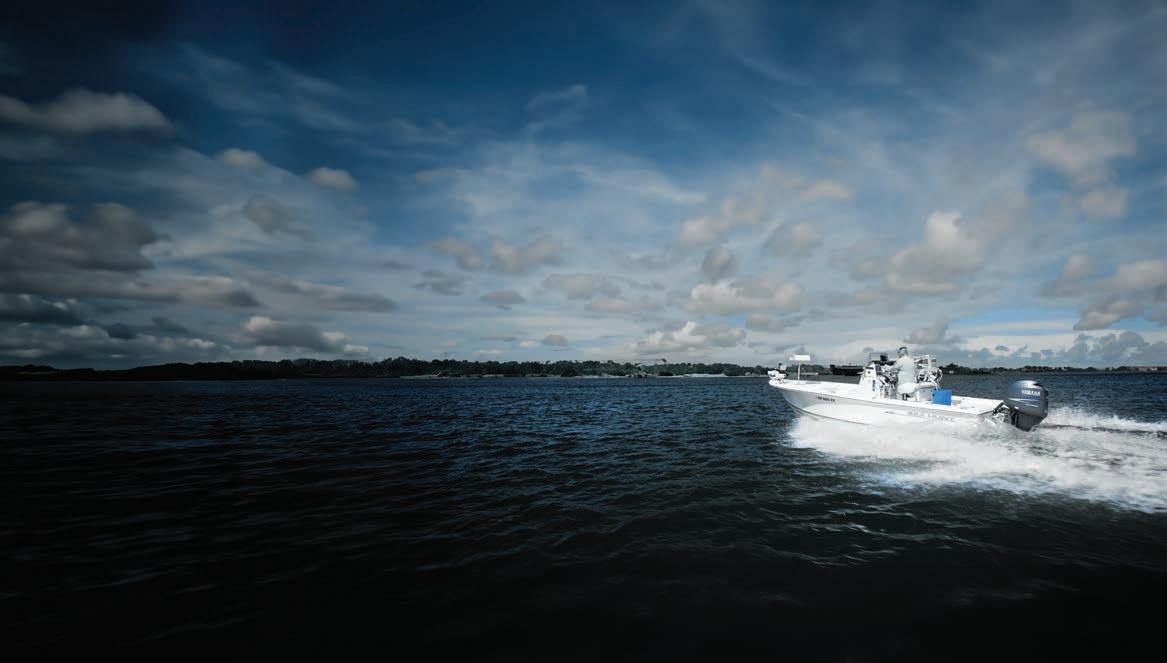


millenniummarine.com UNMATCHED COMFORT, TIME-TESTED DURABILITY TSFMAG.com | 55


start moving the fly very slowly. If this goes unnoticed to the point the fish will pass it up, give it a short bump. This will make the fly jump from the bottom and the fish will think it just spooked the crab and quickly come to investigate. If no immediate take occurs, you must then go into a series of small bumps and pauses. How or when is best called by the guide if you have one, if not, you just have to do your best to read the fish, moving the fly once they seem uninterested.
The second method is my favorite and this is for a fish slowly feeding around some scattered structure, whether it be shell or even a clump of wigeon grass. I like to throw the fly just to the side of the fish about a foot, not in front of it but to the side so that the fish must turn to find it. There is risk of spooking the fish with this cast but the ones that don’t spook will often eat. They may even strike as soon as the fly hits the bottom. If not, you have a chance to entice them with a small bump of the fly line. No matter which presentation you go with, the important thing is you must let the fly rest on bottom as the fish is approaching. They typically want to pin the crab to the bottom in a natural feeding manner. This is not like a redfish that you can strip the fly in front of its face and get a reaction bite.
Reading the fish to see the eat is often paramount, as most times you can’t feel it unless the fish takes off going away after the eat, which doesn’t happen often. No, this take is generally subtle like a bonefish that gracefully tips down on your fly. I’m watching for the dorsal fin to spike and the tail to scrunch with a little wiggle. This takes lots of observations to read, but once you see it you won’t miss it. A sudden and strong strip set immediately after you see the eat is required as sheepshead have a firm mouth and some serious dentures. I’ve witnessed angler’s hooks broken in half by the jaws of these fish. I have also witnessed a fish landed by a hook wedged between their large front teeth. For these reasons I like a pretty serious hook for sheepshead-specific flies. I must give credit to my good friend Barrett Garrison for dialing in the hook of choice as he’s put in as much thought as I have to figuring out this sheepshead fly game. That hook is a Gamakatsu SL12S 1X short, and it works very well at finding home when you come tight. The wire of this hook is strong enough to handle the abuse and the point is long and very sharp with a slight beak that

helps the hook bury in the fish’s mouth. I’ve witnessed much better hookups since using flies tied on this hook.
You can get opportunities for sheepshead on the Texas flats yearround, but I see the majority of them from May to November. I believe this is in correlation with their annual spawn which occurs late winter to spring in deeper nearshore waters. I think this could also be why I tend to see a lot of sheepshead on main bay shorelines during late spring and early fall, as they are likely transitioning to and from their spawning grounds. One thing is for sure though, they can be tricky if you’re trying to pattern them in numbers, as they are typically here today gone tomorrow. Although, you can improve your odds by targeting specific reefs or structure-laden shorelines. If you can pattern them to a specific area on structure, this seems to hold as good a pattern as any for a few weeks or until the weather makes a drastic change. I’ve found some super-productive spots in the past and the following year did not find a single fish in that same area. Nothing appeared to change with the structure or the way the water flowed to it; they just always keep you guessing. I suppose that’s why I tend to enjoy chasing them, as they always present a challenge.
I hope this gives you some insight into tactics for targeting these tricky fish on the Texas coast. They often go overlooked by the average fly angler but, make no mistake, they are just as much a prized catch as any of the fancy flats species that anglers travel the world to chase, and they are right in your own backyard. Especially when you’re talking about 20” plus sheepshead, which is the size that I really like to go after. So, pack a few extra crab patterns in your box this summer and try your hand at herding sheep.
CONTACT
Jake Haddock grew up in the back bays of Port O’ Connor where he developed a great passion for saltwater fishing. In his younger years he was a youth writer for this publication. In present day he enjoys guiding light tackle and fly clients in Galveston and occasionally Port O’ Connor.
Phone 713-261-4084
Email frigatebirdfishing@gmail.com
Website www.frigatebirdfishing.com
Jeff Hewitt with his 1st Place Sheepshead during the 2023 Galveston Classic.
56 | May 2024
My wife Marisa with her PB sheepshead. Greg May with his first sheepshead.

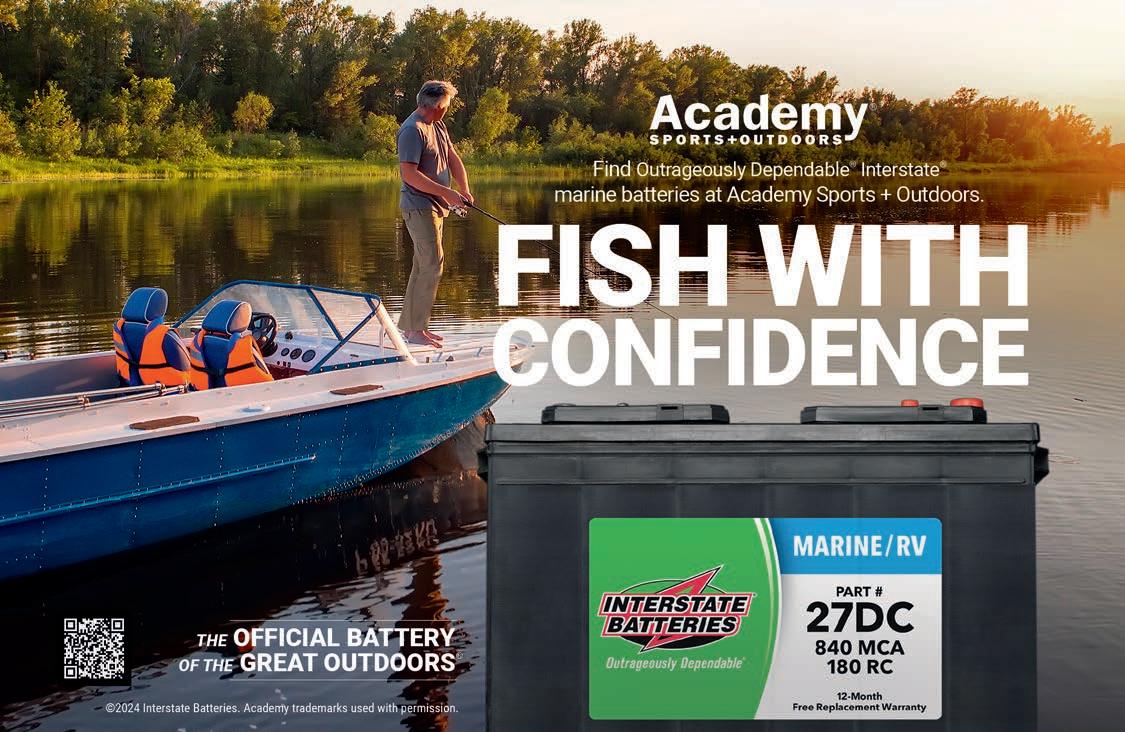
TSFMAG.com | 57
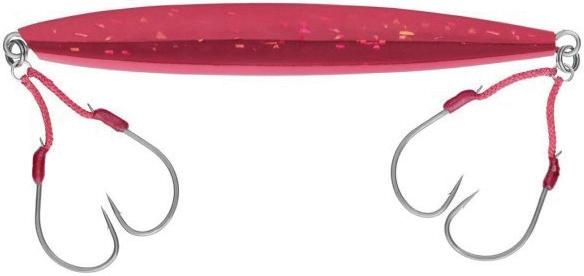

Millennium Marine
SPRO Shimmy Flat & Shimmy Semi Long
The secret is out. Long practiced by the Japanese and more recently by Australian anglers, slow pitch jigging is more recently catching on in the U.S. It’s a different technique that requires different equipment than conventional speed jigging, yet it’s just as effective, and sometimes more so. Rather than simulating a fast-fleeing baitfish to entice an aggressive strike, a slow pitch jig flutters and falls to imitate wounded or dying bait, representing an easy meal even for the most finicky finfish.
These jigs also offer the convenience of rapid deployment. All styles, colors and sizes come pre-rigged with premium Gamakatsu Assist 700 hooks. “If an angler just wants to tie a jig on and put it down, this is it, ready to go, right out of the package,” says SPRO Sales Manager Syd Rives. www.Spro.com
Our unique, patented saltwater design provides unmatched comfort and durability, no matter how severe the conditions might be. Featuring the breathable, cool fabric of Millennium Marine’s ComfortMax seat for mold and mildew resistance. The Pro-M Series can withstand the elements from saltwater to blazing sun, thanks to anodized aluminum construction. Each seat in the series mounts to any standard boat seat pedestal and comes with a one-year warranty.”
https://Millennium-Outdoors.com/millennium-marine/pro-m-series/
American Tackle – Tsuka 2 Complete Carbon Handle
American Tackle’s Tsuka 2 delivers the industry’s first complete carbon handle, earning Best in Show honors at ICAST 2023. Engineered for discerning anglers and forward-thinking rod designers, the Tsuka 2 pushes the boundaries of carbon handle technology, offering unprecedented strength, feel, and weight relief with a slim and ergonomic design.
Features & Benefits:
• Blow-molded carbon fiber construction
• Lightweight design for extraordinary strength-to-weight ratio
• Ergonomic design for optimal comfort and control
• Molded rubber butt cap with AT logo
• Neoprene sleeve designed to protect Tsuka 2 handle when not in use Shop for the Tsuka 2 at https://MudHole.com/tsuka2

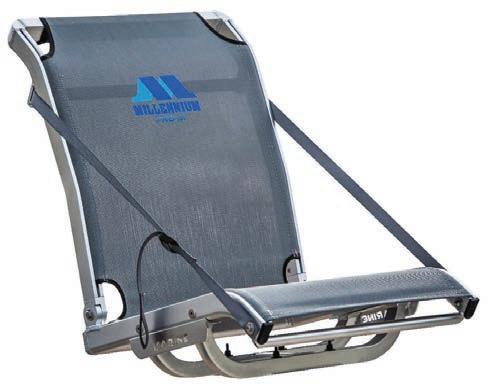
PRODUCT
58 | May 2024
Gamakatsu Nano Alpha
Gamakatsu®, one of the world’s leading manufacturers and innovators of fishing hooks is proud to introduce a proprietary new finish for their most popular hook styles. In the ever-evolving world of fishing tackle, Gamakatsu has once again raised the bar with their latest innovation: the Nano Alpha finish. Representing a paradigm shift in hook performance, these hooks are a testament to Gamakatsu’s commitment to excellence. The Nano Alpha Hooks offer anglers a plethora of advantages, including slicker performance and enhanced corrosion resistance—all at the same affordable price as their standard hooks.
Key Features of the New Nano Alpha Hook Technology include:
· 2X Better Hook Penetration
· 4X Better Corrosion Resistance
· Affordable Excellence
For more information, please visit www.Gamakatsu.com

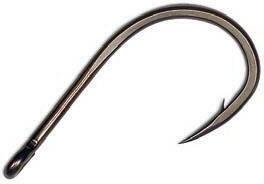
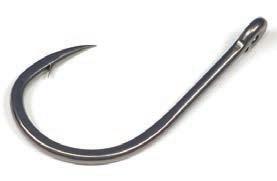

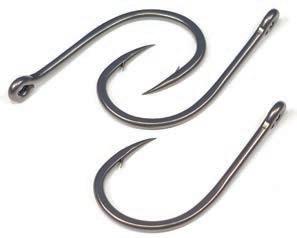


Huk Next Level Pants: Designed for Optimal Comfort and Performance
Huk has revolutionized the angler’s wardrobe with the Next Level Pant. This collection boasts a blend of 50% cotton, 40% polyester, and 10% spandex, offering unmatched flexibility, quick-drying, stain resistance, and anti-microbial properties with UPF 30+ rating. Adjustable waistband ensures comfortable fit and gusseted crotch allows for unrestricted mobility. The Next Level Pants, equipped with a zippered back pocket and cargo pocket, provide practical storage, keeping essential gear secure and easily accessible.
• 55% cotton, 35% polyester, 10% spandex
• Quick Drying
• Stain Release
• Anti-microbial
• 4-way Stretch
• UPF 30+ Sun Protection
• Adjustable Waistband
• Gusseted Crotch
• Zippered Rear and Cargo Pocket
• Available in Core Colors
• Men’s sizes S-XXXL
www.HukGear.com
Z-Man Texas Eye Jigheads 5/2024
Adding snag-resistance and new dimensions of movement to Z-Man ElaZtech softbaits or other plastics, the Texas Eye Jighead series features strike-centric 3D eyes and articulated, free-swinging jighead-to-hook connections. The original Texas Eye Jighead comes equipped with a 3/0 VMC extra wide gap hook with bait keeper in three weights and five eye colors; Texas Eye XL Jigheads sport a 5/0 VMC hook in 3/8- and 1/2-ounce sizes, built for bigger 5- to 7-inch soft plastics— including the DieZel MinnowZ, Scented Jerk ShadZ and Scented PaddlerZ. Armed with a lighter-wire 1/0 VMC hook in 1/6- to 1/15-ounce, Texas Eye Finesse Jigheads perfectly match smaller, finesse softbaits like the Z-Man 3” MinnowZ, 3.5” Scented Jerk ShadZ, Kicker CrabZ or Salty Ned ShrimpZ. All ElaZtech baits are super soft, supremely durable, naturally buoyant and made in the USA - www.ZManFishing.com.
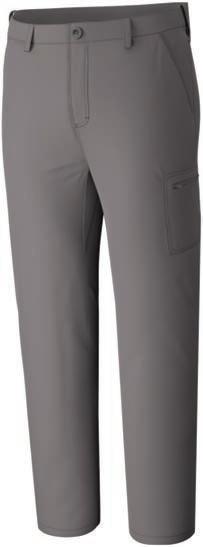
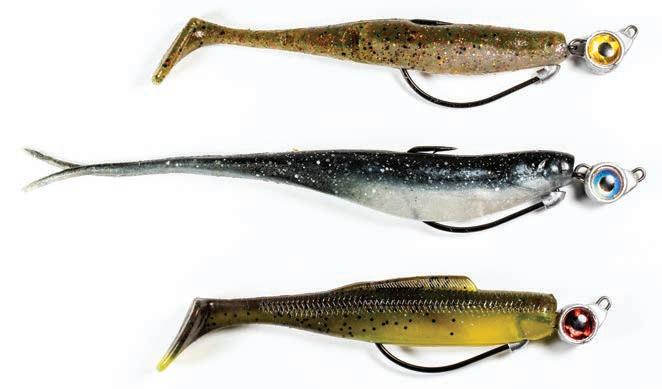
HIGHLIGHTS
TSFMAG.com | 59

Matagorda BINK
Bink Grimes is a full-time fishing and hunting guide, freelance writer and photographer, and owner of Sunrise Lodge on Matagorda Bay.
Telephone 979-241-1705
Email binkgrimes@yahoo.com
Website matagordasunriselodge.com
THE VIEW FROM Matagorda
May brings the first glimpse of summer and the last glimpse of spring. May is all about consistency in weather patterns. It is the first month of the year when the magic of 70° water temperatures is here to stay. Why is the 70-something mark so magical? Warmer tides elevate activity among all species, baitfish included. When mullet, shad, shrimp and glass minnows are on the move, they are more readily available to the predator species we target like trout and redfish. Think about it; you have become a lot more active since temperatures have risen and the sun has shown daily. The same applies to our fish.
I can’t wait to make my first wade on a hallowed flat stationed between the Port O’Connor jetty and Pass Cavallo. With an emerald incoming tide, few wading sessions rival it with a dog-walking plug.
Of course, when waters are green in East Bay we will opt for heavier trout there. You have heard it like a broken record, but deep shell in East Bay holds quality fish. East Matty had a decent spring for lure-chunkers tossing Bass Assassins, Down South and MirrOlures while drifting. Live shrimp, Gulps and Vudu Shrimp under a Mid Coast cork is always game-on with winds less than 10 knots.
In West Matagorda Bay, glass minnows began to show in April. The food chain was given a shot of adrenaline with late winter rains that balanced the brine. Minnows, shrimp, shad, crabs and mullet have been the beneficiaries, as has the habitat.
There should still be a few of the tiny anchovies left in May, but the return of shad and mullet to the shorelines is what we are looking for to provide a consistent topwater bite.
pretty girl that gave you a smile in college.
We start eyeing the jetty rocks in May. Texas’ jetty systems can be likened to a major lifeline of its estuaries. Like an artery pumping blood to the heart, a jetty is a thoroughfare pumping new recruits of forage species and fresh brine to the upper reaches of bays and backwaters. It is a haven for shad, shrimp, anchovies, pogies, mullet, ballyhoo and crabs filtering in and out, and the jetty coughs up a new crop of fish with every May tide.
On a normal day in May, big reds, jacks, sharks and even tarpon hang out around the rocks; and, the largest speckled trout of the summer are routinely caught there as well.
Good things are in store for our fisheries in the coming days with the new trout regulations in place. Ninety-nine percent of the anglers I speak with at the dock are excited about how these conservative limits will restore our world-class trout fishery.
Even though trout limits have been tightened recently, please continue to practice catch and release. The regulations may say 15-20 inches, but I still have a hard time putting a knife in an 18- to 20inch trout. Every fish you give another chance is an opportunity for continuing to grow into an eight, nine, and dare I say 10-pounder. It can happen. The history of Matagorda fishing proves it.
Sunrise Lodge and Properties specializes in hunting, fishing, waterfront lodging and entertainment, vacation rentals, and coastal and farm and ranch real estate

Look for more slicking action this month. As more oily-fleshed baitfish creep along the shorelines the trout will adapt to that diet and give away their locale as they feed aggressively. A fresh slick carrying the aroma of watermelon gives an angler confidence; just like that
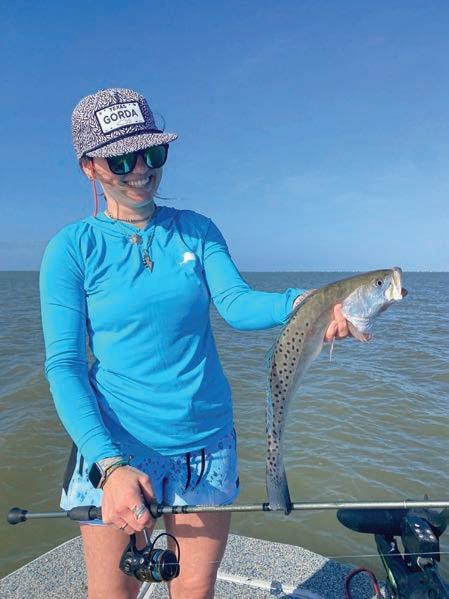

GRIMES View The Video Open Camera and hover over QR Code. When link appears at top of screen tap to open in YouTube. 60 | May 2024

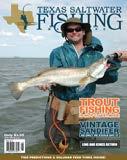
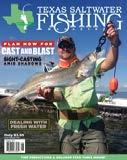



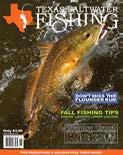



Order today and receive a 12-month subscription for $32.00. Hurry and sign up family members and/or friends at the same rate! GET FREE E-MAG WITH HARDCOPY PURCHASE! AM EX 361-785-3420 Monday – Friday 7:30 a.m. – 4:30 p.m. Subscribing for more than yourself? Please write additional information on a separate sheet of paper. To order subscriptions simply fill this form out below and mail it to the address below, fax, email or go online. SUBSCRIPTION FORM FREE E-MAG WITH HARDCOPY PURCHASE E-mail required 12 months print - $32.00 12 months digital only - $15.00 24 months print - $56.00 Auto Renewal available with all subscriptions! 361-792-4530 TSFMAG.com | 61
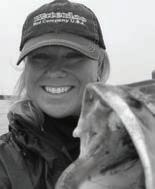
Port O'Connor Seadrift
Captain Shellie Gray was born in Port Lavaca and has been guiding in the Seadrift/ Port O’Connor area full time for the past 22 years. Shellie specializes in wading for trout and redfish year round with artificial lures.
Telephone
361-785-6708
Email
bayrats@tisd.net
Website
www.bayrat.com
Facebook
@captsgaryandshelliegray
MID-COAST BAYS With the Grays
Summers here on the Texas midcoast are not for the weak of heart.
Remember the long, dry and hot days last year? Well, I sure do! We also had what seemed months of continuous high barometric pressure that made for some challenging days on the water. I know nobody can predict the weather months in advance but with so many warmer than average days we have experienced over the last couple of months I can’t help but cringe. Here’s hoping we do not have another summer like 2023 any time soon.
Think of fishing locations in May as a mix of late spring and early summer patterns. Water temperatures will be holding steady with cold fronts mostly in the rear-view. Consistently warm temperatures will have baitfish and gamefish species alike congregating on sandy bottom shorelines and along open water oyster reefs. In recent weeks San Antonio Bay has been holding some good numbers of speckled trout, albeit with lots of undersize fish in the mix. Given that we will still be experiencing days with late spring weather conditions, our days on mid-bay reefs may not be as frequent as we’d like due to gusty winds. This is when wind-protected shorelines of major bays will become go-to areas.
I have mentioned often how advantageous it can be to fish in or around cuts or drains into back lake areas, but some of these “ fish highways” can become poor choices due to boat traffic traveling to and from those backwaters. It could be foolish and maybe downright dangerous on busy weekends as many of these areas have only one navigable route in and out. I have witnessed many times ignorant fishermen blocking these cuts, making for heated arguments. Instead, when we have a good moving tide, whether it be incoming or outgoing, look to target the areas a few hundred feet either side of the channels. Fish will still be using the water movement as an advantage in feeding, and it’ll sure beat getting into a heated discussion or altercation.
Another area that shines this time of year, and I don’t talk about it perhaps as often as I should, is the Intracoastal Waterway. The ICW has some very productive and varying structure that makes it an excellent choice this time of
year, especially with our higher springtime water levels and winds.
While I have waded the edges of ICW many times in the past, it can be dangerous with the unpredictable depth of the potholes and guts. Barge traffic can also make for some treacherous wading due to the amount of water they displace. Because of these I think it is more suitable for boat fishing.
Let’s talk more about the structure. If you are traveling south from Port O’Connor toward Charlie’s Bait Camp, the structure on both sides of the ICW is mostly sand with shallow areas of grass and deep potholes. I almost always prefer the north side of the ICW due to it offering more guts and potholes than the south side. From Charlie’s Bait Camp toward San Antonio Bay the north side has many oyster pads of varying depths, but typically a couple of feet.
Trolling motors come in handy along the ICW to help you cover more water while maintaining position parallel to the shoreline. You can also anchor to fish an area thoroughly before moving on.
If the baitfish are active, jumping with a lot of surface activity, I will opt to throw a small topwater like the Super Spook Jr. Soft plastics also work well but the oyster beds south of Charlie’s can be tricky. I will often use the cork and jig method, with my lure a foot or so below the cork. Scented soft baits are a great choice for this. My favorite for the erratic movement and impregnated scent is the Bass Assassins 3.5-inch Lit’l P&V in Slammin Chicken or Salt & Pepper Silver Phantom Chartreuse Tail. The Gulp shrimp is another good choice, not because of its action, but its pungent scent.
In closing, I must mention how excited I am for the new reduced bag limit for speckled trout; changing from 5 fish to 3 fish daily with the 15 to 20-inch slot. I strongly believe this is a big step in the right direction for helping our trout population rebound after the recent series of freezes and floods. Of course, it is going to take a few years to notice significant improvement, but this conservative move by TPWD can only help.
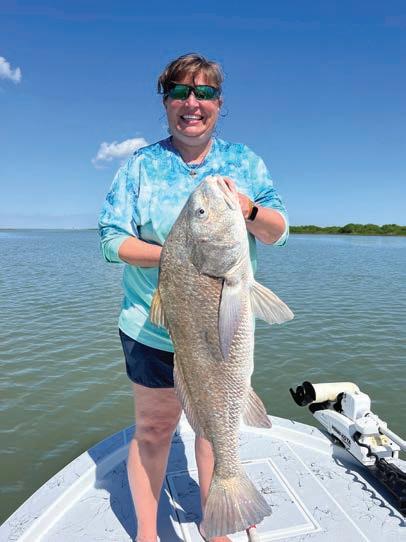
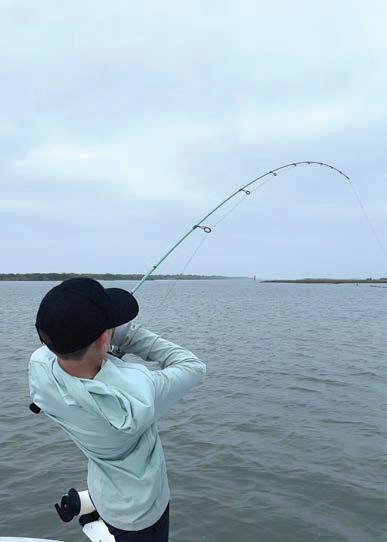 CAPT. SHELLIE GRAY
Sequoya Janacek caught this tailing brute by sight-cast along the ICW.
CAPT. SHELLIE GRAY
Sequoya Janacek caught this tailing brute by sight-cast along the ICW.
62 | May 2024
Bowen Williams enjoyed some big pulls while drifting the shorelines of the ICW.


A Ray’s “Virgin Birth”
Did you see the headlines earlier this year suggesting that a round stingray at a North Carolina aquarium may have become pregnant by one of the male sharks in her tank? As cool as the idea may sound, it is impossible. Sharks and stingrays are somewhat related (about as close as a human is to a mouse), but about 300 million years of evolution separate the species. Genetically, they’re too different to reproduce successfully. But the reality of what probably did happen is just as cool: it’s possible that Charlotte, the solo stingray, cloned herself.
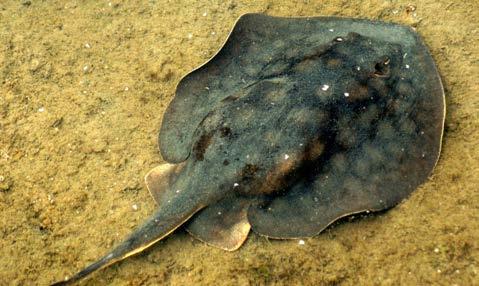
Most animal reproduction is sexual, which means two parents contribute genetic material to the fertilized egg. But asexual reproduction occurs in the animal kingdom too, where offspring inherit all their genes from a single parent. One example is fragmentation in starfish: if an arm breaks off, it grows a whole new starfish while the original starfish regrows its arm. Another example is fission, in which some sea anemones and coral polyps split into two separate but genetically identical individuals.
But sharks and rays don’t split themselves in half or break off a fin and grow a whole new individual. Their form of asexual reproduction is called parthenogenesis, a Greek word for “virgin birth.” In parthenogenesis, a female self-fertilizes her eggs and gives birth to offspring that are clones of her. Scientists have documented parthenogenesis in bonnethead sharks, zebra sharks, blacktip sharks, and sawfish, but not any rays. Another possibility is that Charlotte’s pregnancy did arise from sexual reproduction, but she stored the sperm from a mating encounter years earlier. So how do we know which it was? A DNA test of Charlotte’s offspring will tell whether it was sperm storage or self-cloning—and confirm that it wasn’t a rogue shark.





Your Source for Premium Polymer Decks and Docks Featuring Lifetime Limited Warranty 361-553-7200 CoastalNailandTool.com Proudly Serving Texas Since 2003 Authorized Dealer Why ThruFlow? • Easy Assembly • Durable • Permanent • Eco-Friendly • Maintenance Free • Non-Slip Surface • UV Resistant • Panels Never Get Hot www.ScienceAndTheSea.org © The University of Texas Marine Science Institute Science
TM
Sea and the
TSFMAG.com | 63
The round stingray might be the first ray species known to reproduce asexually. Credit: Robin Miller, CC BY 2.0

Upper Laguna/ Baffin
David Rowsey has 30 years in Baffin and Upper Laguna Madre; trophy trout with artificial lures is his specialty. David has a great passion for conservation and encourages catch and release of trophy fish.
Telephone 361-960-0340
Website
www.DavidRowsey.com
Email
david.rowsey@yahoo.com

@captdavidrowsey
HOOKED UP WITH Rowsey
Almost daily someone on the deck of the big Haynie will ask me, “Rowsey, what’s the best month to fish down here?” Well, I guess that depends on your individual goals, but I will say that May is hard to beat when it comes to getting lots of bites without sacrificing the quality of the fish.
I’ll be the first to admit that I no longer document every outing nowadays like I did for 25 years. Lucky for me, God blessed me with a fish brain, (Sally would confirm this). Seriously, I’m not good at remembering much, but I can remember when, where, what lure, and with whom I caught fish many years ago. I know a number of fishermen that can do the same and we all agree that sometimes it’s more of a curse than a blessing. Saying that, my fish brain rewinds the tape to every month of May from years past and it’s like opening a box that is big enough to hold a new gun on Christmas morning when you were 12 years old. The anticipation is high as you finally get to see the print on the package that says Winchester.
May is the acid test for how the rest of the summer may go here in the Lagoon and Baffin. The full moon that falls closest to the end of April and beginning of May will bring us the biggest and (hopefully) cleanest push of ocean water we receive all year.
We are really going to need it this year as we have a brown algae bloom that has been creeping in on us for a couple months now. This has been confirmed through samplings by Dr. Mike Wetz, Chair for Coastal Ecosystem Processes at the Harte Research Institute for Gulf of Mexico Studies. As of now, 390,000 to 1.3 million cells per milliliter have been detected in numerous samples between Laguna Salada and Alazan to the Tide Guage Bar. However, more samples are being pulled as we speak towards the mouth, and also waters that lie north and south of Baffin Bay.
Looking at the glass half full, these have popped up numerous times over the past 15 years and have been diluted by clean water from the gulf. The flip side is not as positive for guys like me that like to target visible structure such as potholes and rocks. Super bright lures that make a lot of noise will become your confidence plugs if this stuff hangs around. Saying all of that, trout are not leaving the bay system if this bloom is prolonged. Just a little harder to target. Surface bait activity will certainly be your best chance of pinpointing them if the brown water prevails.
With the big push of water that comes at the beginning of the month, also comes a big push of fish. I’m not a biologist, rather
some guy that just happens to cover more miles in a year by boat than car or truck. I’ve read and heard everything from both sides when it comes to trout migrations, or if there even is one. I’m a believer in three kinds; bay trout that never leave, surf trout that never come in, and the tide runners that certainly make themselves present every year through the Land Cut.
There used to be much debate amongst friends on this theory. The non-believers tend to think it’s not possible without scientific evidence. However, those of us who are out most every day can recognize them as easy as our own child in a crowd. Shorter, stronger, pale yellow mouths, and shoulders like JJ Watts – there is zero doubt that these are non-resident fish when you walk into them. It’s OK if you need Dr Fauci’s stamp of approval to be a believer, but in the meantime just go enjoy the bounty and call them “Baffin trout.” I don’t think anyone will have much to say as long as the drag is peeling and the water is frothed.
The migration comes up from the south via the Land Cut. Areas like the Rocky Slough shoreline and every submerged hump or spoil island will have the potential to hold good ones. Soft Dines, MirrOdines, She Dogs and Bass Assassins are my go-to lures during the time these fish pass through and replenish the bay. Mullet and shad will make up the vast majority of the food chain and all of these lures are great replications of the exact thing they are following into the bay to gorge on.
Remember the Buffalo! -Capt David Rowsey
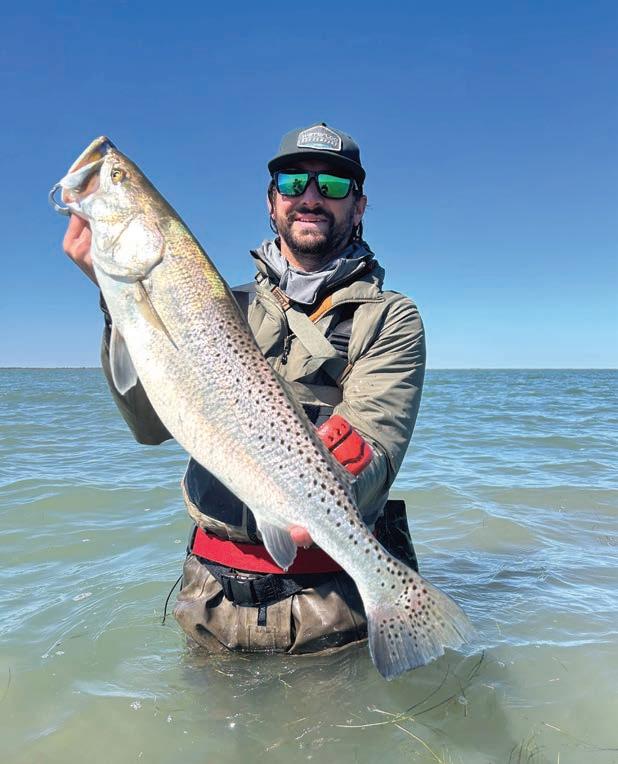
DAVID ROWSEY
64 | May 2024
Marc Peeler with Bayou City Anglers tricked this gorgeous trout while grinding with a Bass Assassin on a not-sofriendly high barometer day. Released very healthy!
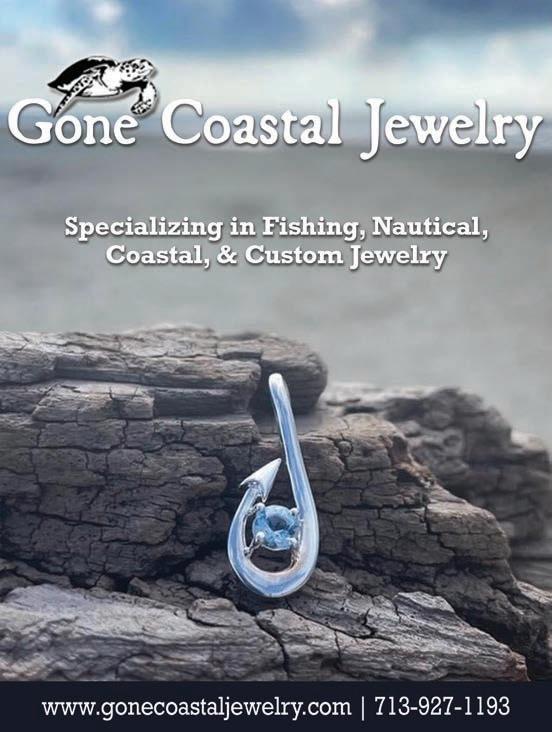
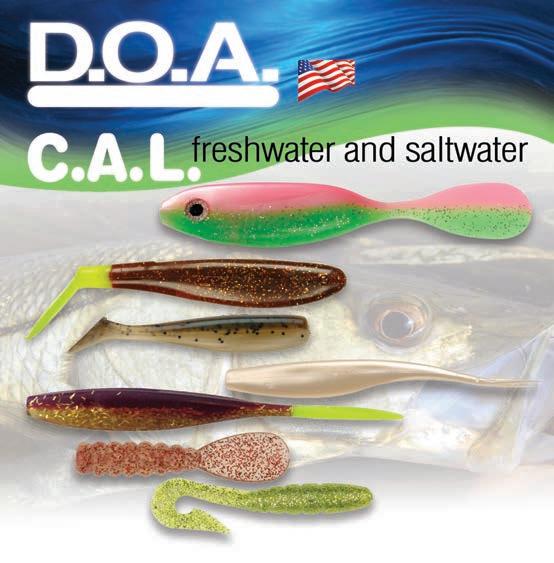
The C.A.L. family of lures offer a wide variety of lure shapes for both freshwater and saltwater fishing. From small ponds to deep jigging ocean reefs, D.O.A. has you covered.
Made from tough soft plastic, each lure is made to match up perfectly to D.O.A. short and long shank jig heads.
www. doa lures.com



Made in USA
C.A.L. 5” Swim Bait
C.A.L. 4” Shad Tail
C.A.L. 3” Shad Tail
C.A.L. 4” Jerk Bait
C.A.L. 5.5” Jerk Bait
C.A.L. Paddle Tail
221981_DOA_10.5_TxSF_CAL Family_3.685 x 4.875.indd 1 10/5/22 2:34 PM TSFMAG.com | 65
C.A.L. Curl Tail

Port Mansfield
Captain Wayne Davis has been fishing the Lower Laguna-Port Mansfield for over 20 years. He specializes in wade fishing with lures.
Telephone 210-287-3877
Email
captwayne@kwigglers.com
WAYNE’S Mansfield Report
Greetings from Port Mansfield! What an epic trophy trout season we’ve had. One of the best for consistently being able to put folks on big trout. Most of my trips this season resulted in personal bests (PBs) for some and we certainly had some missed opportunities. You simply cannot land every blow up, hookup, or swipe that presents itself. Maybe this is part of what keeps anglers casting.
Highlights this season were several trout over nine pounds, a few more in the 8-pound class, along with multiple 5- to 7-pounders. This season was also special to me as I now have a new PB of my own. I am proud to claim a trout weighing more than 11 pounds. This fish was a little over 31 inches with a very robust body, and it’s worth noting that it was not even during the beginning of the spawning period. I was super stoked, especially because she came on a Mansfield Knocker. Had this fish been caught around the full moon in March she might have weighed 12 pounds or more.
If you are thinking about next year already, so am I because each year moving forward has potential to produce the next new state record trout. If you have hunted trophy trout with me you know I can be stubborn when it comes to leaving areas, but my diligence has paid some handsome rewards thus far and I’m planning to stick to it and hope you might decide to join me.
As all should be aware by now, our new trout regulations became effective March 26 and I am very hopeful this will lay the foundation for establishing an epic fishery. All our trout 20-30 inches are protected until September 1, at which time anglers may only keep one fish twenty-eight or longer with a trophy tag. This mirrors the redfish tag policy that has been in place for years. Kudos to anglers across the state and to Texas Parks and Wildlife for taking appropriate action on this issue.
Now back to fishing; our water levels have risen and we have been dealing with high winds as expected this time of year. I am still working in some areas for big trout, while also fishing back lakes for tailing reds, which incidentally can also present shots at big trout mingling with redfish in the recently flooded backcountry.
the floaters, and when I cannot talk them into taking one, my trusty G2 Spinning Rod rests in the holster of my wade belt with a KWigglers soft plastic at the ready. Depending the structure and depth being fished and/or the attitude the fish display, that soft plastic bait could be anything from a 4-inch paddletail to any of the full or junior-size Ball Tails, Willow Tail, or Wig-A Lo.
I’ve heard a lot of chatter over the years about topwater colors and whether or not the color of the top (dorsal) side truly matters to the fish. Well, I have put some thought into that subject and at first I would probably have said the fish are typically seeing it from underneath, so the belly is what they’re focusing upon, and therefore more important than the topside coloration. Check out the video discussion via the attached QR Code to learn my current opinion on this topic. You might be surprised.
I expect boat traffic will increase significantly all across our bay system in coming weeks, which means we should all be as courteous to our fellow anglers as possible at all times. Remember to go upwind of waders and give wide birth to other boats and anglers. This alone will help dramatically. Additionally, tournament season is here with one of the biggest on the Texas Coast – that being the Shallow Sport Boat Owners Tournament scheduled for May 10– 12 at South Padre Island. This is not just a fishing tournament but an event many wait for all year. We are anticipating more than 1200 anglers and Shallow Sport will be giving away a 24-foot Classic. Check their website for more details. Hope to see you there. I’m sure it will be an exciting time!
Remember, fresh is better than frozen.
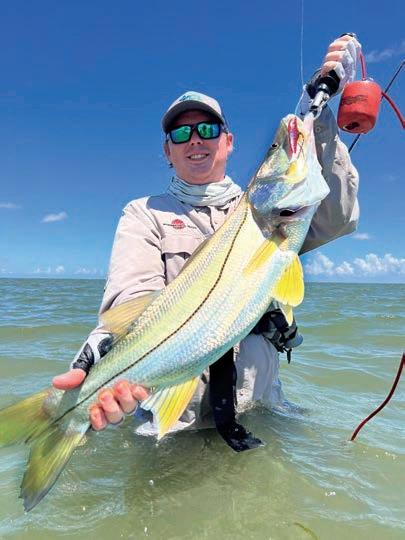
Another early summer pattern is fishing high on the sand where you can find both pods of reds and occasional “wolfpacks” of big trout. I am also happy to report that we have been picking up a few flounder lately.
Topwaters have been getting the most time by far on my G2 Classic Green Rod. I have been having very consistent results with

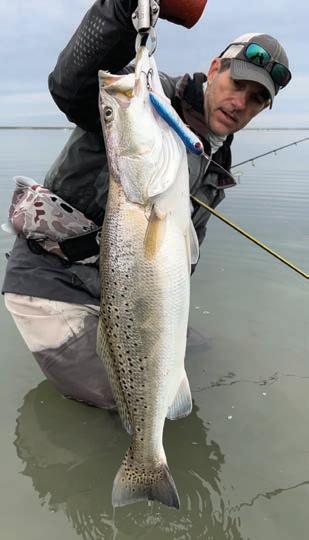
View The Video Open Camera and hover over QR Code. When link appears at top of
tap to
screen
open in YouTube.
WAYNE DAVIS
Brady Walker scored big on this 32-inch snook that weighed an honest 11-pounds – CPR!
66 | May 2024
Yours truly with my new PB that taped a tad longer than 31-inches and pulled the Boga to just over 11-pounds. CPR – Of Course!




TSFMAG.com | 67

Arroyo Colorado to Port Isabel
A Brownsville-area native, Capt. Ernest Cisneros fishes the Lower Laguna Madre from Port Mansfield to Port Isabel.
Ernest specializes in wading and poled skiff adventures for snook, trout, and redfish.
Cell 956-266-6454
Website www.tightlinescharters.com
SOUTH PADRE Fishing Scene
The spring season is in full stride; wildflowers, cactus and yucca are blooming everywhere you look. Our tides have risen to springtime highs. The shrimp hatch is happening right on cue and the fish and seagulls know it.
The south wind blows with a vengeance this time of year. I wouldn’t say I like windy conditions but we can do nothing to control them. We must learn to deal with them and use them to our advantage whenever possible.
How can fishermen use wind greater than twenty-five milesper-hour to their advantage? As I mentioned above, the shrimp hatch is occurring this month, and when the wind blows hard across the flats redfish start gorging on shrimp. This feeding activity causes shrimp to pop to the surface as they flee the hungry reds, which in turn attracts swarms of seagulls that hover above the melee, snapping up any shrimp that were lucky to escape the redfish’s jaws. It all begins with the wind!
As you approach the gull activity, even if there’s only a few birds present, watch for redfish tails waving in the wind as they root along bottom flushing shrimp from the grass. Those tails are an instant giveaway, but redfish might not be the only species enjoying a shrimp dinner. If you look closer, don’t be too surprised if some of those tails belong to trout, especially if they appear around the outer edges of the activity.
The redfish bite has really turned on the past couple of weeks. It seems that most of the fish we’re finding have been in smaller groups, no big schools, and their diet of late has been mostly shrimp and small crabs. No surprise then that our ZMan KickerCrabZ have been so effective. I call it a perfect example of matching the hatch.
Westside back bays are holding reliable numbers of reds at the present time and we are also finding decent numbers on eastside sand flats. While the KickerCrabZ have been the ticket on the softer and grassier westside, I must also say that the wobble and flash of a gold spoon has been hard to beat on the sandy eastside flats. Something you should take note of is that these eastside fish may not hold long on the sand after the sun is well up. Boat traffic will definitely scatter them and shut the bite down on busy weekend days.
that last month. We are currently seeing a few big trout on the sand flats, but the more significant numbers are tucked against spoils and smaller coves, away from boat traffic.
Some of the larger trout have fallen for ZMan baits, especially the Mulletron, which has excellent tail action, even when presented on a slow, straight retrieve. The PaddlerZ, Scented Streakz, and the Streakz Curly Tail have tricked plenty of small, medium, and a few larger fish.
Going back to what I mentioned earlier about trout mixing with redfish on windblown flats and feeding on shrimp under flocks of gulls – muddy water deters fishermen far more than it does fish, trout included. It’s springtime and we can expect near constant wind most of the coming month. Learn to use it to your advantage.
We hope the trout fishery returns to its former glory with the new regulations. But we all know that to help the trout fishery recover, it all starts with us being good stewards of the resource. It’s good practice to keep only what you’re going to eat fresh and release the rest.
May is the beginning of the busiest season on the Lower Laguna. There will be fishing tournaments every weekend with greatly increased boat traffic, making our fish spookier and tougher to catch. I suggest fishing in less congested areas, getting an earlier start, or perhaps fishing later toward evening after things begin to calm down.
The days will soon be getting hotter and long hours of casting means increased arm fatigue. A light-sensitive rod is a must and my recommendation is the Fishing Tackle Unlimited G2 Finesse. It weighs less than three ounces and has a solid backbone for muscling big redfish. Check ‘em out…get one in your hand. It’s been a game changer for me.
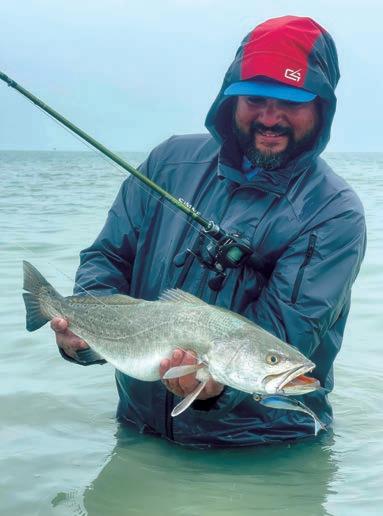

On the trout side of things, I credit the rising tides for our increased ability to reliably target larger fish. No real giants lately but we have been rewarded with plenty of four- to seven-pounders. It wasn’t like

CAPT. ERNEST CISNEROS
in
View The Video Open Camera and hover over QR Code. When link appears at top of screen tap to open
YouTube.
68 | May 2024
Capt. Aaron with a solid trout tricked with a ZMan plastic. Eddie Garcia making a quick release.




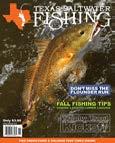



Auto Renewal available with all subscriptions! GET FREE E-MAG WITH HARDCOPY PURCHASE! Order today and receive a 12-month subscription for $32.00. Hurry and sign up family members and/or friends at the same rate! AM EX 361-785-3420 Monday – Friday 7:30 a.m. – 4:30 p.m. To order subscriptions simply fill this form out below & mail it to the address below, fax, email or go online. SUBSCRIPTION FORM Subscribing for more than yourself? Please write additional information on a separate sheet of paper. 12 months print - $32.00 12 months digital only - $15.00 24 months print - $56.00 361-792-4530 TSFMAG.com | 69
FISHING REPORTS
Trinity Bay - East Bay - Galveston Bay | James Plaag
AND FORECASTS from Big Lake to Boca Chica
Silver King Adventures - silverkingadventures.com - 409.935.7242
James expects good fishing to be the norm in several parts of the bays in his area, come the month of May. “We normally have some good fishing for trout down in the lower end of West Galveston Bay this time of year. The fish bite well over a sandy bottom, sometimes in places with some scattered shell, especially on incoming tides in the mornings. You have to watch that though. If you’re too close to the pass itself, a tide moving too strong will muck up the water. Of course, if winds lay for a few days, the surf can blow up too. On the best days this time of year, it’s possible to catch the fish pretty much however you want, meaning topwaters, hardbaits and soft plastics all work well. If the bite is tougher, especially if we have lots of glass minnows around, little soft plastics and spoons can work better. The coves also produce good catches at times this time of year. That’s usually best in the afternoon hours, with fairly high tide levels. Keying on clouds of glass minnows or giant rafts of nervous mullet and slicks are often the keys to finding the fish.”
Jimmy West | Bolivar Guide Service - 409.996.3054
Jim predicts some of the standard patterns which have worked for decades will be productive in East Bay and the surrounding areas this year. “As we do every year, we’re hoping for an early run of good fishing for trout in the surf. If we get some days with medium-light winds with no east in ‘em, or if the winds just die for a couple days, the surf usually busts wide open. Out there, the bite is usually best on topwaters and other hardbaits. The calm days also open up the potential for a good bite out around Hannah’s and the other main reefs in the middle of East Bay. Calm mornings with incoming tides provide good opportunity to throw topwaters out of the boat and catch some trout. We’ll have some working birds in that scenario, but even when we don’t, the topwater bite is sometimes decent around schools of nervous mullet. If it’s windier, out of the east, the south shoreline will produce best, usually in the shallow parts tight to the bank. If we get some late fronts, and the tide levels drop, the fishing out in the middle will pick up right after the north winds lay.”
West Galveston - Bastrop - Christmas - Chocolate Bays
Randall Groves | Groves Guide Service
979.849.7019 - 979.864.9323
Randall loves the fishing around San Luis Pass during the last full month of spring, because so many productive options are available to anglers targeting trout and redfish. “The flats near the pass produce good catches of trout this time of year, some days on topwaters, others on twitchbaits, still others on soft plastics. Keys on the sand bars behind the pass include casting and working lures with or at least at an angle with the current, and finding places with lots of bait and slicks popping. If lots of ribbonfish are present, white Skitter Walks work best. The bite can also be great on main-bay shorelines in both Christmas and Chocolate bays. In those locations, we catch more of a mix of trout and reds. We also do well, mostly on reds, in the back-lakes, targeting fish on shorelines with plenty of jumping bait, or working gulls, even wading birds like egrets and herons concentrated in small spaces. The reds will take topwaters aggressively some days, but they’re easier to catch on soft plastics mostly. And, of course, we’re always watching the surf this month. Hoping for
that first burst of activity, anytime we get a prolonged calm spell.”
Matagorda Bays | Capt. Glenn Ging
Glenn’s Guide Service - 979.479.1460 www.glennsguideservice.com
May is a great month for fishing in the Matagorda area. Look for warming water temperatures and lots of good options this month. When we have calm winds, the drift fishing in East Matagorda Bay will be a solid option, because of the clarity of the water. Look for trout and redfish to be schooling around mid-bay reefs in the west end of the bay and around the reefs near Chinquapin and in Live Oak Bay. Throwing either live shrimp or Vudu shrimp under Coastal Corks generally produces plenty of bites. Wading around the grass beds on the south shoreline of West Matagorda Bay should also be good this month. Best bet in that area is throwing Bass Assassin Sea Shads into the guts or throwing Skitter Walks and Spook Juniors and working them right over the grass beds. The gas wells and deep reefs in West Bay also hold plenty of trout, which are easiest to target in conditions similar to those which improve the drifting in East Bay, meaning days with calm winds. If light winds persist for several days, we always have a shot at getting in the surf in May, and the fishing around the jetties is sure to heat up.
Palacios | Capt. Aaron Wollam
www.palaciosguideservice.com - 979.240.8204
May is an awesome time to fish the Tres Palacios Bay system, with lots of options to choose from. Redfish will start schooling in pods on area shorelines and bayous, feeding on grass shrimp and crabs. Also, any points of shell along shorelines with some grass are good spots to find reds this month. Black drum are also pretty numerous around any shell pads in less than three feet of water. Fresh dead shrimp and popping corks work well to catch those. Trout will likely be found in a variety of places this month. The rigs and reefs out in West Matagorda Bay always have some. Out there, they’re best targeted with live shrimp fished deep under popping corks. The grass beds on the south shoreline on strong incoming tides have plenty of fish, especially around schools of glass minnows and flocks of diving pelicans. The surf also becomes a productive option, if we get some light southeast or north winds to knock the breakers down. Tripletails will migrate into the bays steadily with the warming water temps, becoming numerous by the end of the month. Any structure from Palacios to Port O’Connor could hold singles or a few of these tasty fish.
Port O’Connor | Lynn Smith
Back Bay Guide Service - 361.935.6833
In May, Lynn likes to fish areas close to Pass Cavallo, especially when tides are rolling in during the morning hours. “We do well fishing on sandy, grassy flats close to the pass this time of year. On mornings when the tide’s moving good, we often find the trout willing to blow up on topwaters for quite some time after the sun comes up. The key to locating the fish consistently is locating big schools of bait. By this point in the spring, we don’t really key so much on a few mullet jumping somewhere. We’d much rather see lots of mullet and other baitfish in the same area, hordes of bait really. And, of course, we keep our eyes on the weather and watch for the

70 | May 2024
IF WE SAVE THE SEAGRASS, WE SAVE THE FISH.



Seagrass is critical to good fishing. Marine organisms depend on it for survival—for food, shelter, and oxygen. But boat propellers are destroying Texas seagrass, which is seriously impacting saltwater fishing in the coastal shallows. When boaters do not lift their propeller in shallow water, the prop cuts and uproots the seagrass beds—leaving long barren trenches or “scars” that may take years to heal ... if ever.
Stop Prop Scarring –Lift, Drift, Pole, Troll
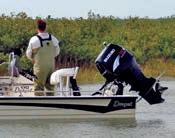


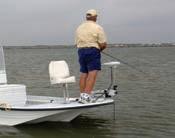
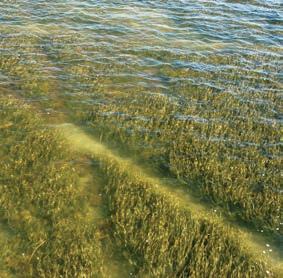

It is ILLEGAL in Texas to uproot seagrass with a propeller. Avoid damaging seagrass –lift your prop!
When in shallow waters, lift your motor and drift, pole, or troll through it. After all, there’s nothing like a redfish on light tackle in shallow water. Let’s keep it that way!
For more information visit: www.tpwd.texas.gov/seagrass
TSFMAG.com | 71 ©JASON ARNOLD
PROP SCARS
pretty water to move into the surf zone, if winds lay for a few days in a row. Really, nothing much beats fishing in the surf. Particularly in spring, before the super-hot weather settles in, it’s often possible to catch numbers of really solid trout along the beachfront. Out there, the drill is pretty much the same as on the inshore flats; we look for concentrations of bait and mostly throw topwaters.”
Rockport | Blake Muirhead
Gator Trout Guide Service - 361.790.5203 or 361.441.3894
Blake likes to fish several different patterns in the month of May. “We usually have plenty of trout and redfish on shorelines with sandy, grassy bottoms this month, in bays like Aransas, Mesquite, San Antonio and Corpus Christi Bay. Best bite is tight to the emergent grass when the tide is high and coming in, and then out in the deeper potholes on lower tides. On lots of days, catching them on topwaters is pretty easy. I like to throw chrome/black and orange/black Skitter Walks. I favor the small ones when the water is calm, and the full-sized ones with it’s a bit rougher. Of course, I also like to throw my purple/chartreuse, pumpkinseed/chartreuse and pearl Sand Eels if the bite is tougher. We also do well fishing around some of the reefs this time of year. That’s usually more productive with the soft plastics than the topwaters. And, we usually have some days when the surf gets right, and when it does, the fishing out there can be the best of the spring. Normally, we catch bigger trout on average out there this month than we do later in the summer, when the winds are calmer and the water being greener more of the time.”
Upper Laguna Madre - Baffin Bay - Land Cut
Robert Zapata | rz1528@grandecom.net - 361.563.1160
The month of May is a very good month for fishing because the fishing turns into catching more of the time. The fishing menu includes the hunts for big trout, big redfish and big flounder. It’s easy to catch fish in May because of the variety of lures and baits that work well on most days. Most of the fish will be found in less than two feet of water, along grass lines, drop-offs, and in areas with sandy potholes. The trout will especially be in these types of areas, as they will be spawning actively. I will be looking for areas with concentrations of bait and approach them quietly from a good distance with my trolling motor or wade into them. The different tactics will include throwing live shrimp under popping corks and natural colored Bass Assassin Die Dappers rigged on sixteenth-ounce Spring-Lock jigheads with about twenty-four inches of fluorocarbon leader line. The new smelly Assassin Lil’ P&V hanging about fifteen inches under an Assassin Kwik Kork will also produce fast bites. On sunny days, I’ll also be looking for red and black drum in ultrashallow water and sight-casting to them with shrimp-flavored Fish-Bites.
Corpus Christi | Joe Mendez - www.sightcast1.com - 361.877.1230
In May, fishing in the Upper Laguna Madre, Baffin Bay and Corpus Christi Bay is about as good as it gets, according to Joe. “This time of year, we have so many options. Sight-casting for reds and big trout with paddletails in super shallow water works great on lots of days, as long as the wind doesn’t blow too hard. Best bet is to cast beyond the fish and bring the lures steadily by them, close to their faces. We also have good fishing for trout around rock formations this time of year. Sometimes, the best plan is to throw soft plastics close to the rocks and let them flutter toward the bottom. But, on days when winds calm down and the water gets really clear, we often have a great topwater bite. In this case, we can see herds of mullet huddled right on the tops of the rocks, and we throw our topwaters past the schools and make them move out of the way as the lures pass over the rocks. This results in some really exciting blow ups when it works right. For people who prefer using bait, this month is
the beginning of their best time of year too.”
P.I.N.S. Fishing Forecast | Eric Ozolins 361.877.3583 - Oceanepics.com

Lately, jackfish have crashed the beaches on clear-water days, and they’ve been easy to catch on just about anything, including flies. Sometimes, they accidentally beach themselves, chasing menhaden and mullet. Aside from the jack action, the red drum are also active along the beach, chasing mullet. Gold spoons or live/dead bait will work to target any reds in the area. Trout are slowly starting to show up in the surf and can be caught on spoons and slow-sinking lures. Starting in mid-May, they’ll be easier to catch on topwaters. Spanish mackerel are around when the water is clear and they love small spoons. Of course, light wire leaders are a must when targeting the macks. Tossing shrimp will yield a variety of whiting, pompano, and frustrating hardheads. Shark fishermen can expect plenty of blacktips and the arrival of big bull sharks. Also, don’t be surprised if you hook into a scalloped hammerhead on baits like whiting tossed in the shallows. We have more species of sharks active in May than any other month. Driving will be less than optimal, due to the spring bull tides and the presence of debris like logs and trees recently pushed up close to the dunes in the driving lane.
Port Mansfield | Ruben Garza

Snookdudecharters.com - 832.385.1431
Getaway Adventures Lodge - 956.944.4000
With beautiful days becoming the norm, the fishing action is certain to be heating up. The Saucer has remained the most productive spot as of late. The topwater action is kicking off and only getting better day by day. MirrOlure’s slow-sinking Soft Dine XL is also producing good catches of trout and redfish on a regular basis. For those who aren’t fans of topwaters or twitchbaits, the KWiggler Ball-Tail Shads rigged on eighth-ounce screw-lock jigheads are a great option. Colors like plum/ chartreuse, bone diamond, Lagunaflauge and Mansfield Margarita are productive colors most of the time. Slightly north of The Saucer, The Pipeline is another great area to fish, especially in the deeper water just to the west of the namesake spot. If boat traffic is heavy, the areas lying north of the East Cut become ideal, in places like the Weather Station, and the area just north of Butcher’s Island. Wagner’s Bar is another great spot to look for schools of active bait. Farther north, Gladys Hole is a great option, as is the shoreline for a mile or two south, especially around the numerous mid-thigh to waist-deep potholes.
Lower Laguna Madre - South Padre - Port Isabel
Aaron Cisneros | tightlinescharters.com - 956.639.1941
Warming temperatures are the norm as we head into late spring period. Trout fishing on the Lower Laguna Madre has been consistent on recent trips. Most of our trout have been found while fishing flats with depths ranging two- to four-feet, adjacent to deeper water. Both sand bars and grassy spoil islands have produced a great bite when the winds become light. Z-Man four-inch MinnowZ in redbone rigged on eighth-ounce Eye Strike jigs have been working great. A fast retrieve works well as water temperatures are rising. Redfish numbers are strong and they’ve been hungry, feeding on shallow windblown shorelines, and also on shallow, sandy flats. The reds are feeding on small prey this time of the year, like pinfish, crabs, and shrimp, so we pick lures that mimic these when targeting them. This means small topwaters rigged with single hooks in early morning and Z-Man PogyZ in new penny rigged on Eye Strike Texas-Eye eighth-ounce weedless heads in the afternoons, after the wind picks up. In warm water, finding lots of active bait is critical.
72 | May 2024
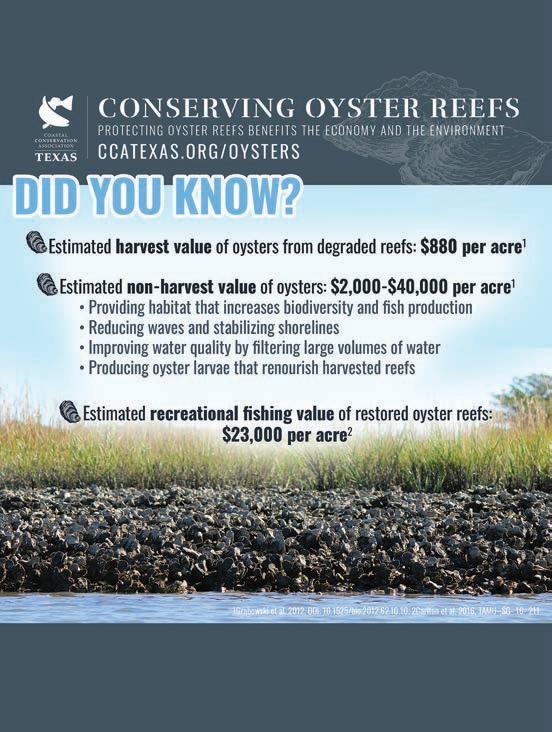







See through Deer’s Eye View is an AIpowered app that allows you to see how the animal sees! Download the app today on Apple and Google! Download Today EYES PREY of your the DEER’S EYE VIEW TSFMAG.com | 73



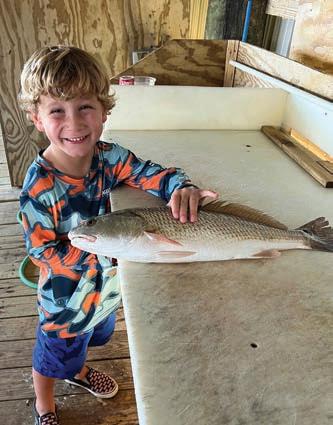
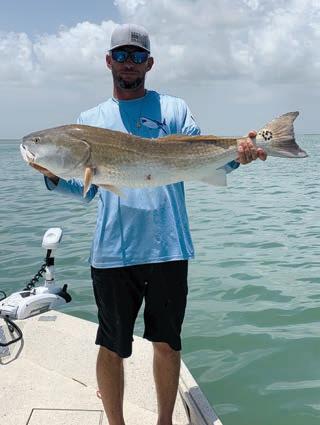
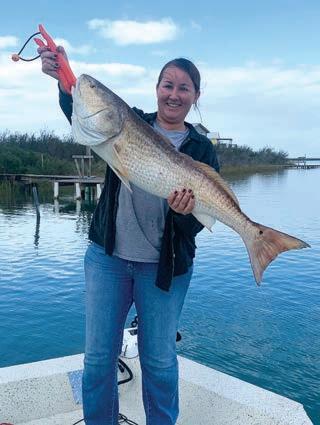
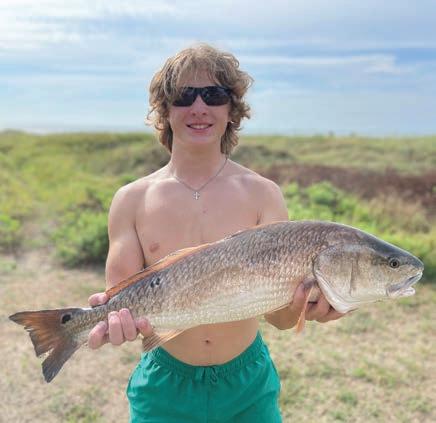
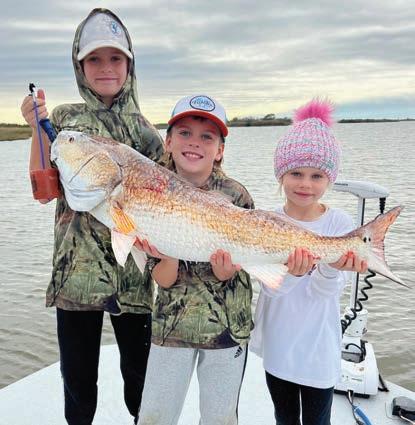
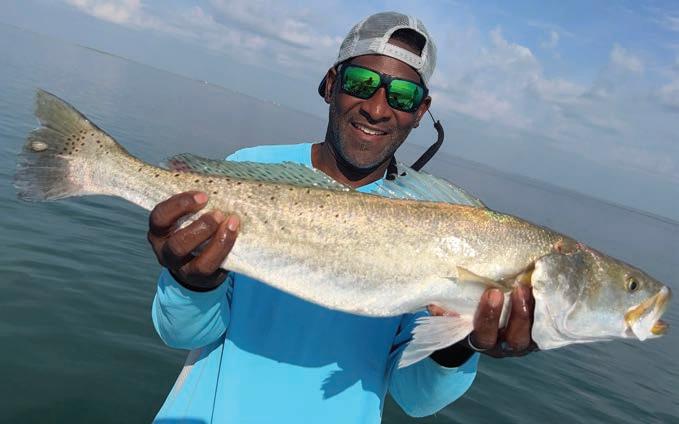 Oliver Spears Old Coast Guard Station- first redfish!
Patrick McRea Galveston surf- 28” redfish
Jaydon Thomas Shoalwater Bay- 23” redfish
Brittany Slafka Titium Tatium- 41” bull red CPR
Bradley Slafka San Luis Pass- 38” bull red CPR
Miles Willcox (middle) Dularge, LA - 41” 36 lb first redfish!
Oliver Spears Old Coast Guard Station- first redfish!
Patrick McRea Galveston surf- 28” redfish
Jaydon Thomas Shoalwater Bay- 23” redfish
Brittany Slafka Titium Tatium- 41” bull red CPR
Bradley Slafka San Luis Pass- 38” bull red CPR
Miles Willcox (middle) Dularge, LA - 41” 36 lb first redfish!
74 | May 2024
Derrick Hayes San Luis Pass - 27.75”trout

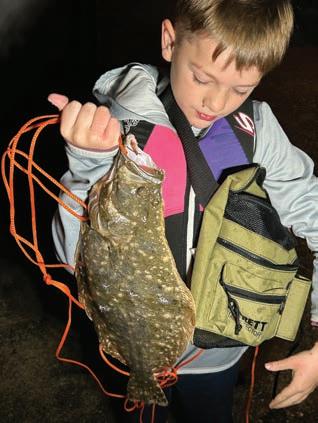

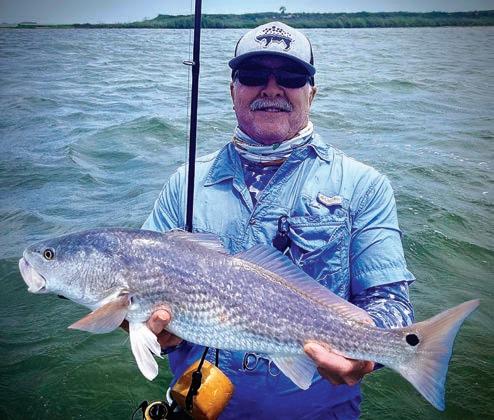

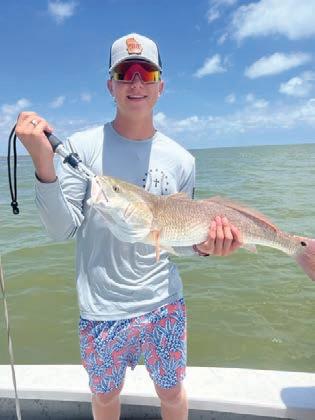
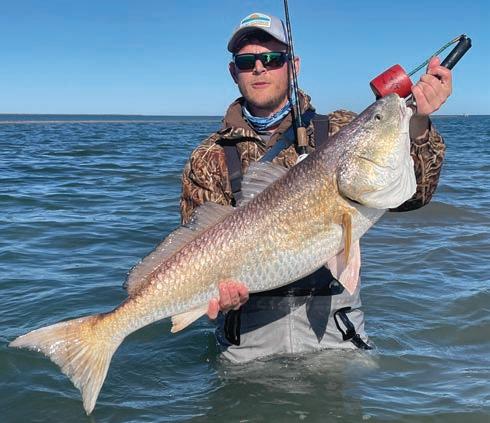


Photo Gallery Guidelines
First come – first published!
Photos are judged on artistic merit and sporting ethic displayed. No stringer, cleaning table, or hanging board images allowed. Digital images only. Adjust camera to high or best quality. All images become property of TSFMag.
Email to: Photos@TSFMag.com
Include short description of your catch with name, date, bay system, etc.
Angelica Slagle Sabine - 26.5”first fish!
John Gilbreath Laguna Madre - first flounder!
Daniel Rubio Nueces Bay- 26” redfish
Kason Kolle Espiritu Santos Bay- 28” red
Alan Zablocki Upper Laguna Madre- redfish
Nicholas Solis IV Texas City Dike- redfish
Brian Davis redfish
TSFMAG.com | 75
Marvin Gohlke III Southpass Lake- 28” red

Your Catch Counts!


Get involved.
Help manage the red snapper fishery for future generations.
At the end of each day’s trip, parties that land red snapper are strongly encouraged to report their landings via the My Texas Hunt Harvest mobile app or online. It’s fast, simple and easy!
Report online or download the free app at tpwd.texas.gov/myhunt

Each submittal is important to the management of the red snapper fishery off Texas shores and beyond. Anglers fishing from party boats are exempt as the captain reports for you.
cfish@tpwd.texas.gov
QUESTIONS?
• www.tpwd.texas.gov
Report your Red Snapper Landings

Got ideas, hints or recipes you’d like to share?
Email them to pam@tsfmag.com or send by fax:
361 792-4530
Gulf Coast


Texas Gulf Shrimp Corn Dogs
INGREDIENTS
1-1/2 lb fresh shrimp, 10-15 count, peeled & deveined
12 wooden skewers six inches length
1/2 cup flour for dredging, seasoned with salt & pepper
3/4 cup corn meal
1/3 cup flour
1/4 plus 1/8 teaspoon baking soda
1/8 teaspoon salt
1/2 tablespoon honey
3 ounces buttermilk
1/3 cup water
1/2 egg
PREPARATION
In mixing bowl, combine cornmeal, flour, baking soda, honey, buttermilk, water and egg.
Stir batter until smooth. Skewer shrimp lengthwise, starting at tail. Dredge shrimp in seasoned flour, then roll in batter and fry in 350° oil until golden brown.
Mustard Rémoulade Dipping Sauce
1/4 cup finely chopped green onion
2 tablespoon finely chopped celery
2 tablespoon finely chopped parsley
2 tablespoon horseradish
2 tablespoons ketchup
2 tablespoons Creole mustard
1 tablespoon prepared yellow mustard
1 tablespoon white vinegar
2 teaspoon lemon juice
3/4 teaspoon paprika
1 egg
1 clove garlic minced
1/8 teaspoon salt
6 tablespoon vegetable oil
Preparation
Place all ingredients, except oil, in blender and mix at high speed until blended. With blender running, slowly pour in oil in steady stream. Sauce will thicken to creamy consistency. Adjust seasonings to taste.
PAM JOHNSON
78 | May 2024
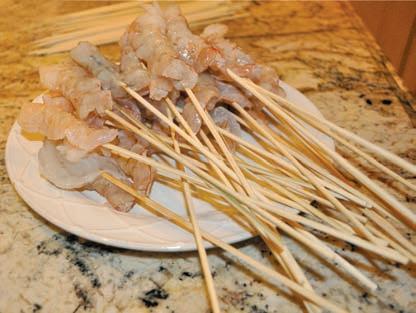





1 2 3 4 5 TSFMAG.com | 79

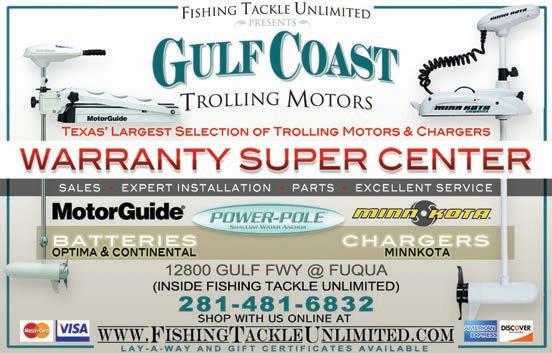



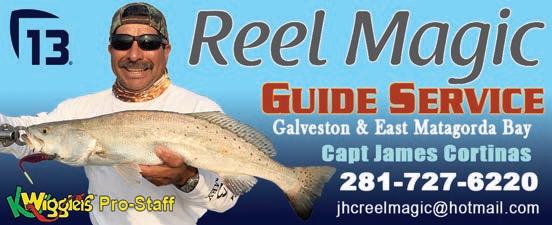



• Bay Fishing, Offshore, Floundering, Waterfowl, Dove
• Night Fishing off Lighted Pier
• Right On The Water
• Lodging with/without Meals
www.matagordasunriselodge.com
979-241-1705

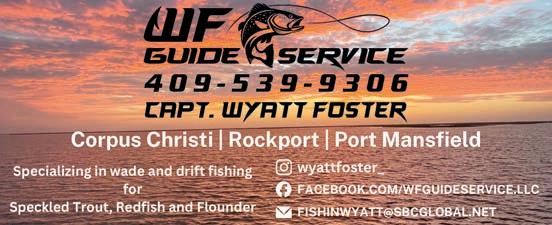
TEXAS SALTWATER FISHING HOLES
USCG Licensed Captain Stan Sloan MATAGORDA BAY Speckled Trout / Redfish
Tastic Coastal
PESCADO PARK RV PADS & BOAT STORAGE Baffin Bay near Kaufer-Hubert Boat
DAN WARD 832-860-4600 dwpb@comcast.net
832.693.4292 www.fishfcc.com Fin
Charters
Ramp
Your ad could be here! 80 | May 2024

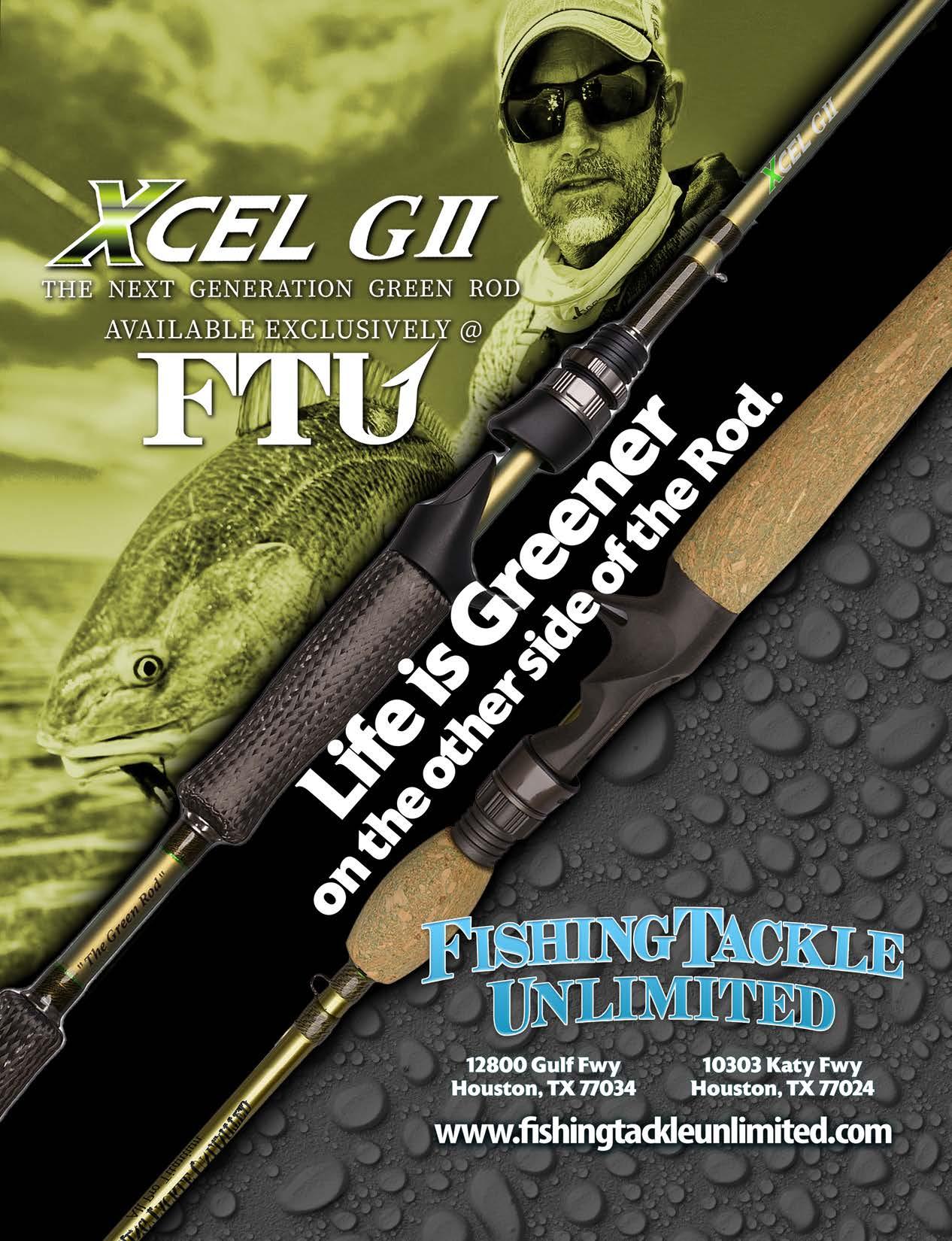

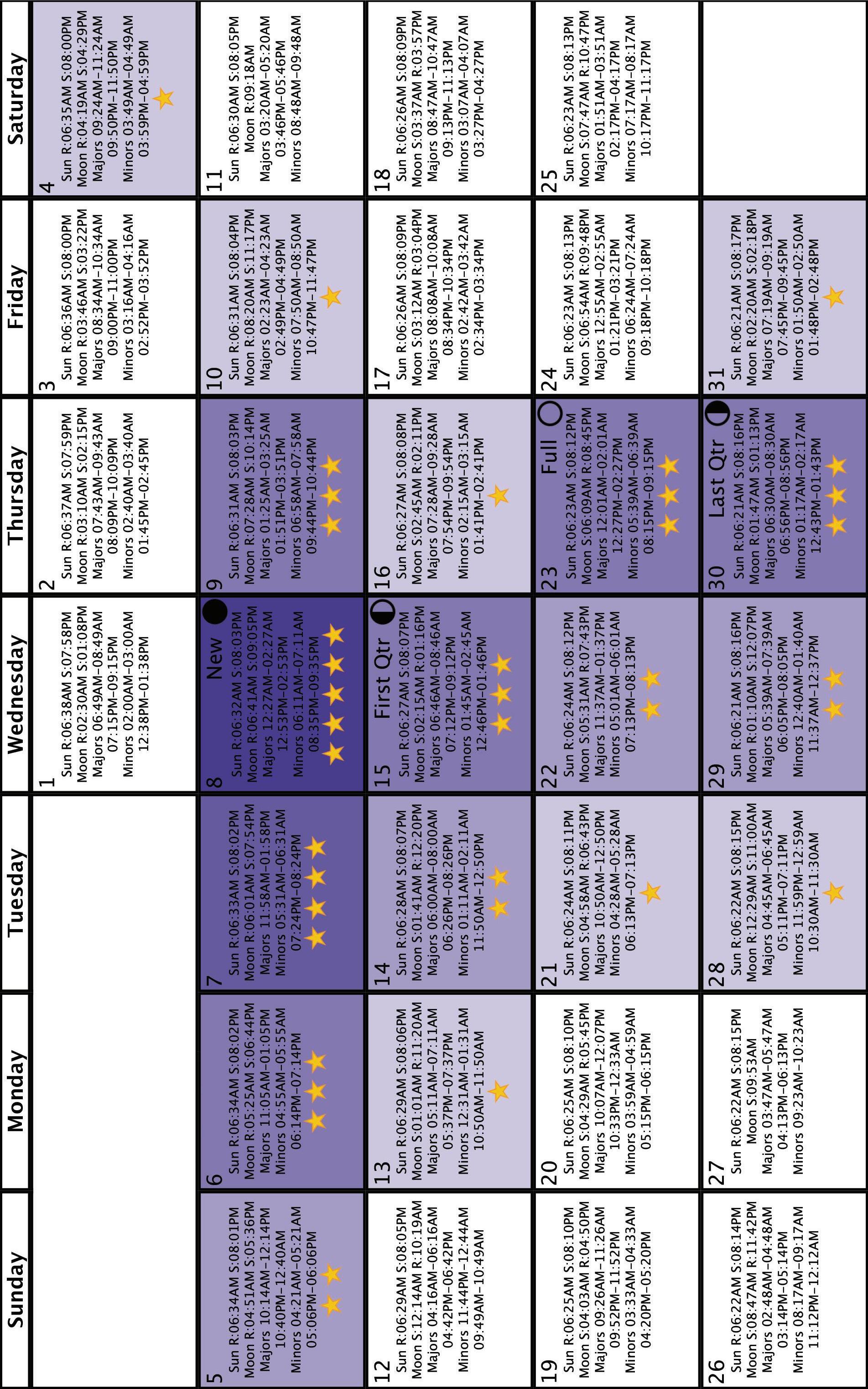

Brought to you by





Texas Saltwater Fishing Magazine l www.texassaltwaterfishingmagazine.com
Reel In Big
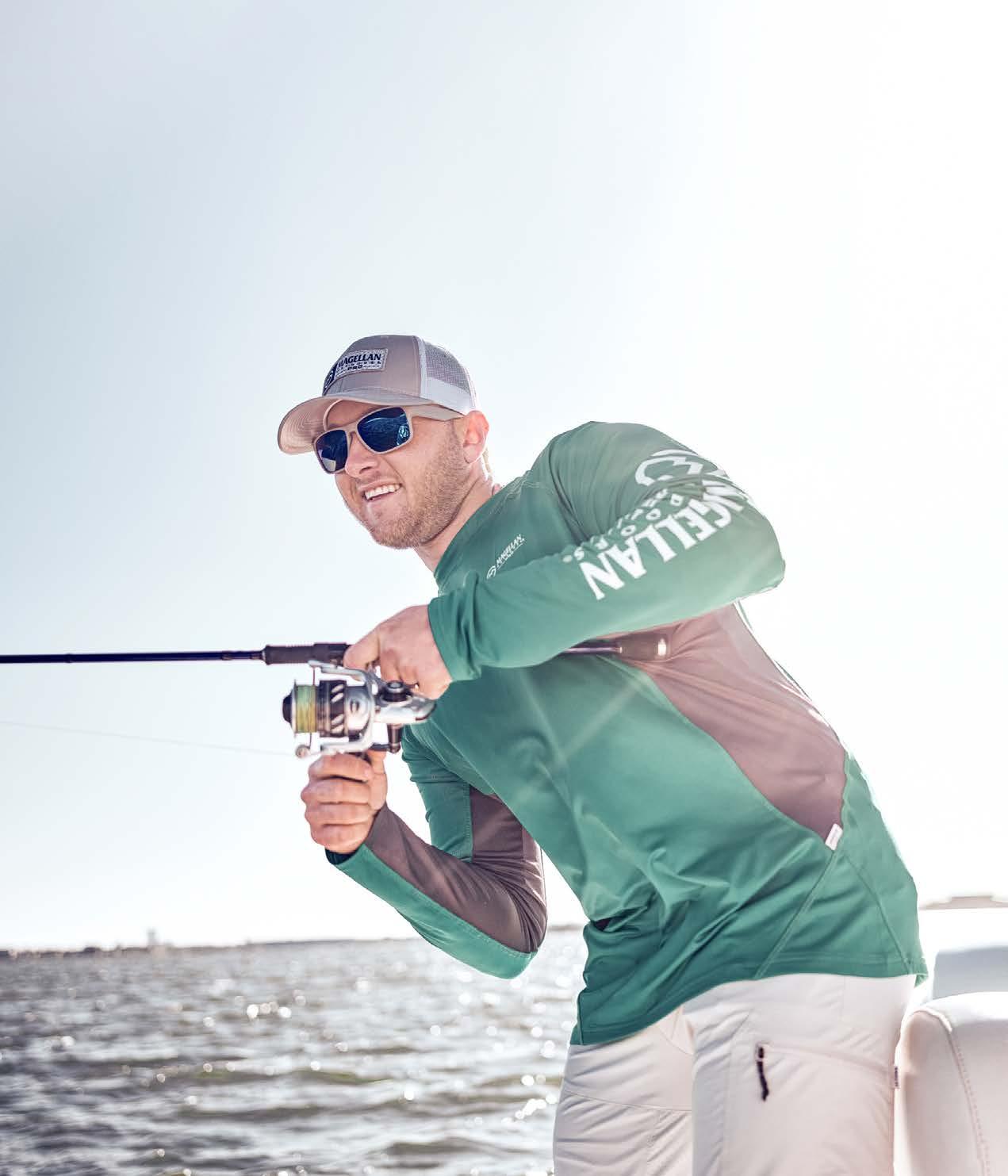
Catch the best value on top brands in fishing gear.




































































 Shannon Tompkin’s dad years ago, after a morning of catfishing. He knew where the big ones bite.
STORY BY JOE RICHARD
Shannon Tompkin’s dad years ago, after a morning of catfishing. He knew where the big ones bite.
STORY BY JOE RICHARD

 Uncle Wib in 1965 at the boat ramp after a long day, with his huge 40-horse Johnson outboard.
Uncle Wib in 1965 at the boat ramp after a long day, with his huge 40-horse Johnson outboard.








































 By Shane Bonnot
By Shane Bonnot
















 Table 1. Top ten fish species caught in TPWD gillnets from 1983-2022. Number in parentheses represent the mean number of fish caught per hour.
Photo 1– Gripping a hardhead in the manner shown reduces the likelihood of being poked by a spine.
Table 1. Top ten fish species caught in TPWD gillnets from 1983-2022. Number in parentheses represent the mean number of fish caught per hour.
Photo 1– Gripping a hardhead in the manner shown reduces the likelihood of being poked by a spine.



































































 CAPT. SHELLIE GRAY
Sequoya Janacek caught this tailing brute by sight-cast along the ICW.
CAPT. SHELLIE GRAY
Sequoya Janacek caught this tailing brute by sight-cast along the ICW.






























































 Oliver Spears Old Coast Guard Station- first redfish!
Patrick McRea Galveston surf- 28” redfish
Jaydon Thomas Shoalwater Bay- 23” redfish
Brittany Slafka Titium Tatium- 41” bull red CPR
Bradley Slafka San Luis Pass- 38” bull red CPR
Miles Willcox (middle) Dularge, LA - 41” 36 lb first redfish!
Oliver Spears Old Coast Guard Station- first redfish!
Patrick McRea Galveston surf- 28” redfish
Jaydon Thomas Shoalwater Bay- 23” redfish
Brittany Slafka Titium Tatium- 41” bull red CPR
Bradley Slafka San Luis Pass- 38” bull red CPR
Miles Willcox (middle) Dularge, LA - 41” 36 lb first redfish!











































